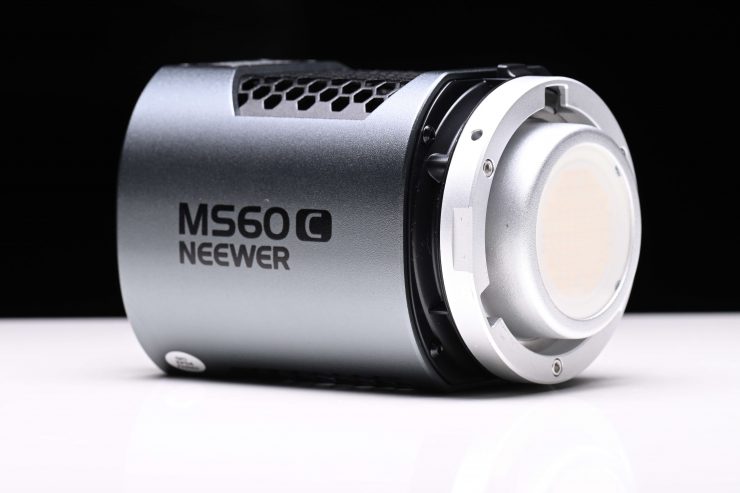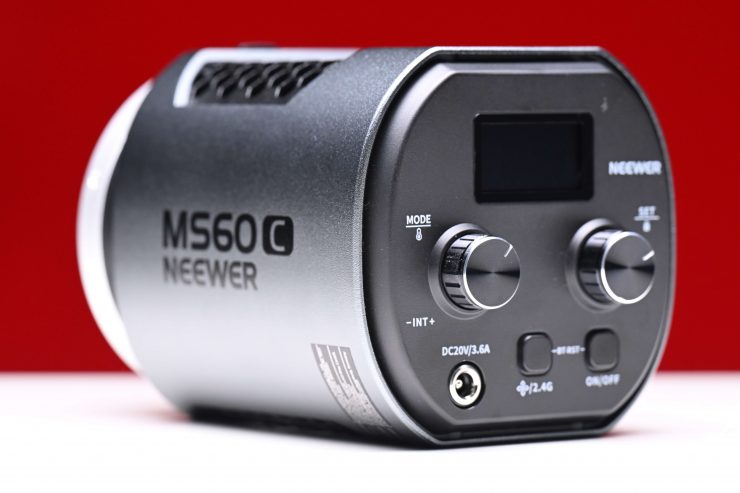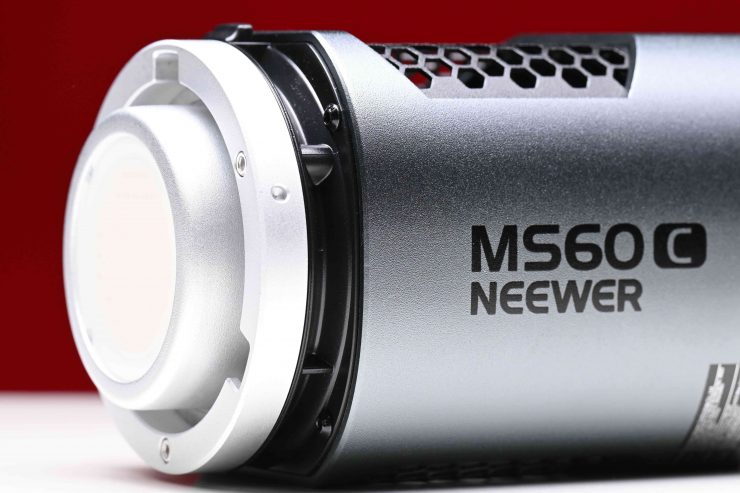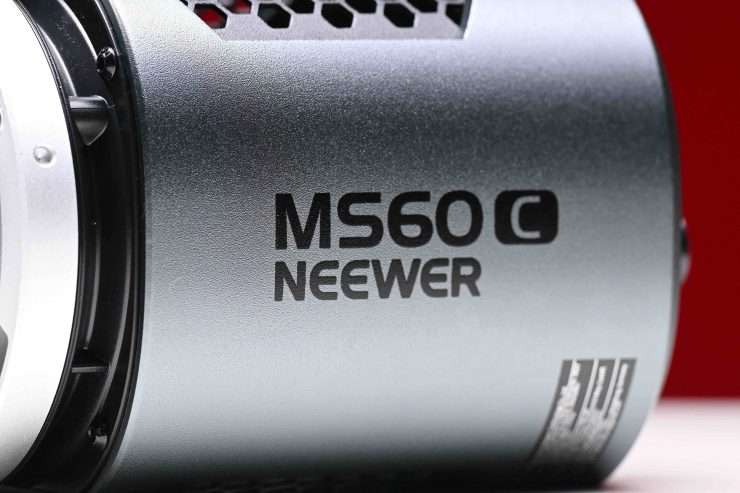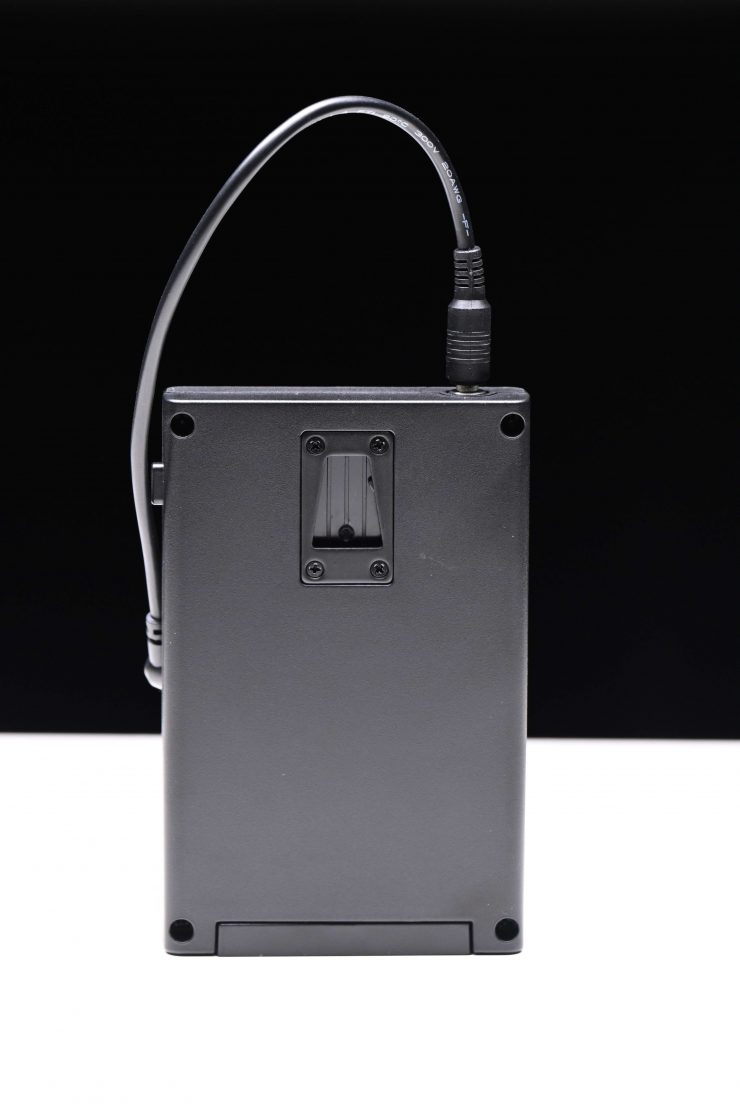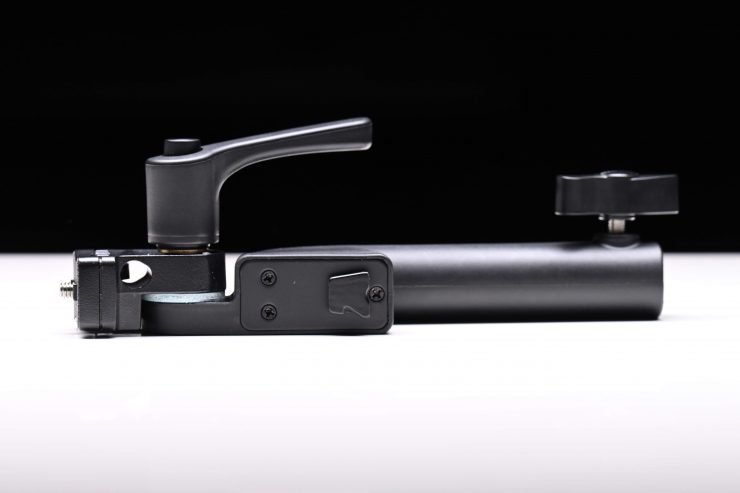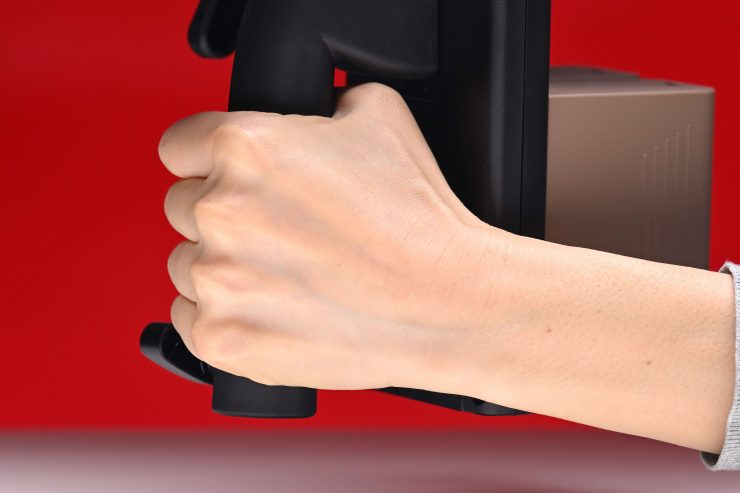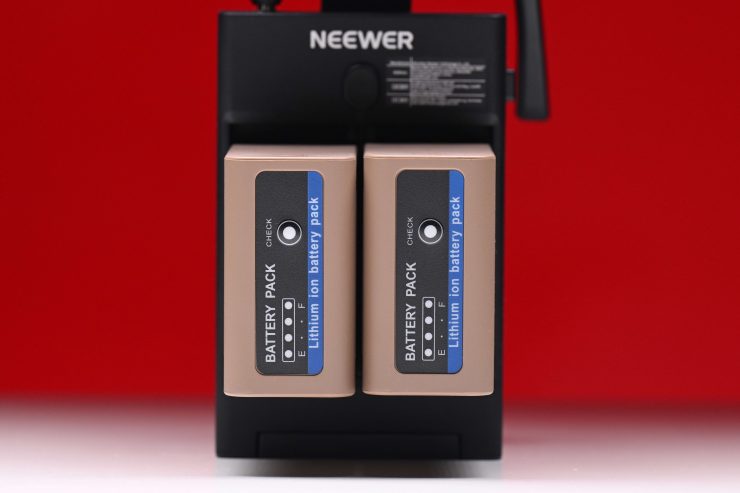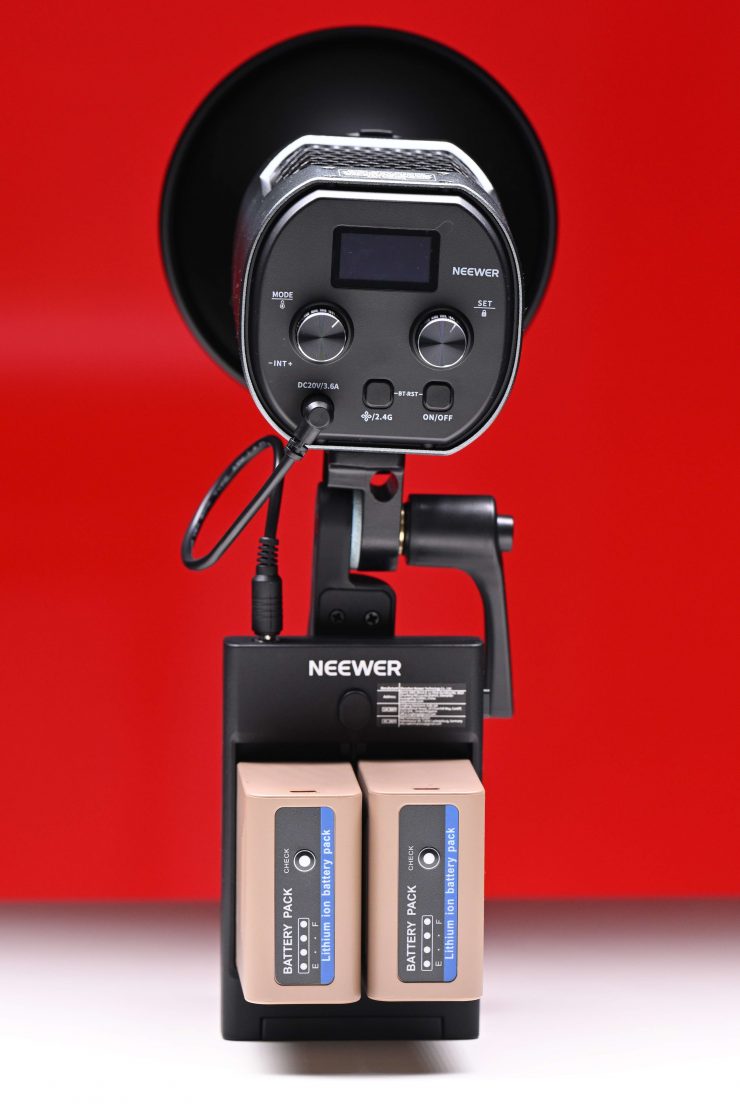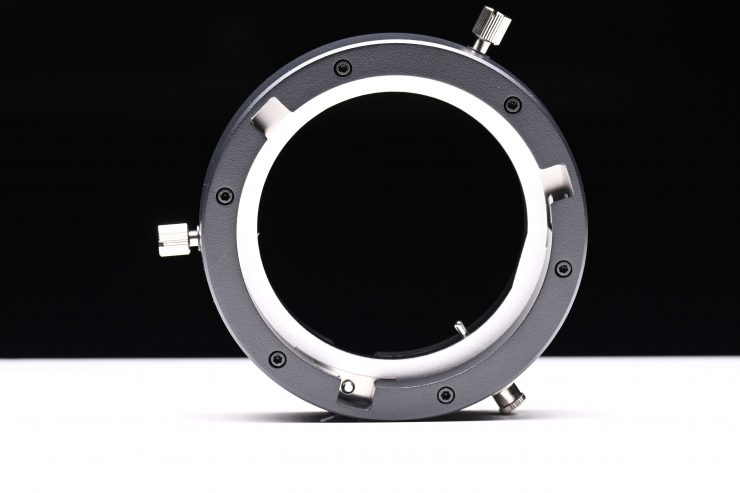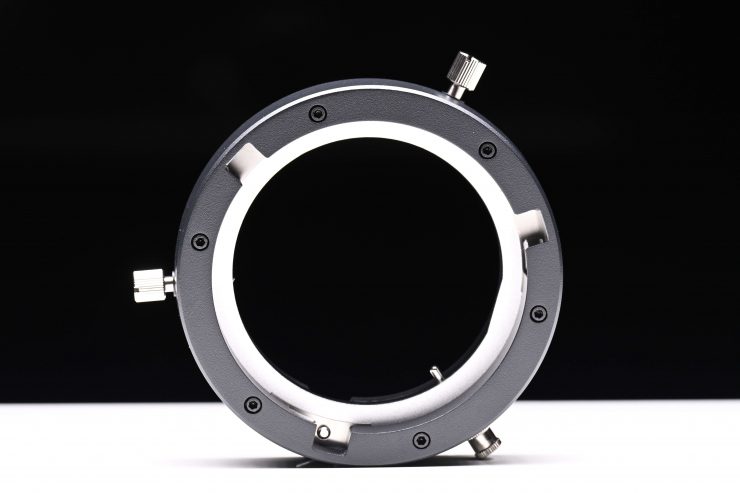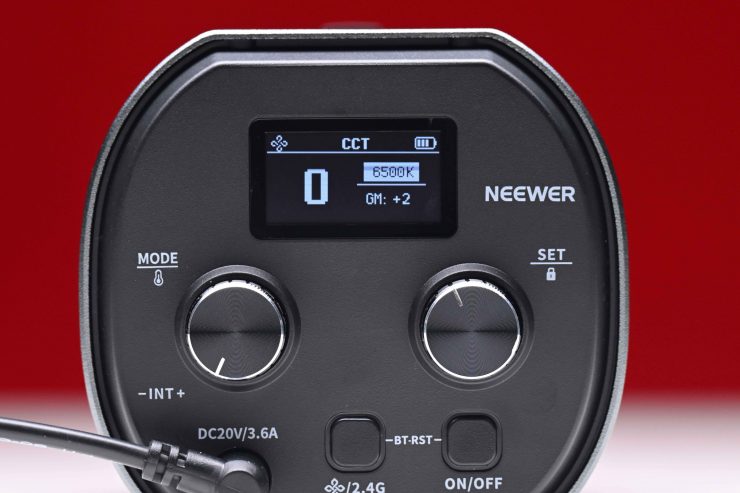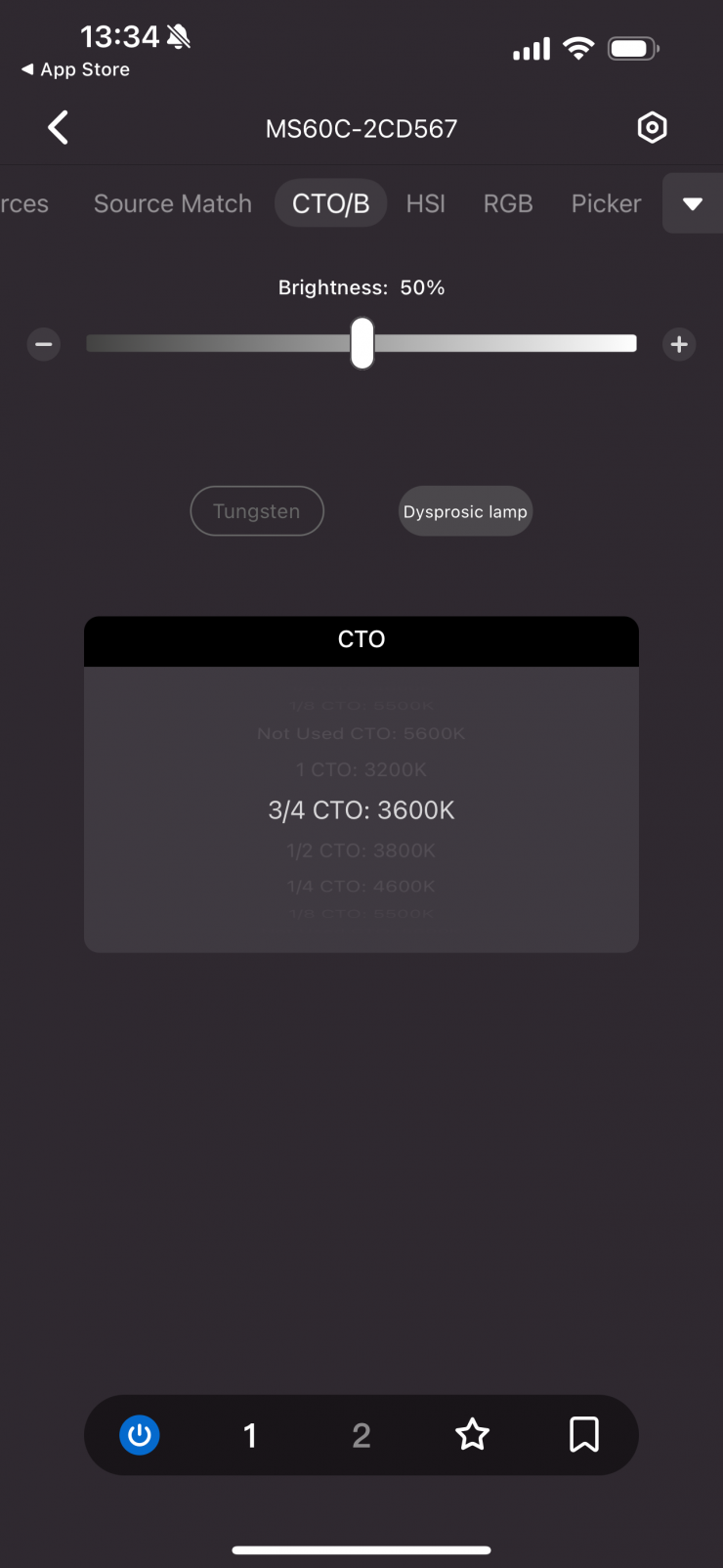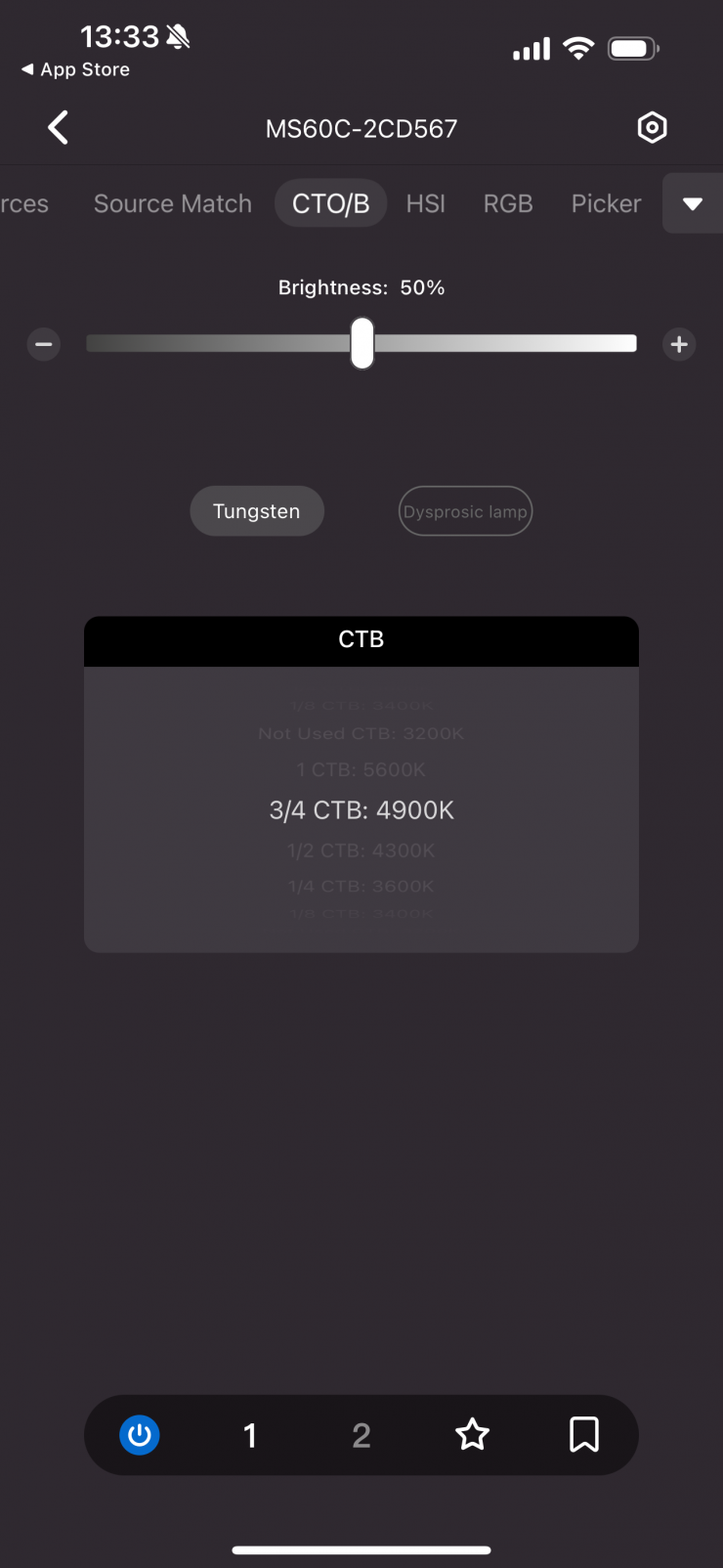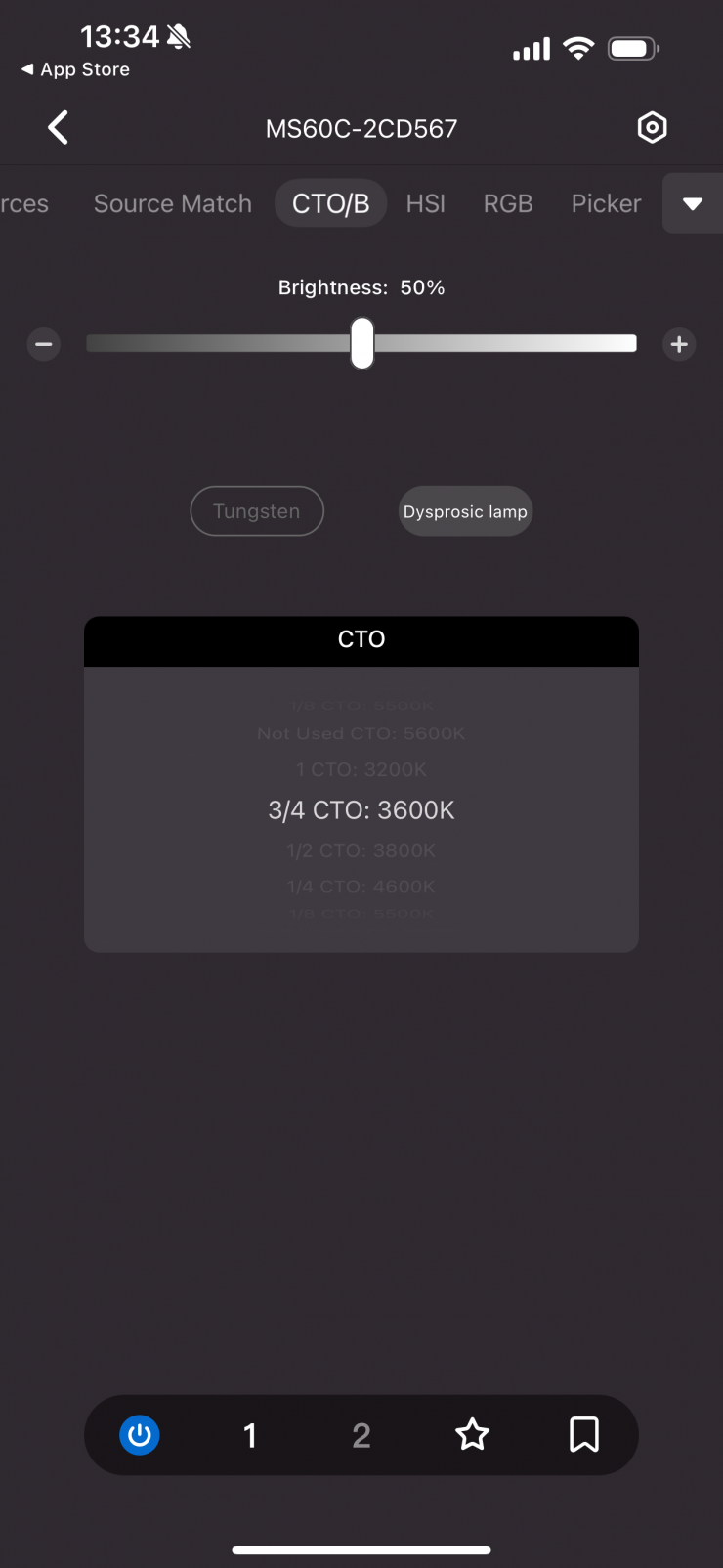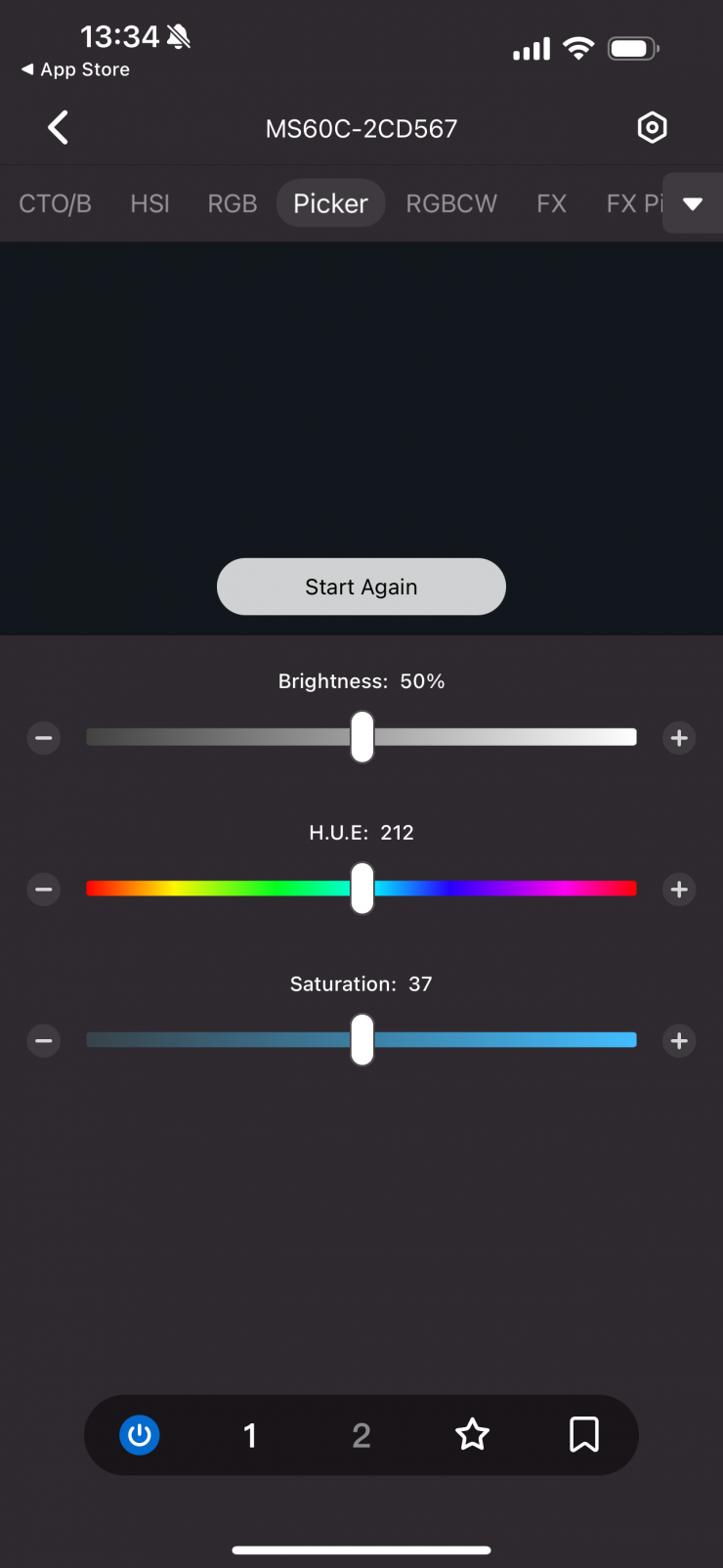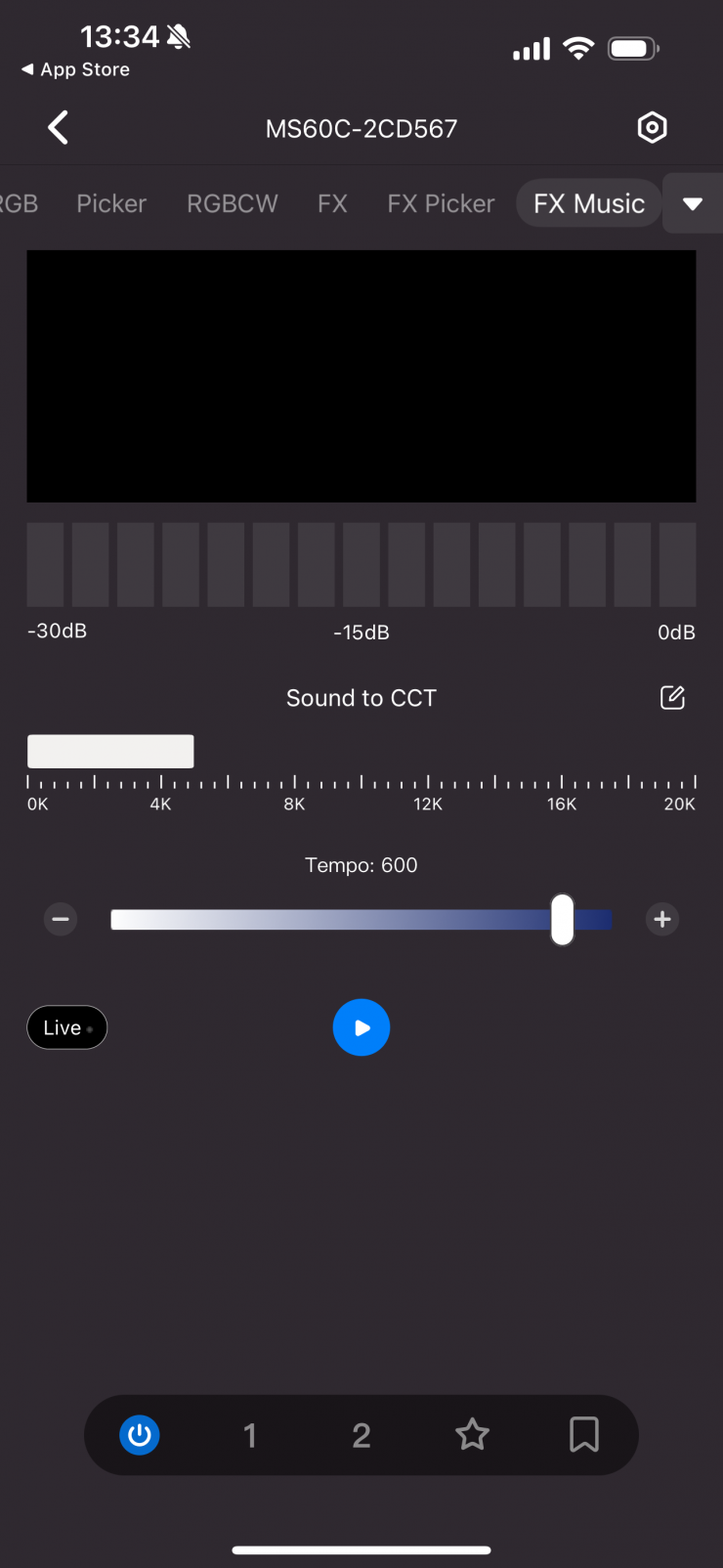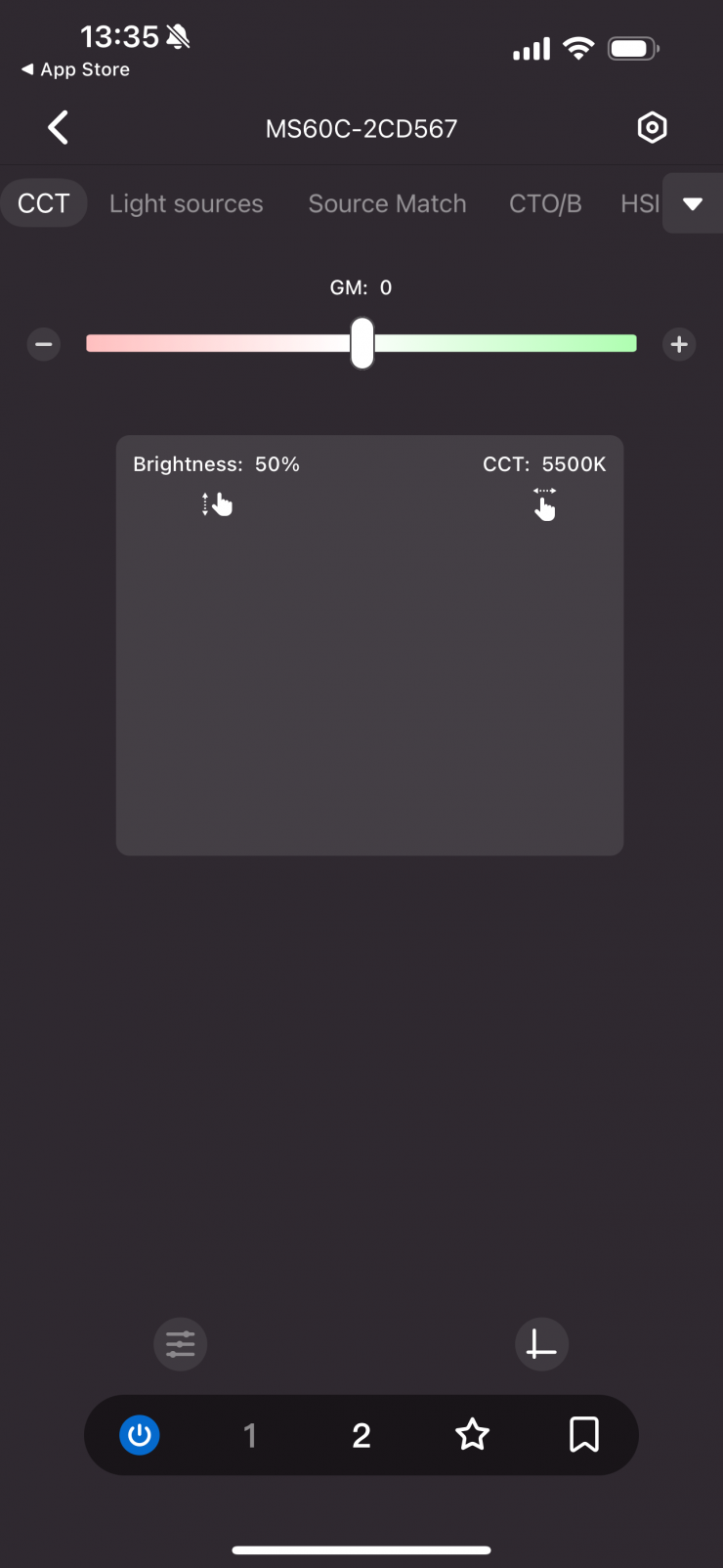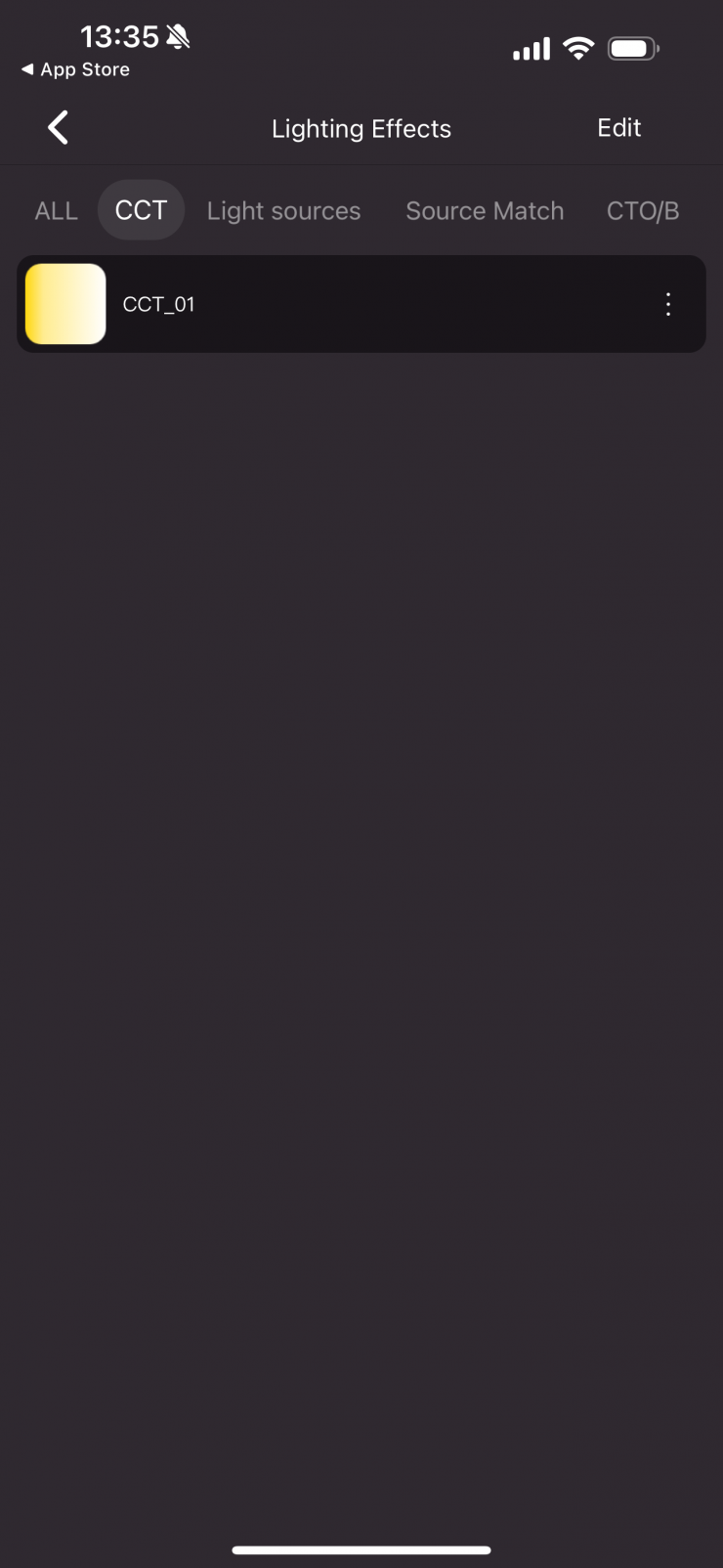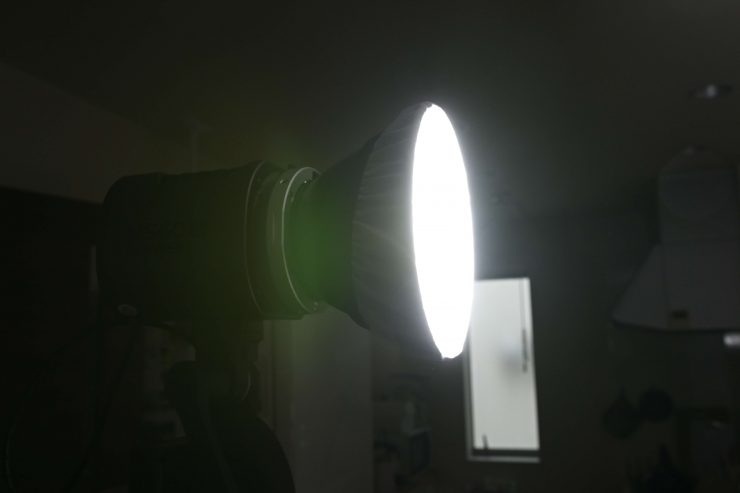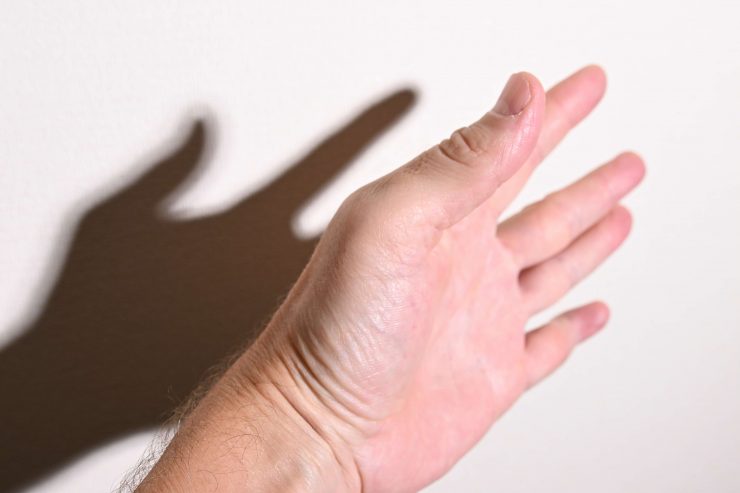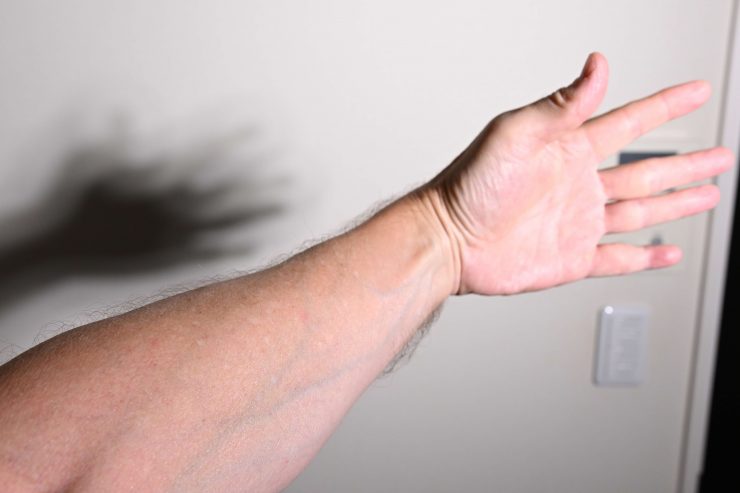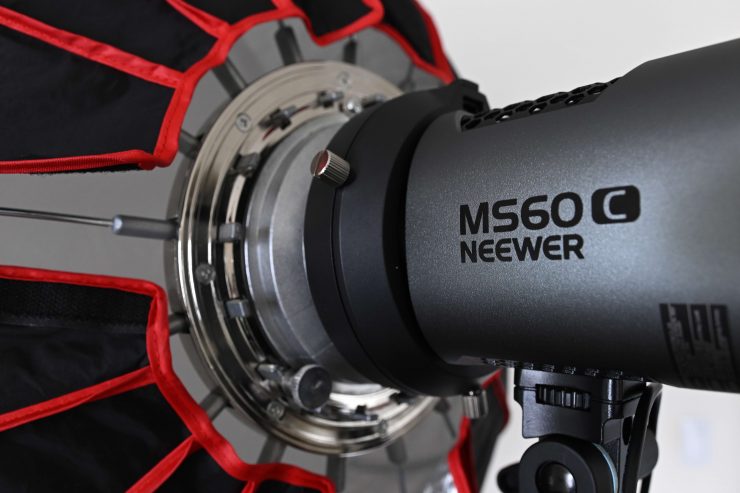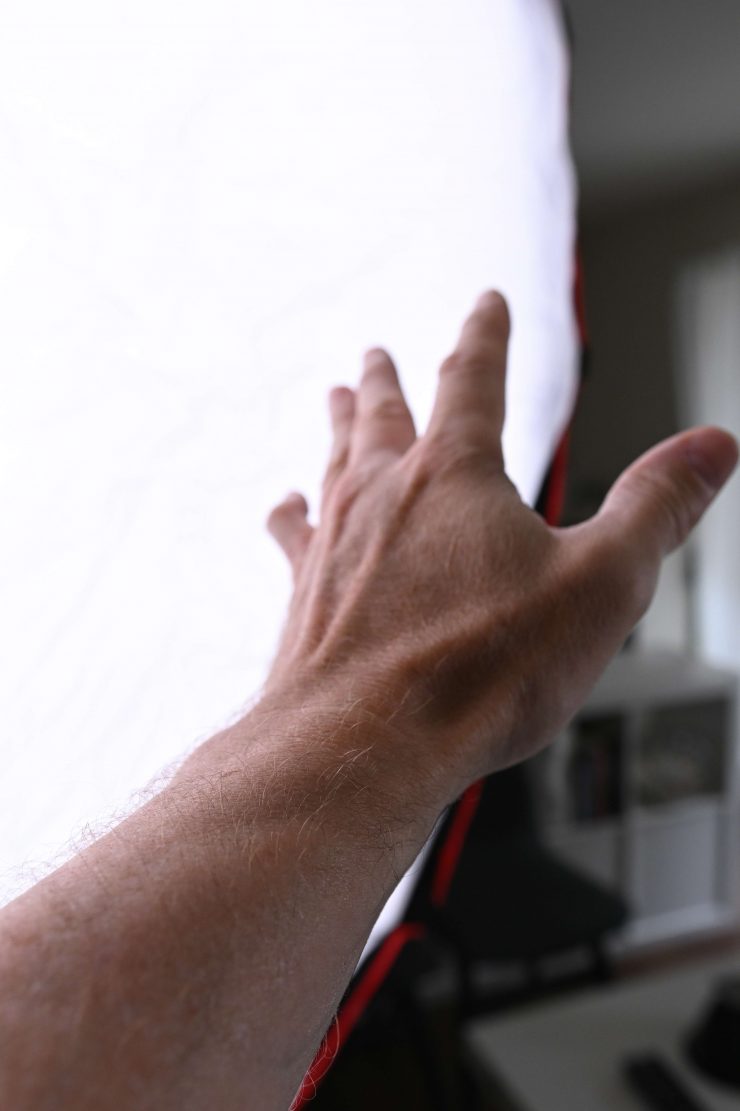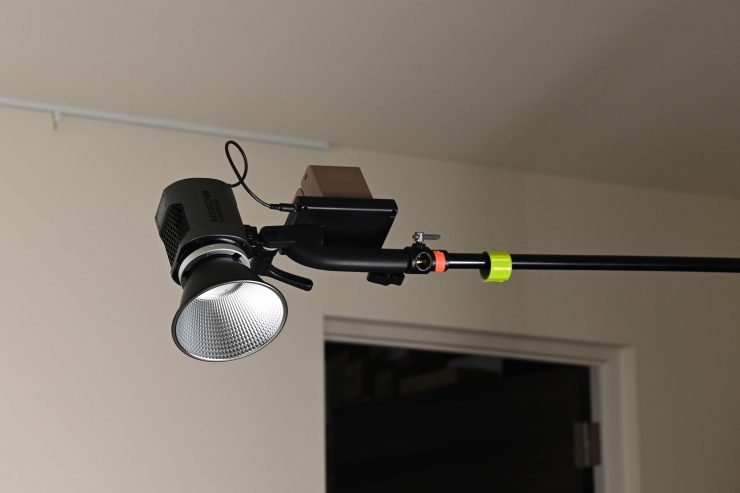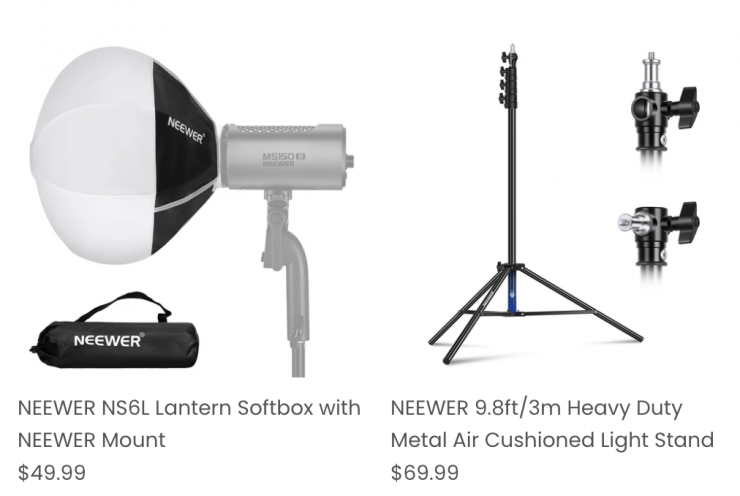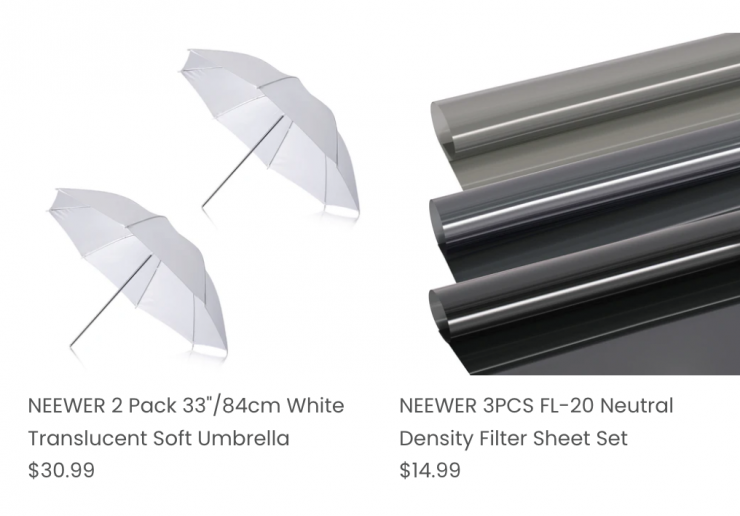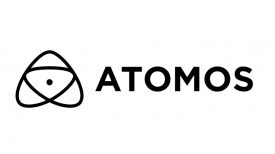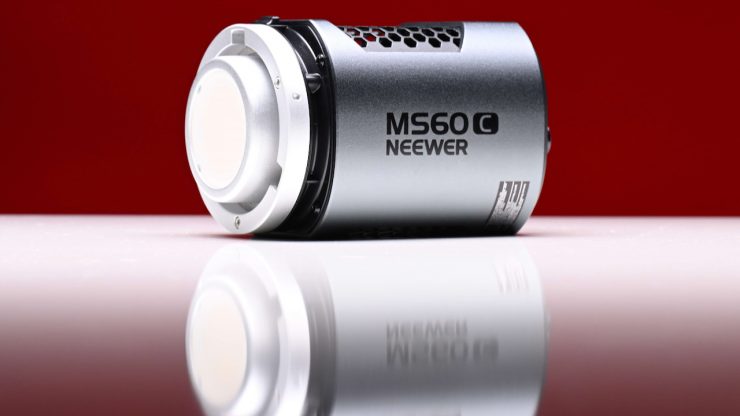
The NEEWER MS60C 65W RGBWW LED Video Light is a compact, fully color-tunable, battery-operatable, spotlight, that is compatible with lots of light modifiers.

This 60W fixture looks to be a good option if you are looking for an affordable, well-featured, and versatile COB light that doesn’t weigh much or take up a lot of space.
Key features
- For Content Creators & Vloggers
- Output: 8300 Lux at 3.3′
- 2700-6500K; RGB Mode
- AC or Battery Power
- Onboard & App Control
- CRI 97 | TLCI 98
- 17 Preset Special Effects
- Fan Cooled
- Includes Bowens Adapter & Handle
- Includes Reflector & Power Adapter
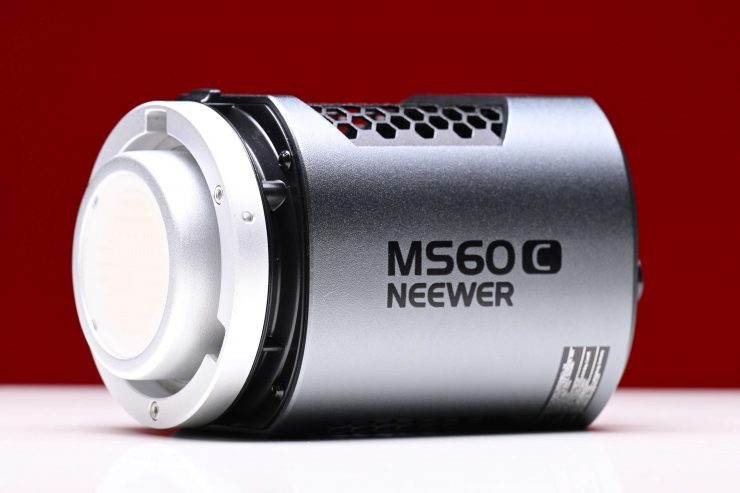
The light draws a maximum of 65W and it is CCT adjustable from 2700-6500K. It also features full +/- G/M correction. The native beam angle with no modifiers is 120 degrees.
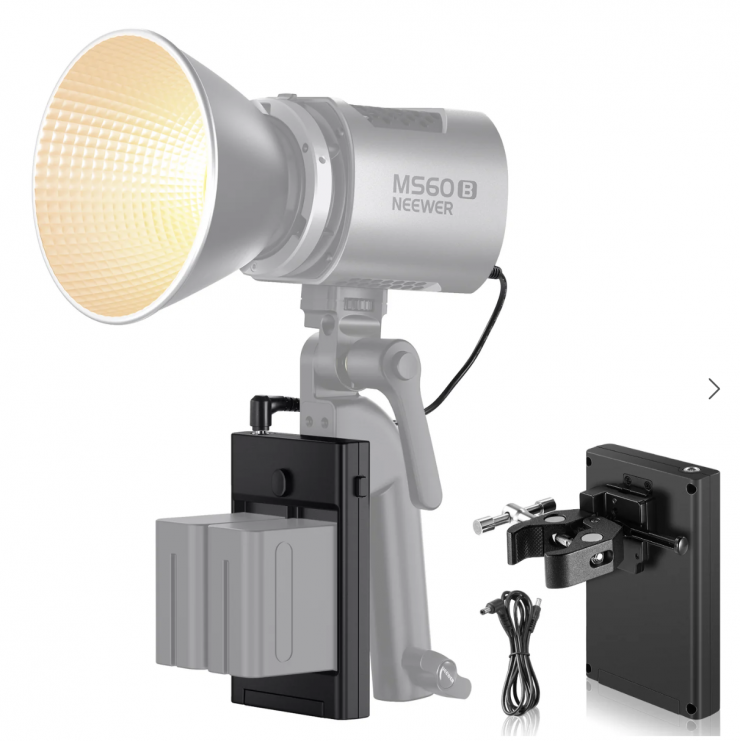
It can be run via mains power or using the included battery plate. It is compatible with the NP-F750 and NP-F970 batteries, and additionally, you could also run it from a V-mount battery (14.4V) using a D-Tap cable.
According to NEEWER, the MS150C can output 8,300 lx at 3.3′ / 1m (4400K using reflector). I will put this claim to the test later in the review.
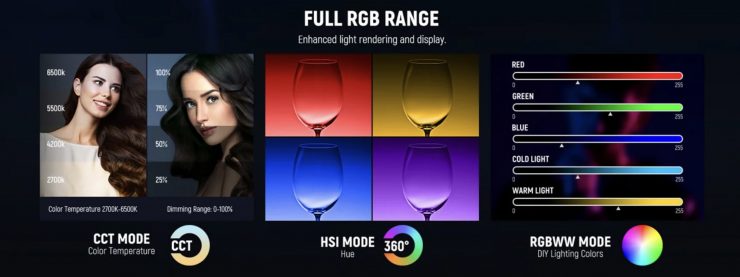
The MS150C has the usual assortment of operating modes such as CCT Mode, HSI Mode, RGBWW Mode, Source Mode, and FX Music.
Concept
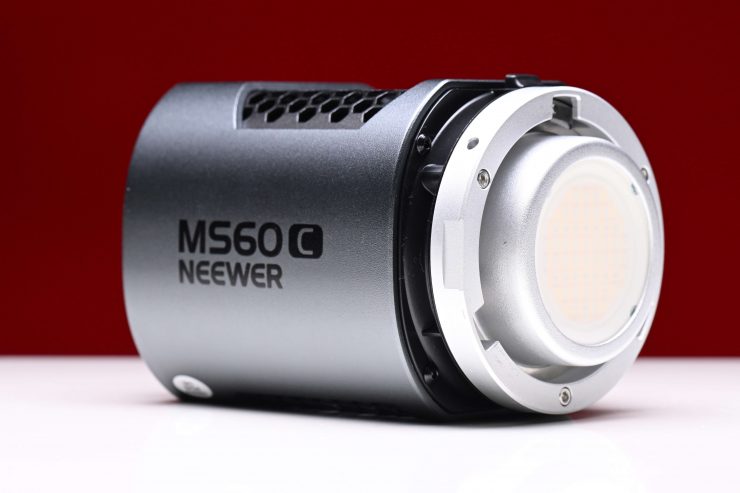
The concept behind the MS60C was to come up with an inexpensive, lightweight, versatile, full-color lighting source that could be used for a variety of different applications.
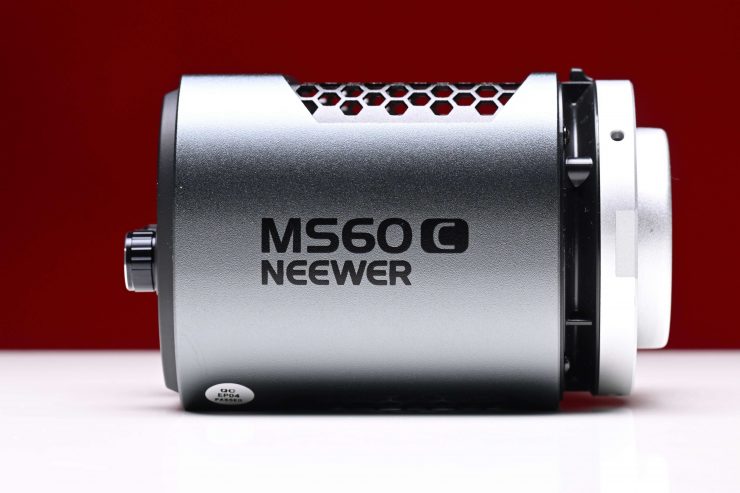
The MS60C looks similar to most other spotlights with a similar power draw that are on the market.
RGBWW
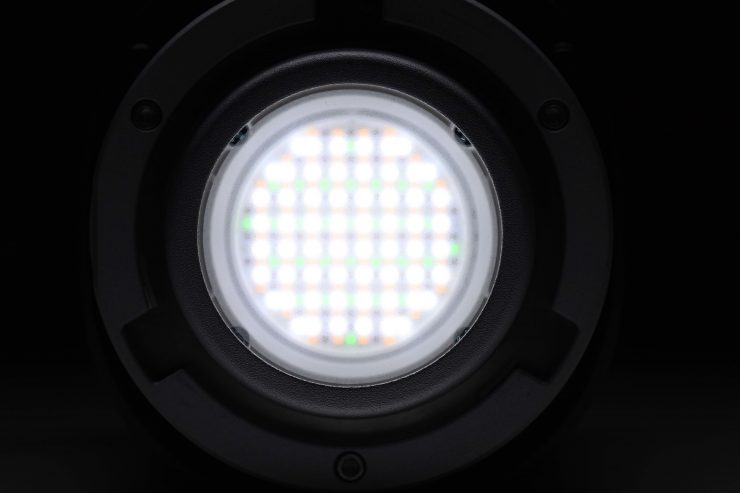
The light utilizes RGBWW, but it only has an adjustable CCT range of 2700-6500K which is pretty limiting.
RGBWW is different from other lights that we have seen before such as the Prolycht Orion 675 FS and ARRI Orbiter that use RGBACL. The Orion 675FS and Oribiter don’t use any white LEDs, instead, they are mixing all of those different color LEDs to produce white light. Hive Lighting has also been using 7 LED-chip blending. Instead of the traditional 3 colors, Hive uses red, amber, lime, cyan, green, blue, and sapphire. The advantage RGBACL has over RGBWW is that it is capable of giving you a larger CCT range and it can produce more saturated colors with more output. RGBWW lights tend to struggle to create saturated colors like yellow and they don’t always have as much output when generating saturated colors. They can also have a large drop-off in output at different CCT settings.
There is a lot of debate and argument over what is better when it comes to RGB lighting engines. One company will tell you that RGBACL is better, while another will tell you that RGBWW is better. I don’t have any horses in this race, so I am not influenced by what lighting companies say. All my reviews are based on data and facts, and every light gets the same unbiased treatment regardless of who makes it or how much it costs.
I am not a fanboy of any lighting company that is going to give you a biased assessment of a light. I have seen, used, and reviewed hundreds of lights over the years so I think I have a pretty solid background in giving you a professional opinion that isn’t influenced by marketing hype.
Build Quality
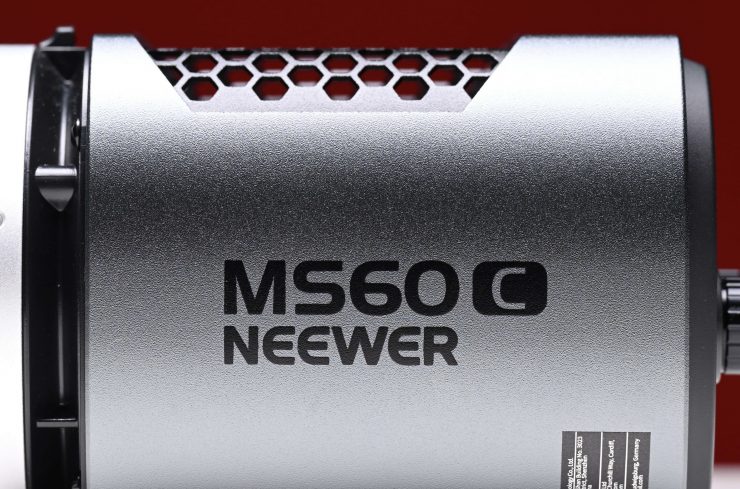
The overall build quality of the MS60C is pretty good considering how lightweight and affordable it is. The casing of the light is reasonably robust and it feels like it could withstand some punishment.
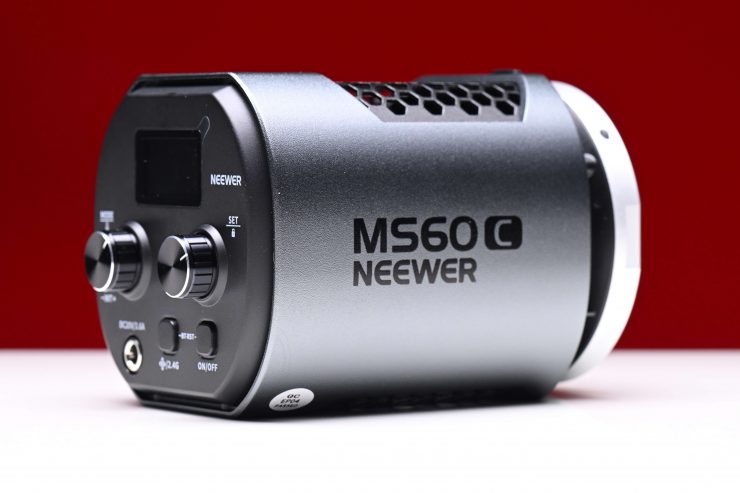
Lights like this were arguably not primarily designed to stand up to the rigors of rental house use as they are field use and are probably more suited to content creators and owner-operators.
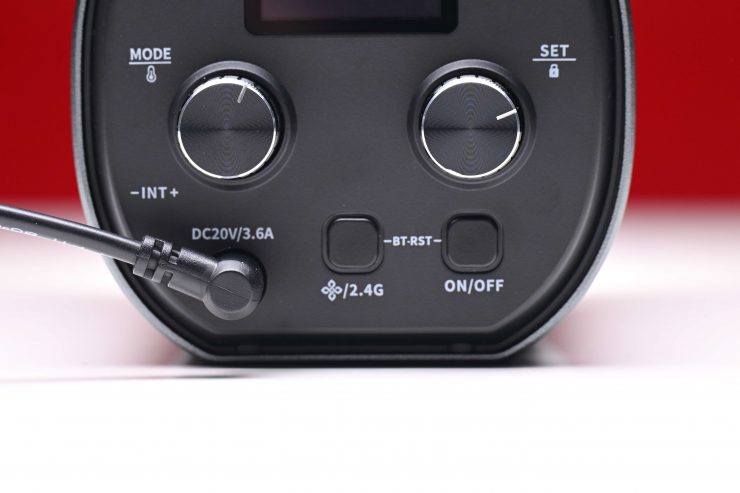
The dials and buttons are ok and they have a tactile feel to them, but they are made out of hard plastic material.

The included battery plate is made from a hard composite material. It is lightweight and it attaches directly to the light’s mounting bracket.
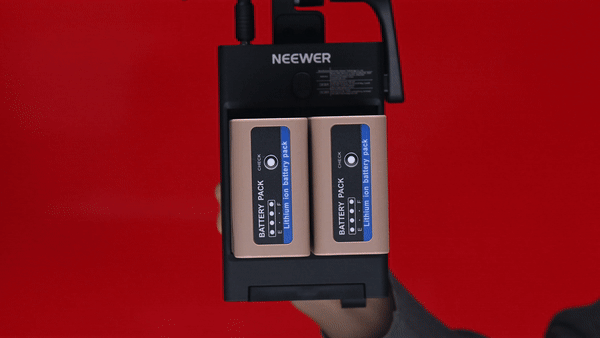
While it does lock in there is some wobble once it is attached.

The mounting bracket that you can use to attach the light to a light stand or to handhold it is decent enough and everything locks down securely.
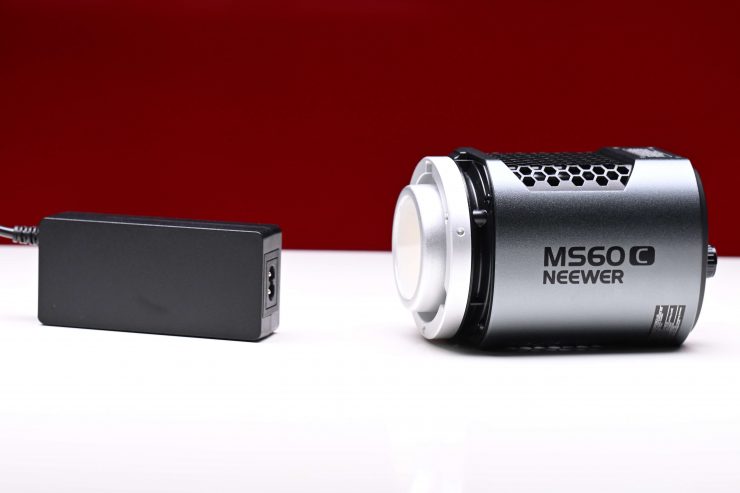
The power supply is nicely made, but it only features a regular DC connector that doesn’t lock.
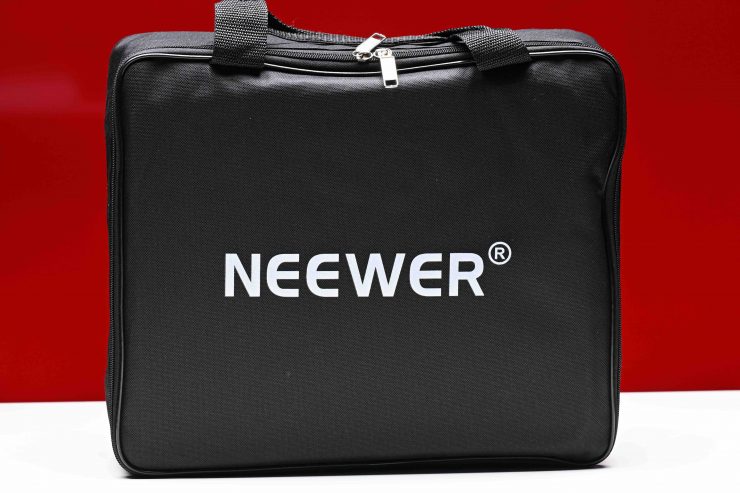
The light does come in a soft bag with some foam cutouts. The quality of the bag is so-so, but it comes with the light so you can’t complain!
COB

Quite a few LED lights on the market, including the MS60C, are using variations of COB technology. COB stands for “Chip On Board” where multiple LED chips are packaged together as one lighting module. The advantage of COB LEDs being multi-chip packaged is that the light-emitting area of a COB LED can contain many times more light sources in the same area that standard LEDs could occupy. This results in a greatly increased lumen output per square inch.
The first caveat with COB LEDs is that they produce a ton of heat and that heat needs to be effectively dispersed. The second caveat is that you will usually need to diffuse them as they are very bright to look at and unsuitable for directly lighting talent. The trouble is if you use them with diffusion, such as a softbox, you are going to lose a ton of output because that output is coming from a small source. With a lot larger source, say a 2×1 panel, you don’t lose as much output.
Weight & Size
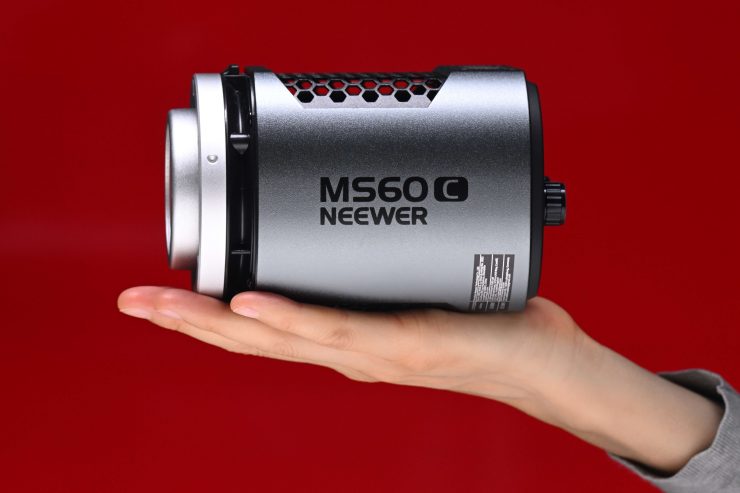
The NEEWER MS60C is just 15cm / 5.9″ long and weighs just 700g / 1.54 lbs. The separate power supply weighs 295g / 0.65 lbs. Its compact size and low weight make it a good option for anyone who is traveling.
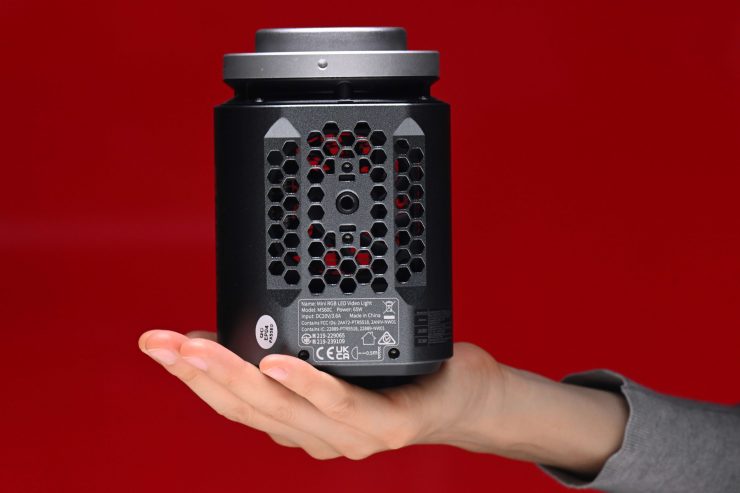
So how does this weight compare to other similar style lights? Below you can see:
| TOTAL WEIGHT | |
| NEEWER MS60C | 700g / 1.54 lbs (Fixture) |
| Nanlite Forza 60C RGB LED Monolight | 800g / 1.8 lbs |
| Sirui C60R RGB LED Monolight | 925g / 2 lb |
| LituFoto U8R RGB LED Monolight | 250g / 0.6 lb (Fixture) |
| COLBOR Wonder W60R RGB LED Monolight | 345g / 0.8 lbs (Fixture) |
| Zhiyun MOLUS X60RGB RGB LED Monolight | 319g / 0.7 lbs (Fixture) |
If you look at the weight comparison above, you can see that the NEEWER is a little bit lighter than the Nanlite Forza 60C RGB and Sirui C60R RGB LED Monolight.
Mounting
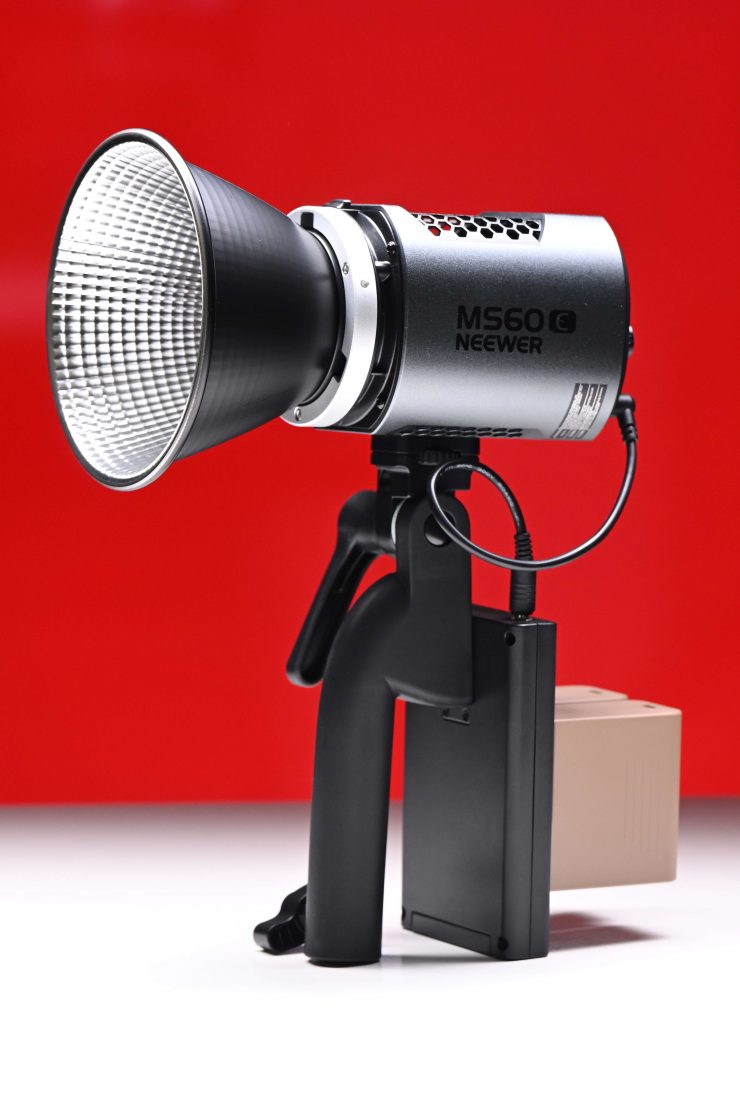
As I mentioned earlier, the NEEWER MS60C mounts directly to a combo light stand/holder.

It attaches using a 1/4-20″ thread and locking pins.
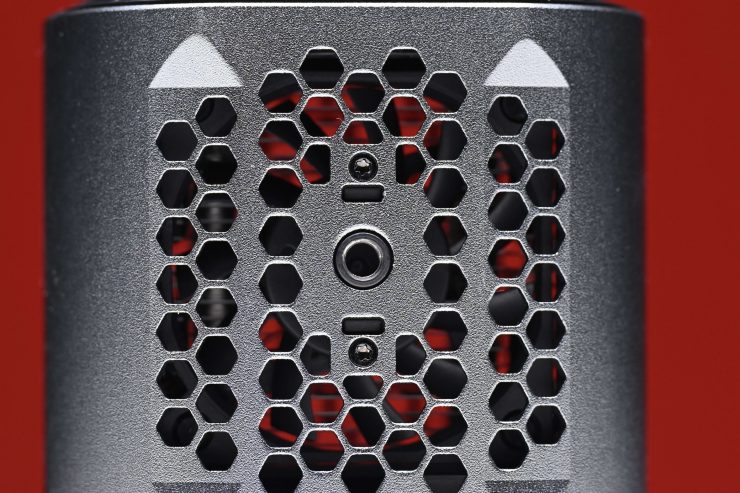
There is a 1/4-20″ thread on the bottom, so you could mount it in other ways if need be.
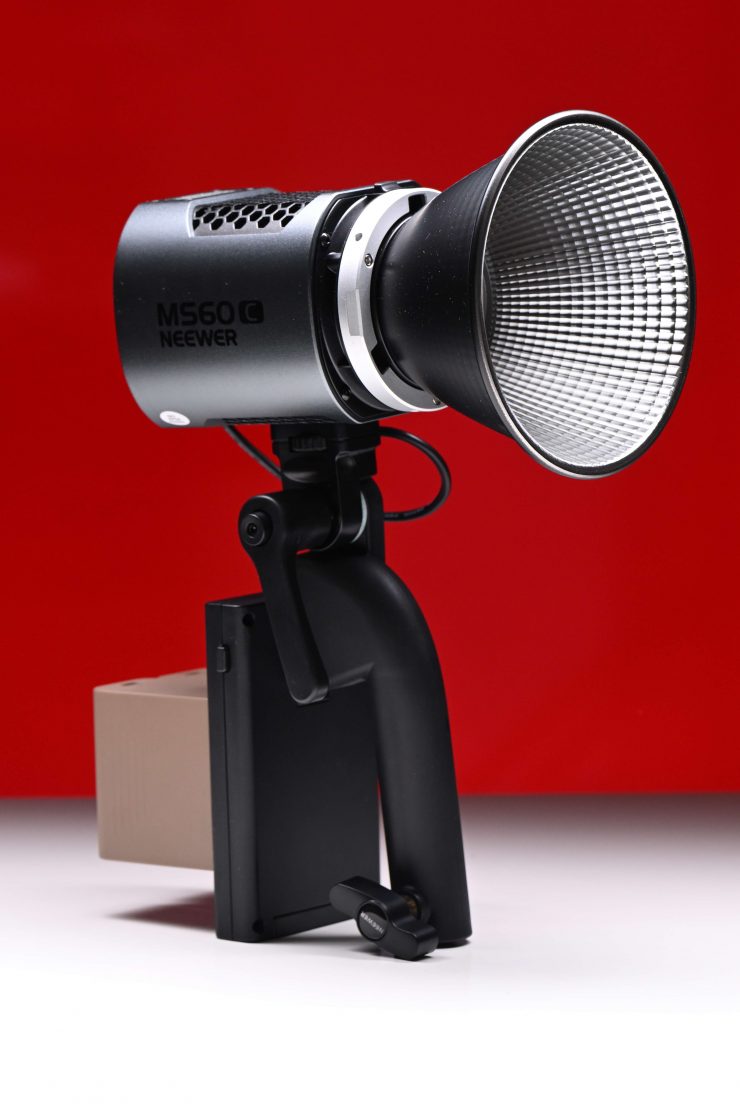
The mounting bracket is reasonably robust and it certainly capable of locking the light head down securely even when attaching larger-sized lighting modifiers.

The mounting bracket also features a quick-release mechanism to attach the battery plate that comes standard with the light.
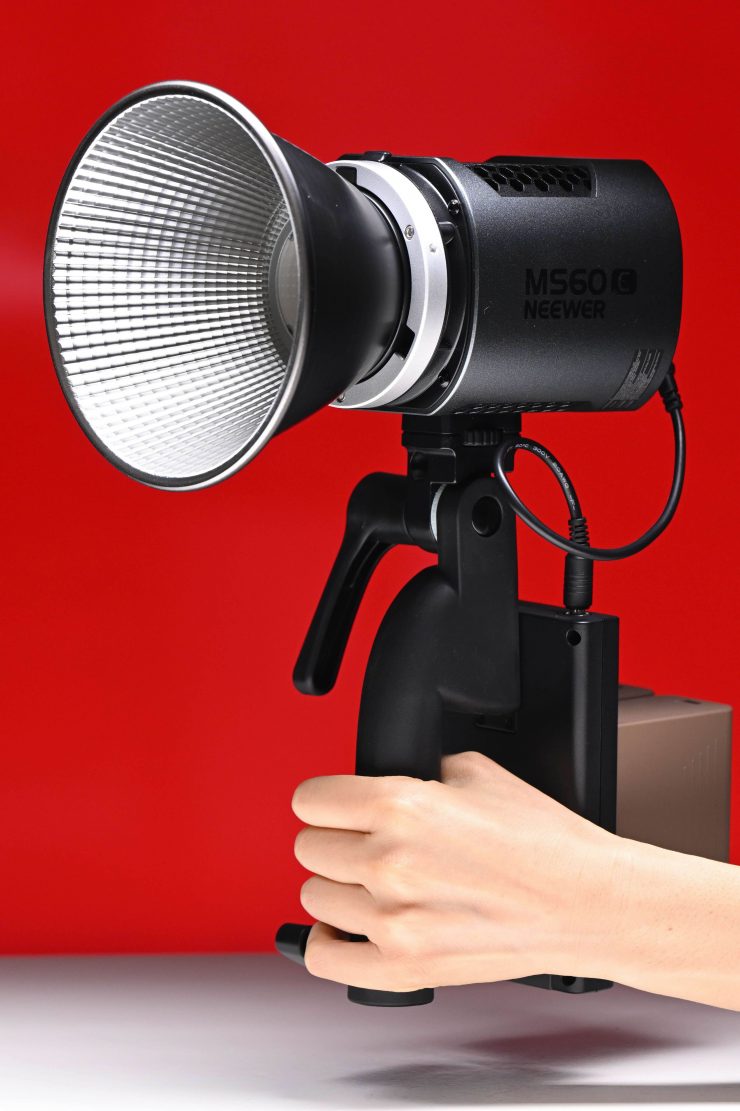
Now, because of the design, it can make it very hard to actually hold, as the battery plate ends up being too close to where you grasp it.
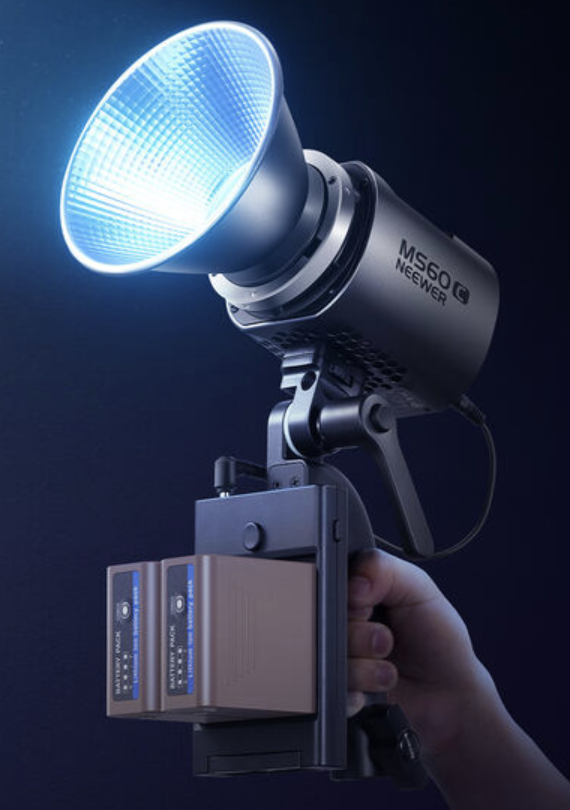
To avoid this from happening, it is better if you reverse the handle so that the battery plate is facing toward the front.
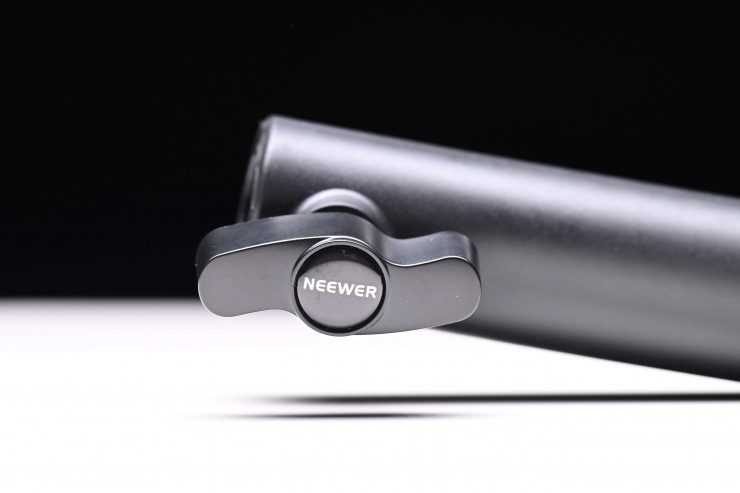
Unfortunately, there aren’t two holes on the mounting bracket so you can’t mount the light in multiple ways which is a pity given its low weight.
Power Draw
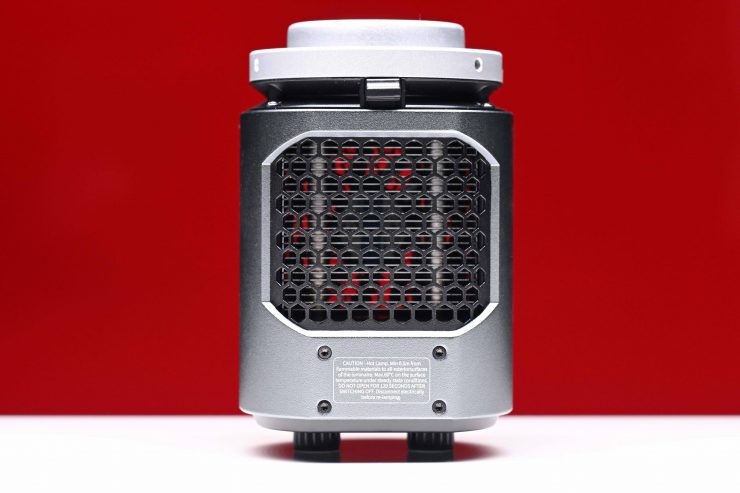
The NEEWER MS60C draws a maximum of 65W.
So how does this compare to some of the competition? Well, below you can see:
| POWER DRAW | |
| NEEWER MS60C | 65W |
| Nanlite Forza 60C RGB LED Monolight | 88W |
| Sirui C60R RGB LED Monolight | 60W |
| LituFoto U8R RGB LED Monolight | 60W |
| COLBOR Wonder W60R RGB LED Monolight | 60W |
| Zhiyun MOLUS X60RGB RGB LED Monolight | 60W |

As I mentioned earlier in the review, the NEEWER MS60C can be powered via 100 to 240V AC power or from Sony NP-F batteries using the included dual battery plate.
You can also run it via a V-mount battery if you have an optional D-Tap cable.
With a power draw of just 65W, it arguably would have been nice to have seen a USB-C input so you could run it via. power bank or similar.
How does it stay cool?
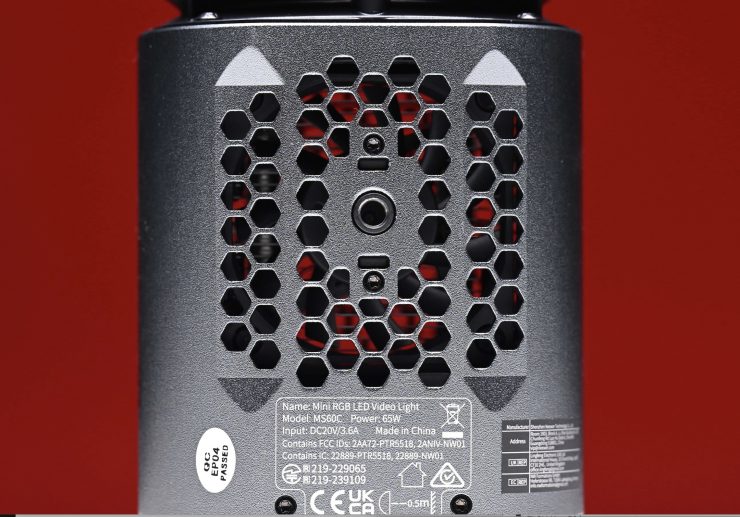
COB lights get very hot, and keeping them cool is not an easy task. Using fans is the best solution, but the caveat with fans is that they can create noise.
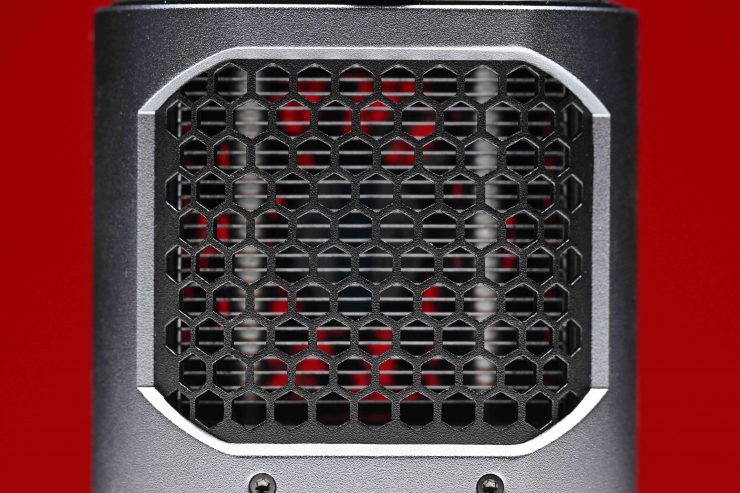
The NEEWER MS60C is essentially a COB attached to a large cooling unit that features a fan.
NEEWER doesn’t give you any options for changing the fan speed, however, the fan is pretty quiet.
Mount
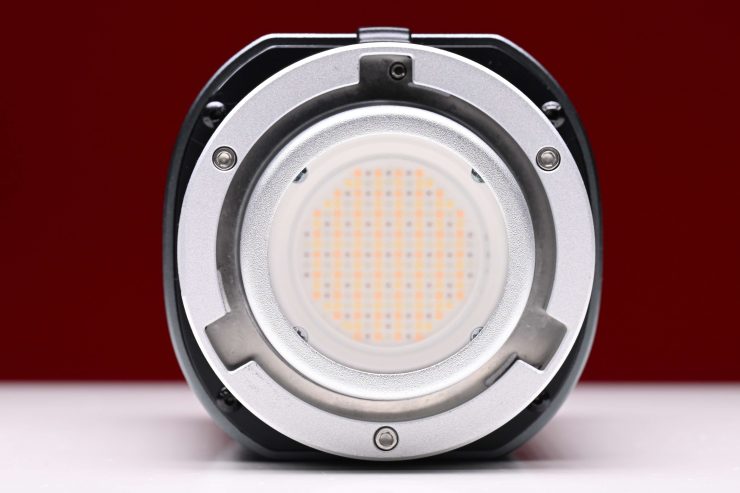
The MS60C utilizes a small-sized mount, however, it does come with a Bowens-S mount adapter.
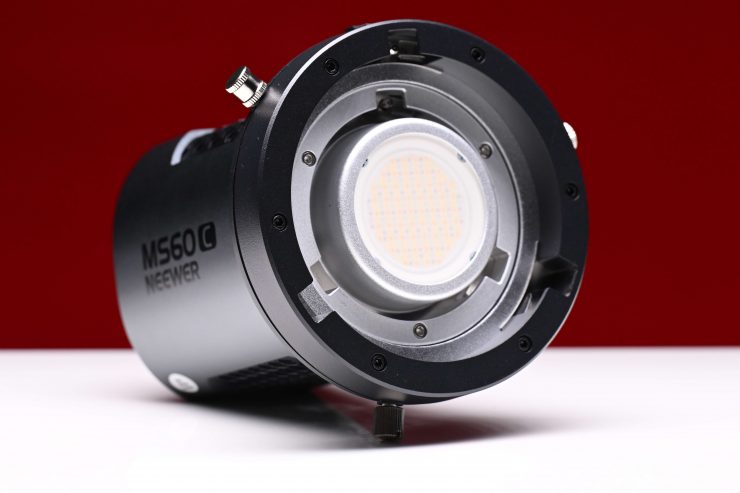
The Bowens-S mount adapter attaches securely to the fixture and it allows you to utilize a large array of affordable lighting modifiers.
Beam Angle
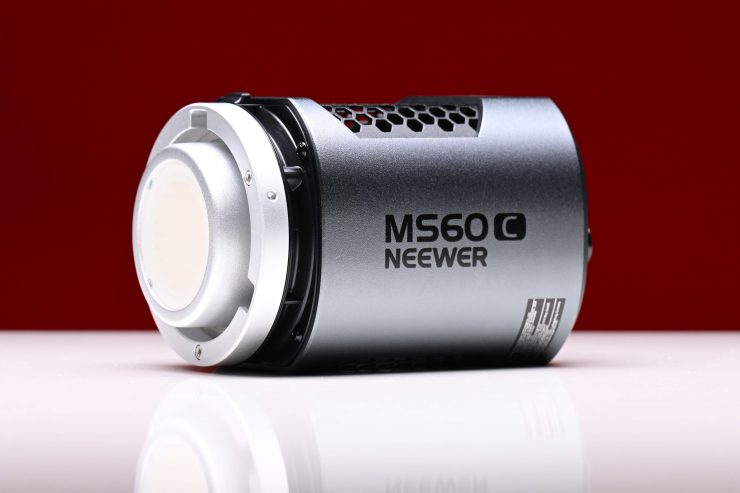
The native beam angle of the MS60C when used open face is 120°.
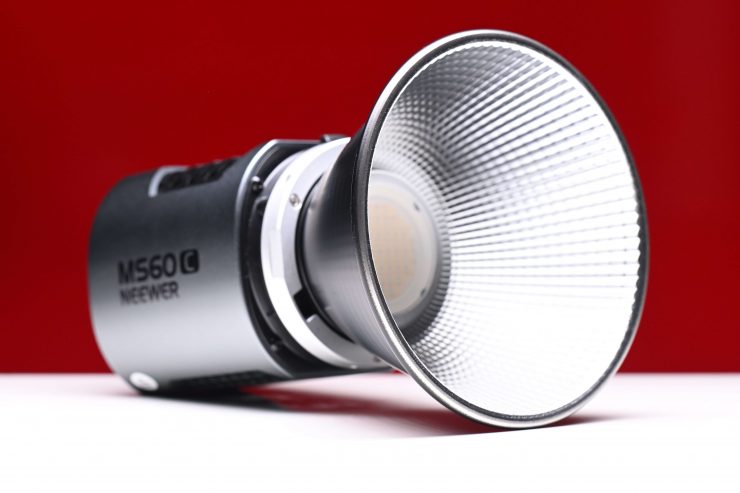
You can alter that by using the reflector or other lighting modifiers.
Controls & Menu System
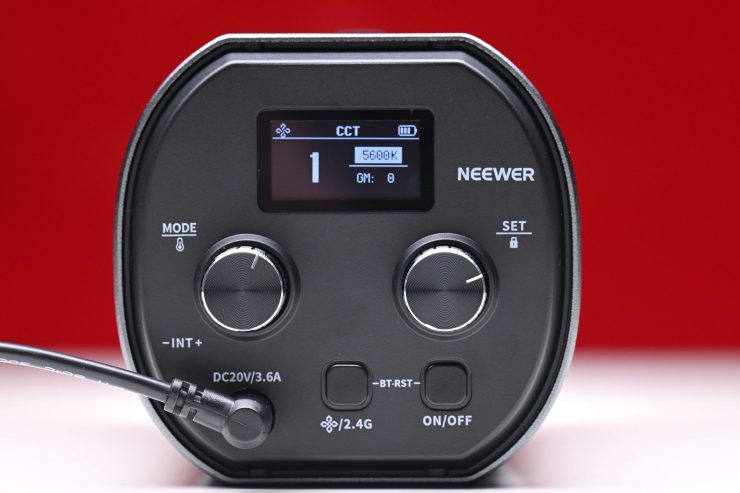
The NEEWER MS60C has a very basic LCD screen that clearly shows you information about the light. While there is nothing overly fancy about it, it gets the job done.

There are two dials, one for changing the intensity and CCT, as well accessing the menu, and another for making selections and changing the +/- G/M. You also have two buttons, one for urning the fixture on/off and the other for turning the Bluetooth and Wi-Fi on/off.
With a good light, you shouldn’t have to read a manual to work out how to operate it. You should be able to turn it on and use it straight away. You won’t find any deep sub-menus or complicated way of making changes on the MS60C. It was designed to be simplistic and easy to operate.
The dials that you use to control the light are tactile and I found that it was very easy to make exact CCT and intensity value changes.
Operating Modes
The light has the following lighting modes:
- CCT
- HSI
- x,y Coordinate
- Gels
- Effects
- RGB
- HSI
Now, some of these modes can only be accessed when using the NEEWER Bluetooth app which I will talk about further down in the review.
CCT

This is the mode most people are probably going to use the light in. In the CCT Mode, you have full access to making CCT adjustments between 2700-6500K.
The fixture also has continuous variable (full minus green to full plus green) correction.
Being able to dial in more or reduce the amount of green coming from your lighting source can make a huge difference. Different camera companies use different sensors in their cameras and they all react differently to light. Some camera sensors may lean towards magenta, and some, more towards green. By making CCT adjustments you can dial in the light so that it looks better for whatever camera system you are using. CCT adjustment also helps when you are trying to match lights from different manufacturers.
The CCT range is a bit limited but it should suit most people’s needs.
HSI
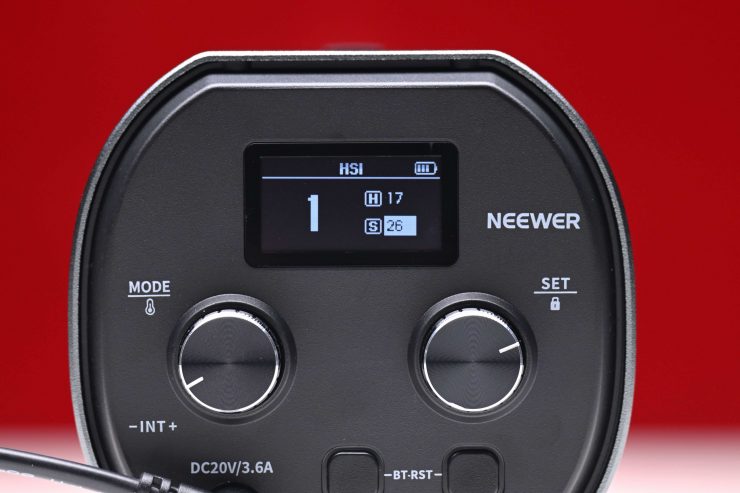
The HSI mode lets you create just about any color you can think of. It gives you full hue and saturation control as well as intensity. By manipulating, the hue and saturation you can create some really interesting colors that depending on the project you are working on can really add some creative flair. I quite like using this mode to create a lot of color separation between the foreground and background, or for recreating a really cold or warm-looking image.
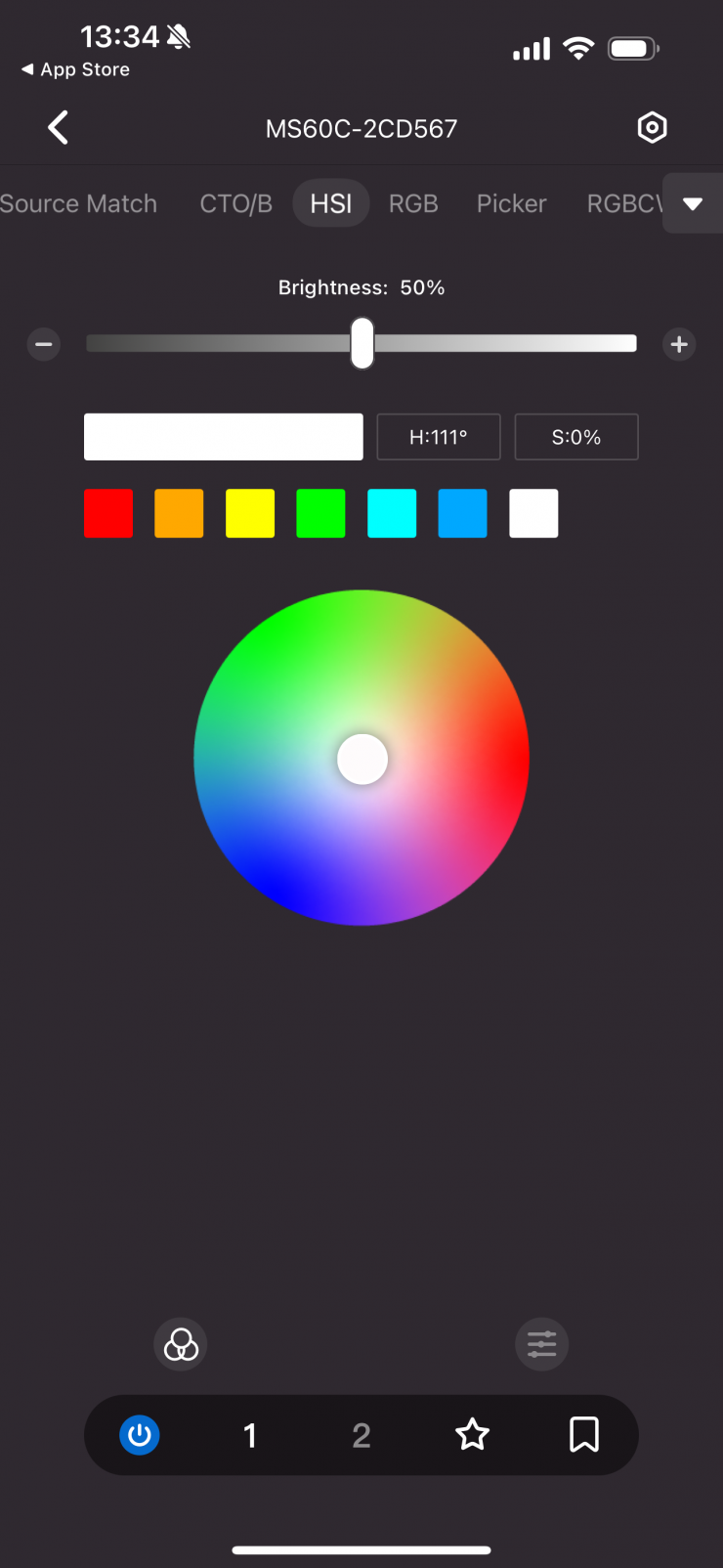
The colors are represented as degrees from 0-360. The interface doesn’t feature any visual aids so it isn’t that easy to dial in the exact color you want to create, that is why it is easier to use the app when using the HSI mode.
RGB
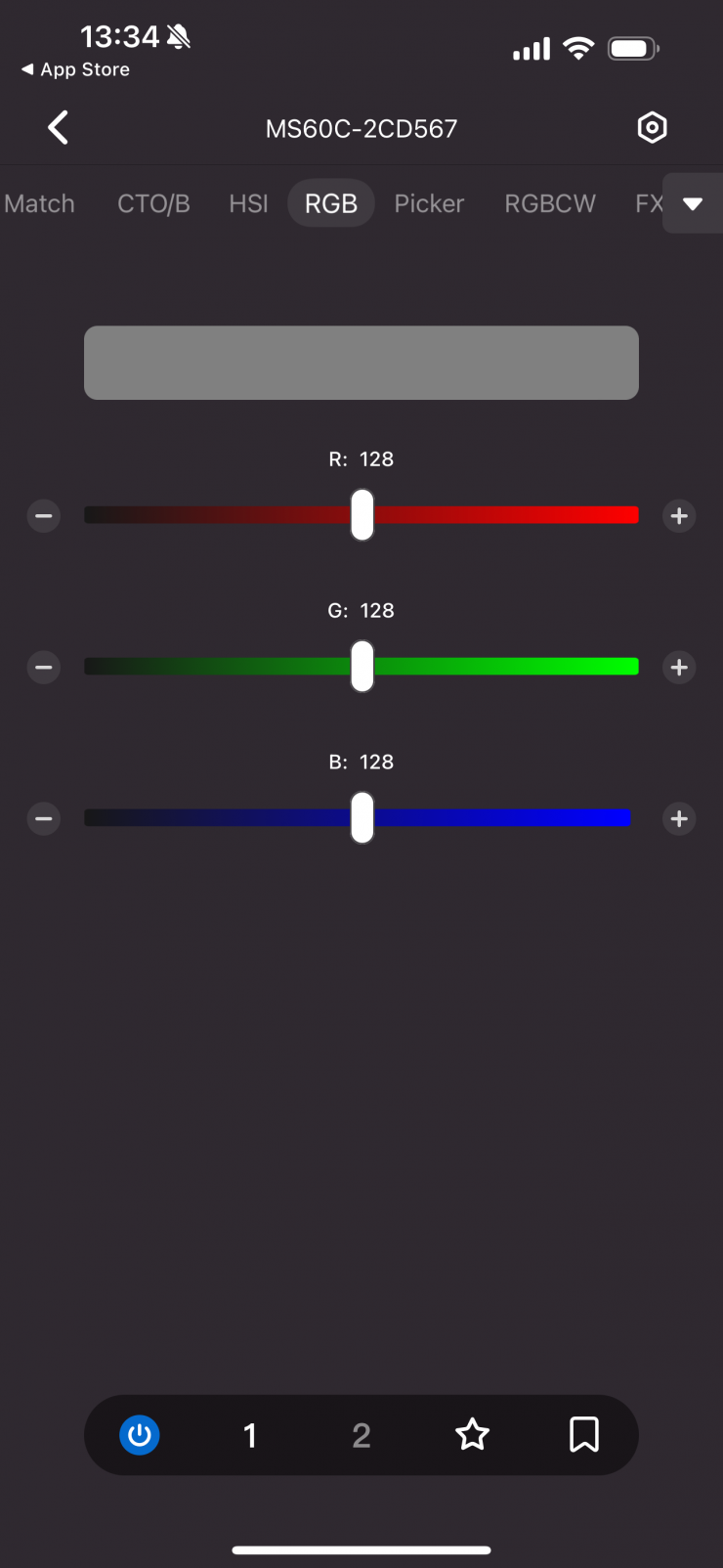
In the RGB mode, you can make changes to red, green, and blue independently. You can only access this mode when using the app.
Above you can see what the interface looks like when using the RGB mode in the app.
RGBCW
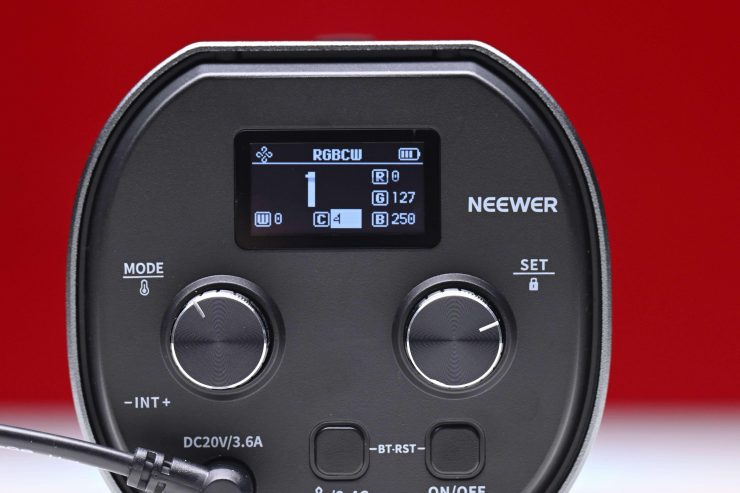
In the RGBCW mode, you can change the values for red, green, blue, cyan, and white.
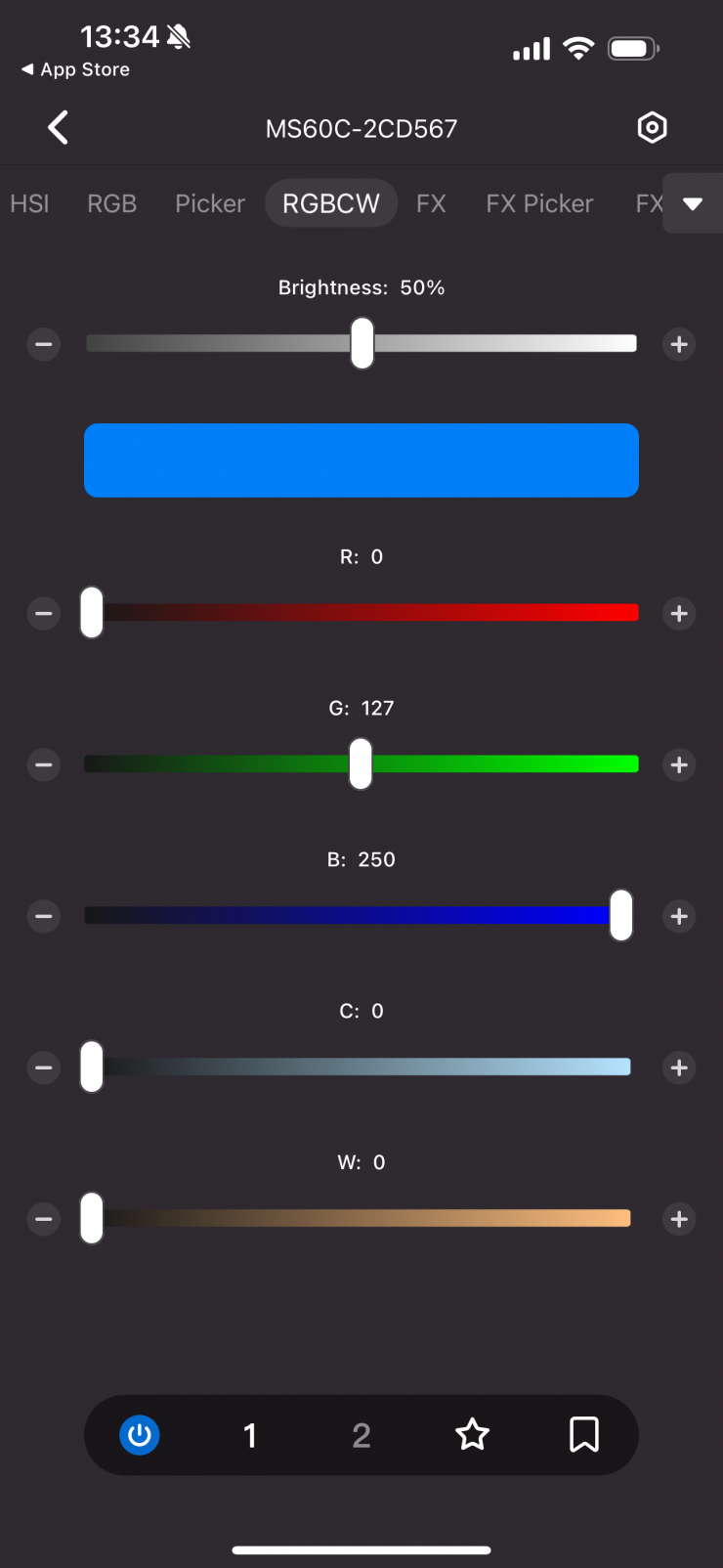
Above you can see what the interface looks like when using the RGBCW mode in the app.
Source Match
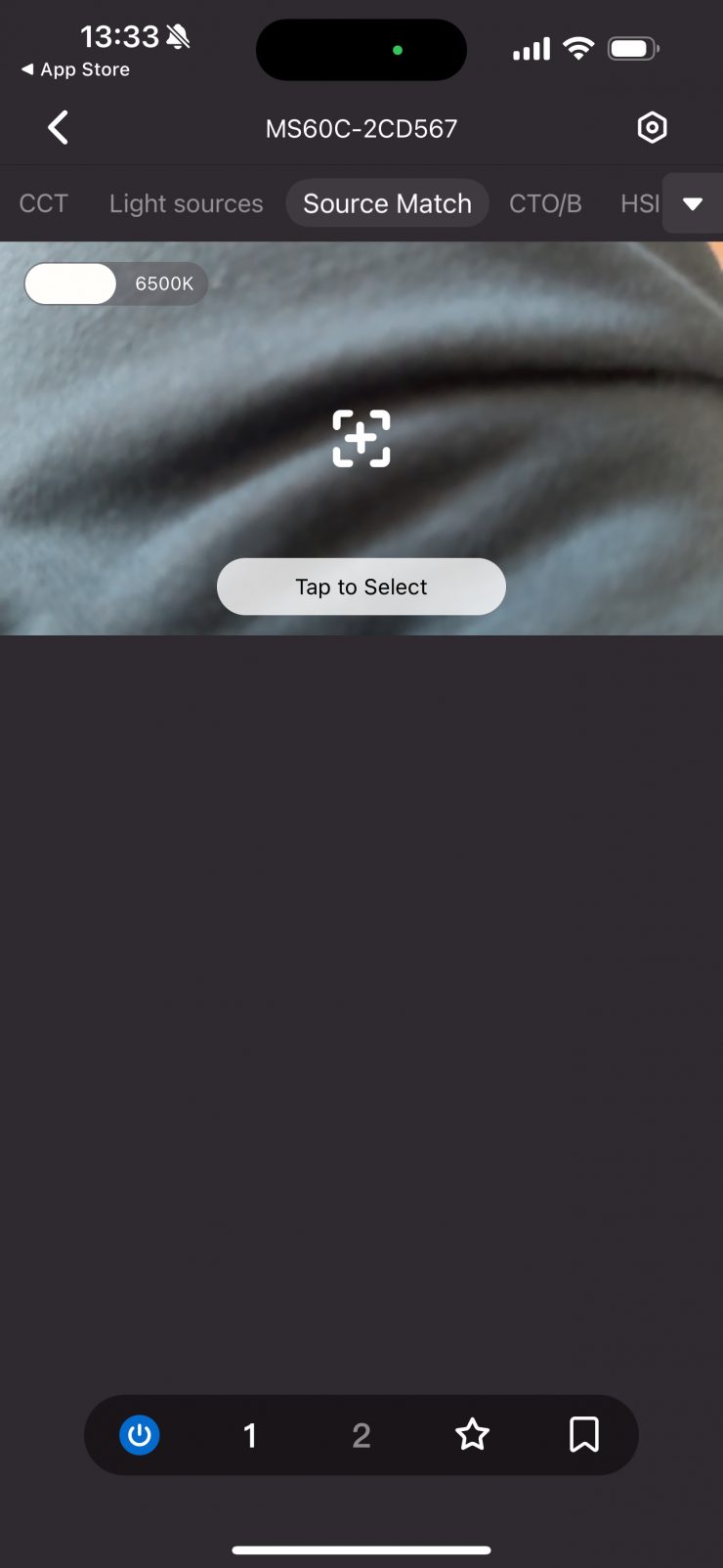
In the Source Match Mode (which you can only use with the app), you utilize your smartphone’s camera to get the fixture to replicate that source.
CTO/B
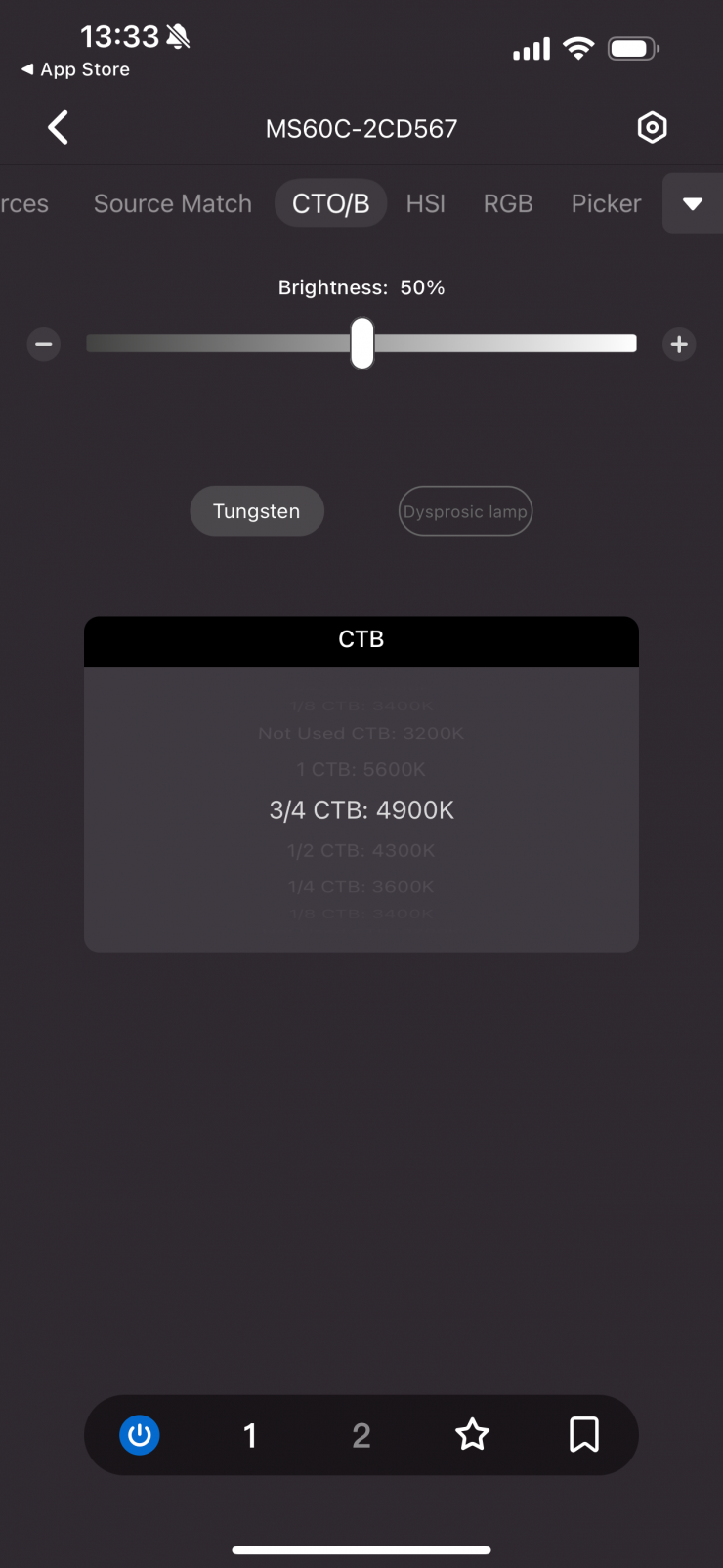
In the CTO/B mode (which you can only use with the app), you can get the fixture to replicate light sources that are using CTO or CTB gels.
Picker
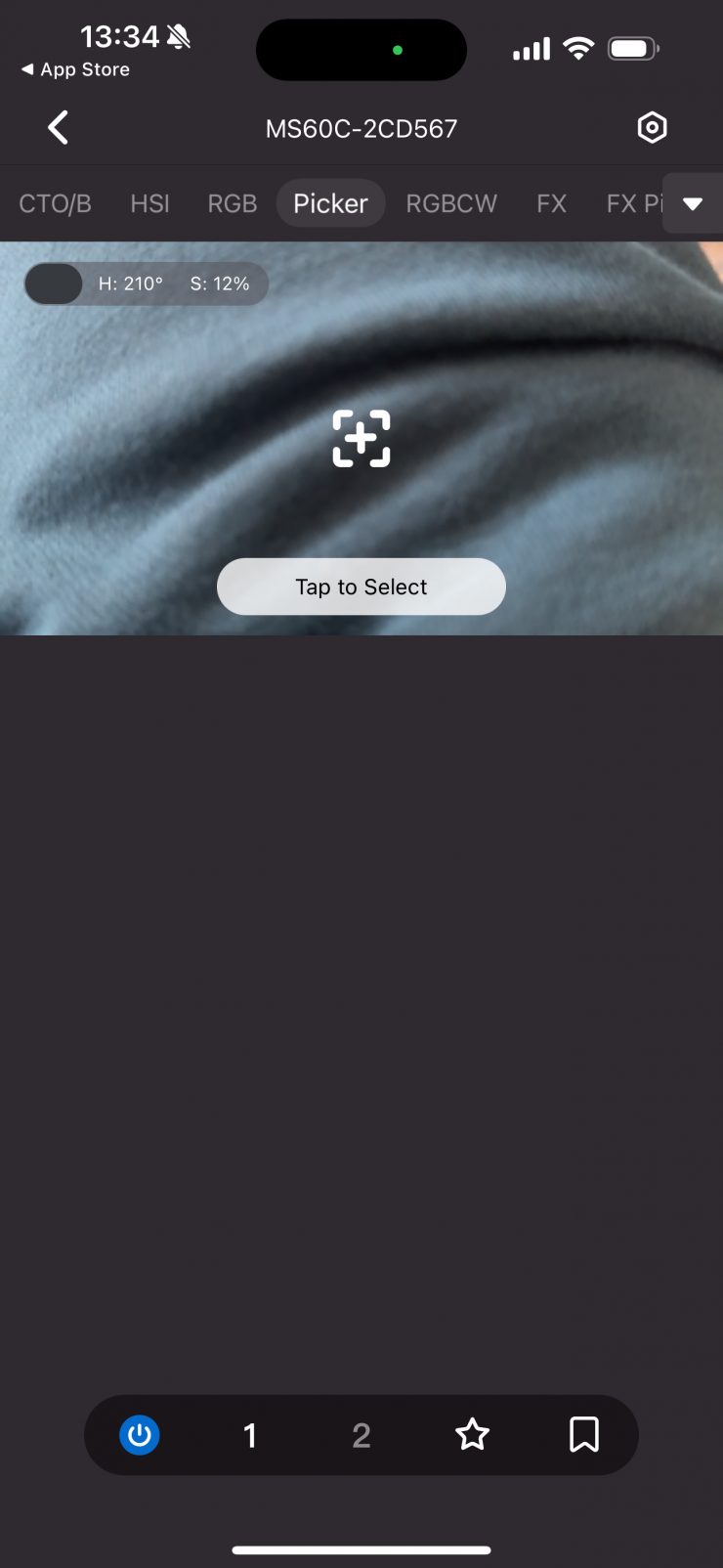
In the Picker mode (which you can only use with the app), you have the ability to utilize your smartphone’s camera to capture a color that the light will then try to reproduce.
FX
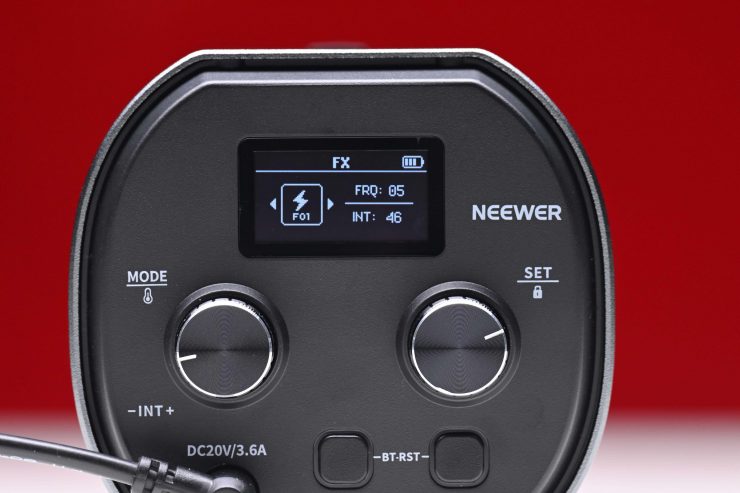
In the Effects mode, you recreate a wide range of lighting effects that can be handy for certain scenarios. The effects include:
- Candlelight
- Clouds
- Club
- Color Pulse
- CopCar
- CCT Flash
- CCT Loop
- Explosion
- Hue Flash
- Hue Loop
- INT Loop
- Fireworks
- Party
- TV Screen
- Welding
All the effects modes can be individually adjusted and tailored to your lighting needs.

Above you can see what the FX interface in the app looks like.
FX Picker
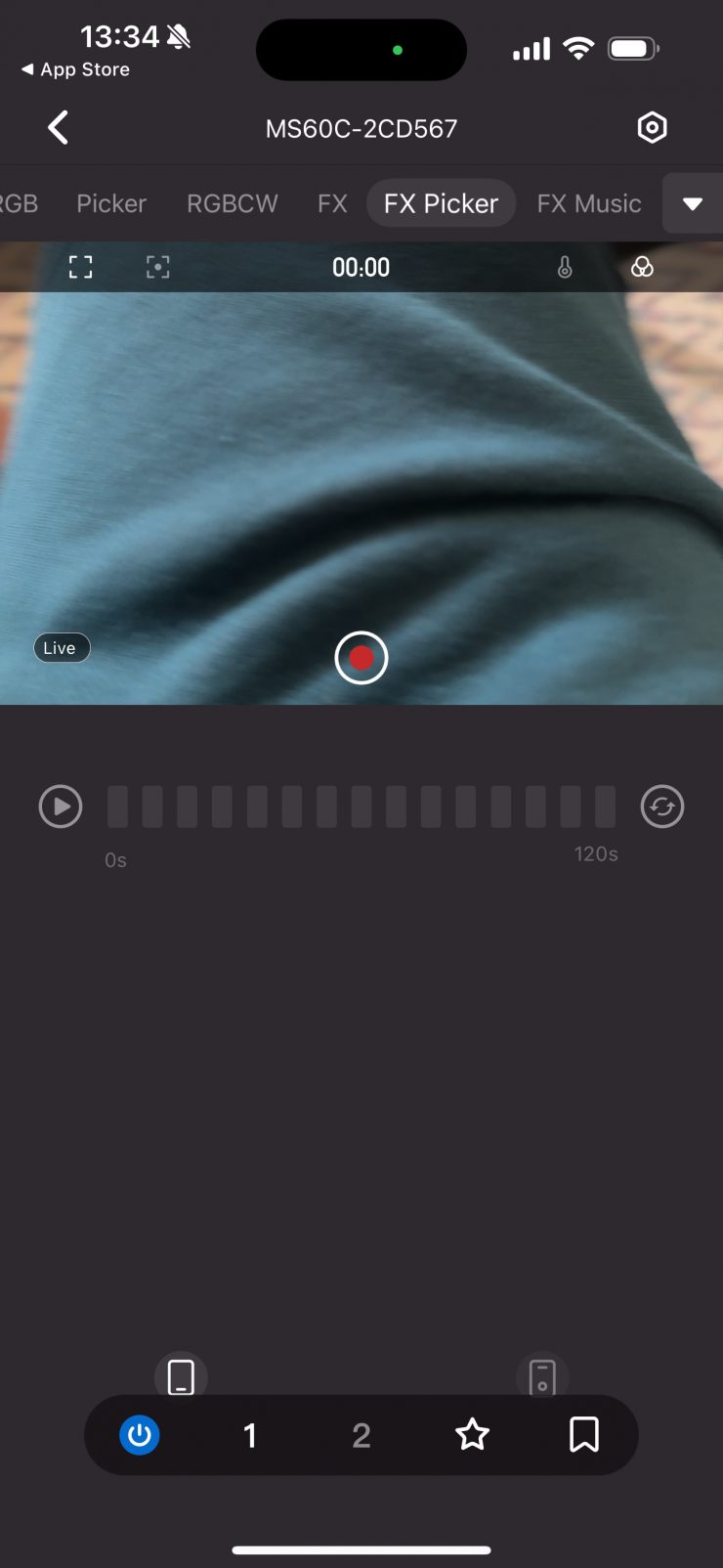
In this mode, you can use your smartphone’s camera to record a scene and then when you play it back the light will attempt to recreate that scene. You can only record for up to 2 minutes.
FX Music
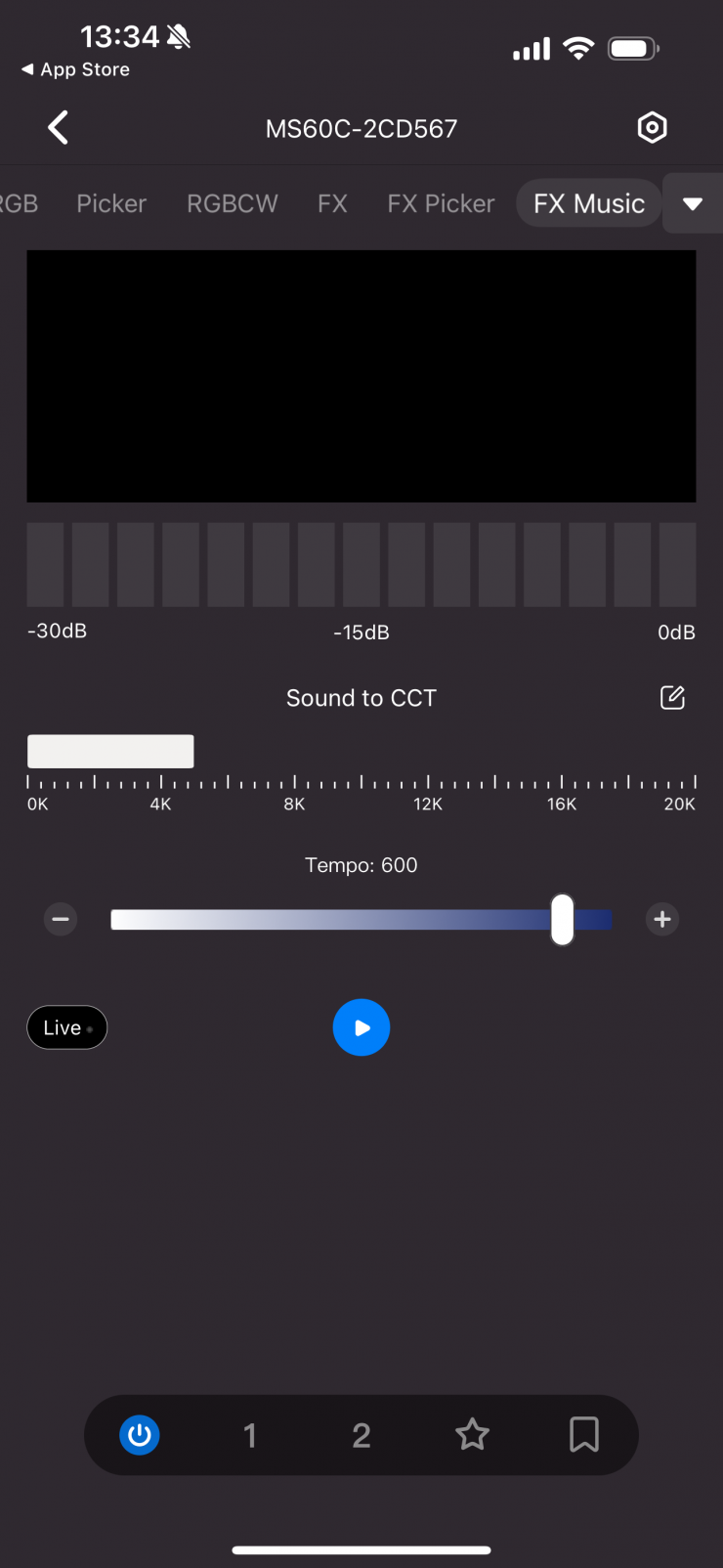
In the FX Music mode, the light will pulse to a music track beat. Again, this mode can only be used through the app.
Bluetooth App
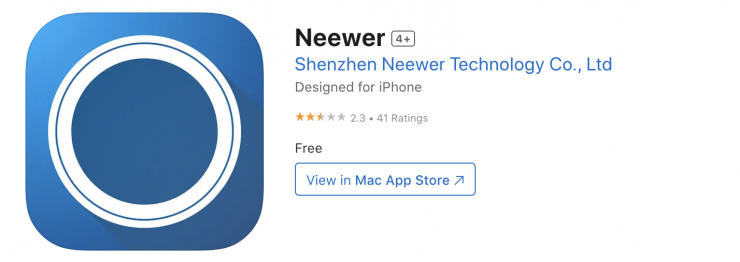
You can control the light via the NEEWER app for iOS and Android devices.
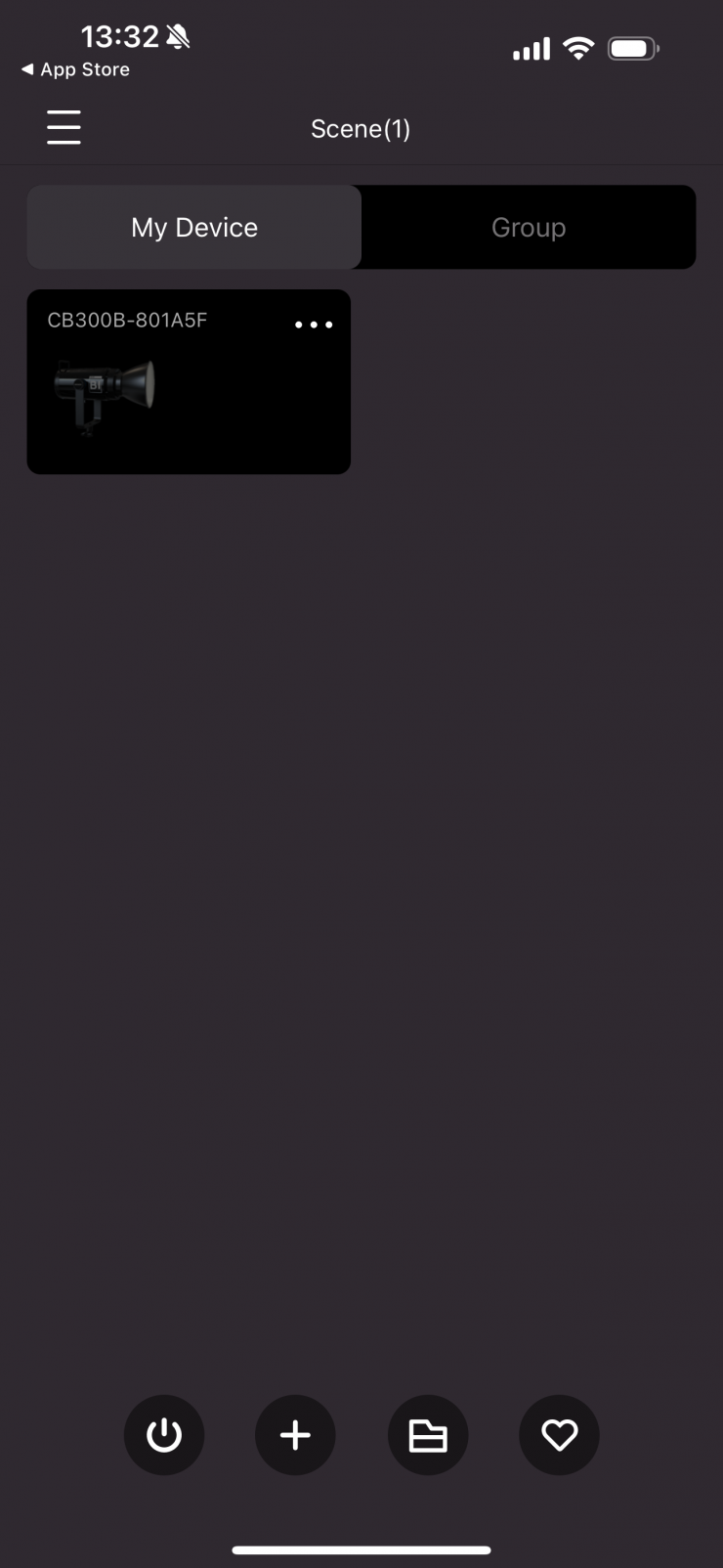
The first thing you need to do is to add a fixture to a scene.
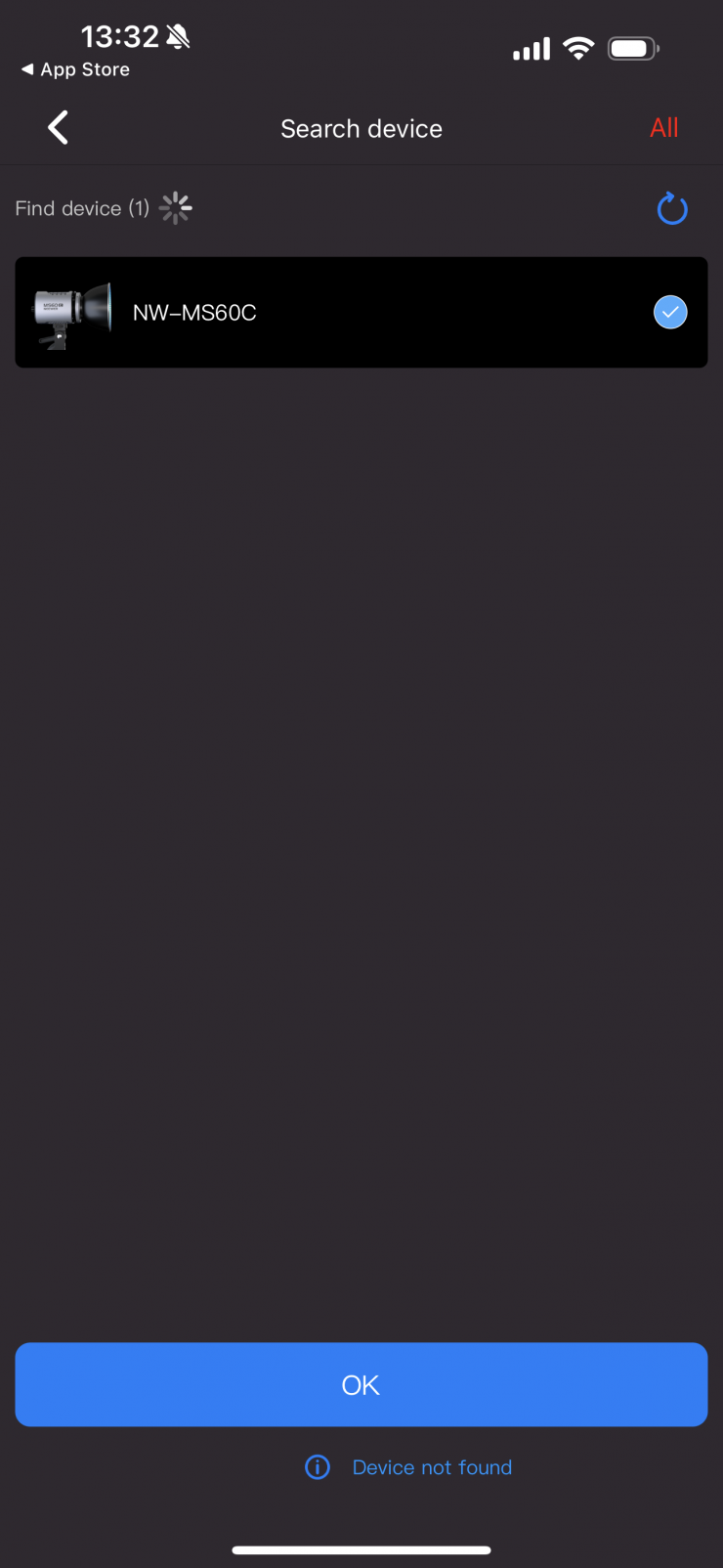
Once you the app finds a connected fixture you can then press ok.
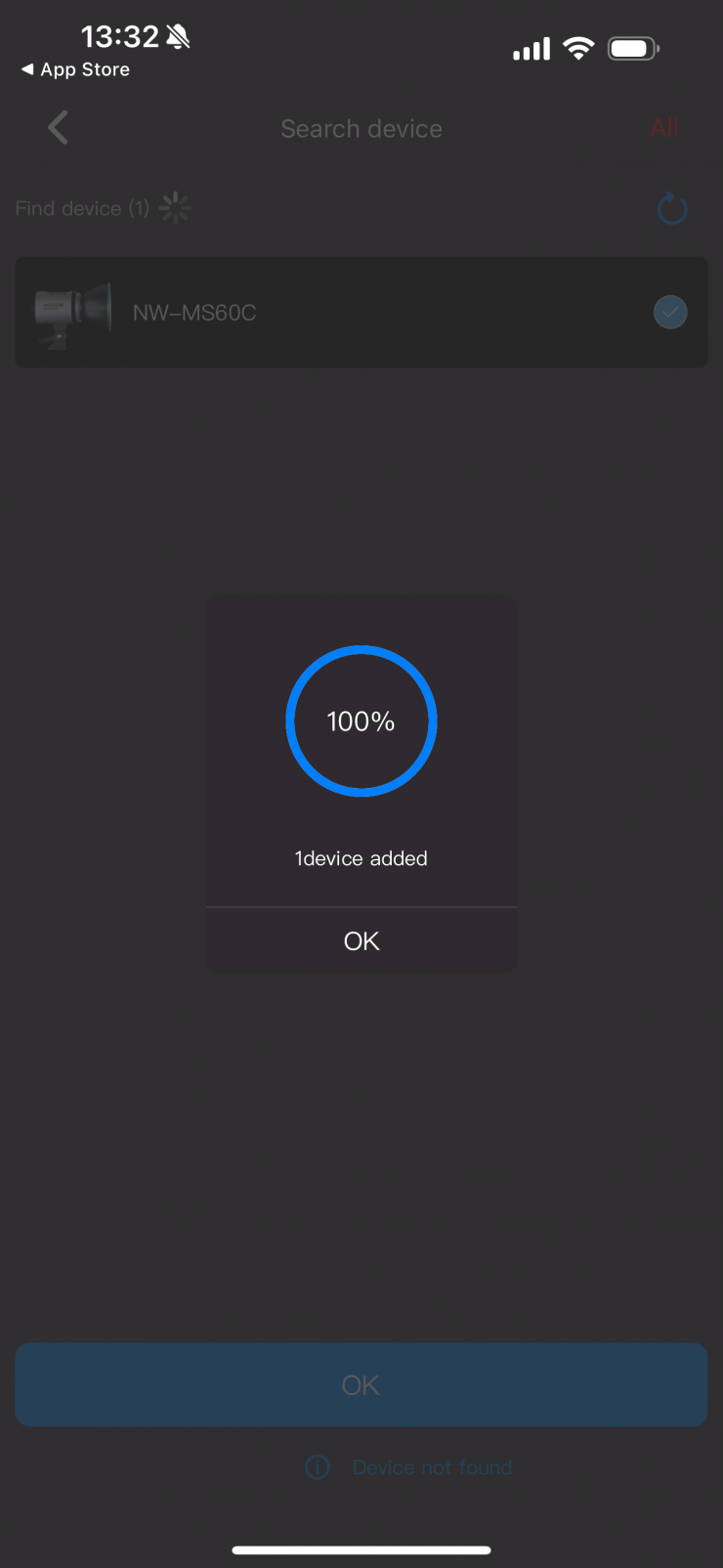
It will take a few seconds to do this.
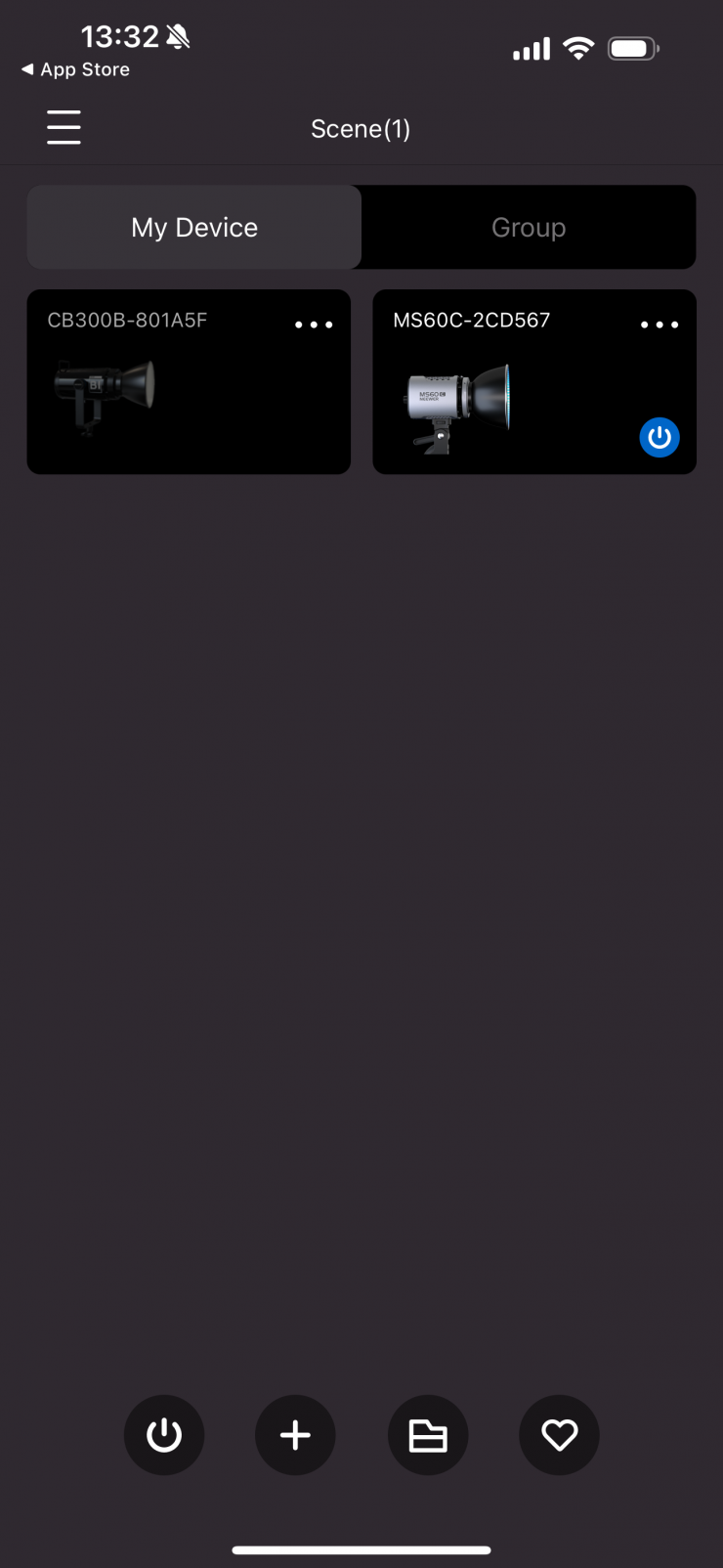
Once this is done you will see the fixture on the main screen. Once you tap on it you will be taken to the main control interface.
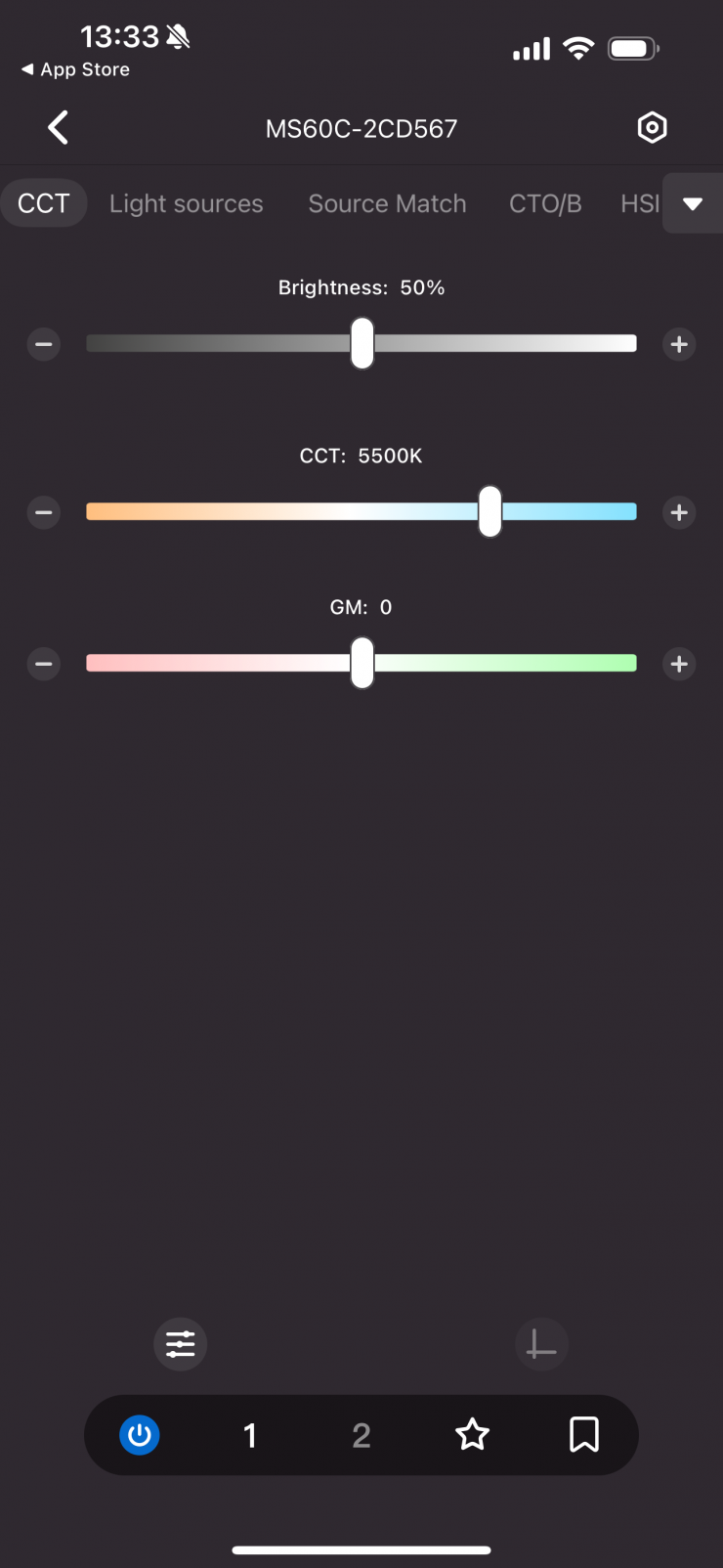
Above is the main interface screen that you are first greeted by. Here you can adjust the CCT value and the intensity, as well as the +/- G/M.
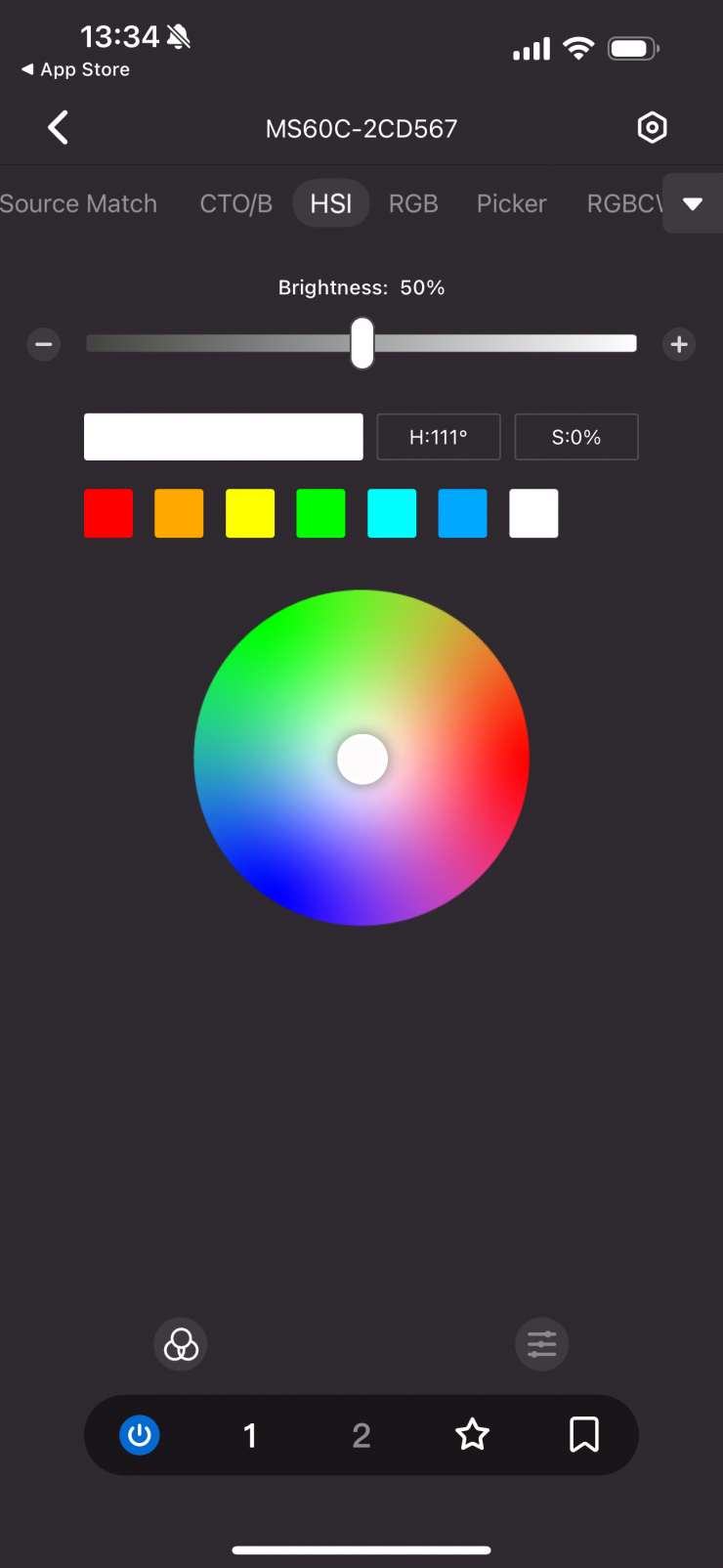
Above you can see the various other modes and options that are available in the app.
The app is responsive and straightforward to use.
Photometrics

So now let’s get to the photometric results. I always test lights in this way so that I get a reference to how they compare to other fixtures. Results only tell part of the story and should never be used alone to judge a light. I have found from extensive testing over the years that certain lights that have good photometric results don’t always look good, and lights that have worse photometric scores can sometimes look better than their results indicate.
You can’t judge a light from one set of photometric results. You have to look at all of the different results to be able to come to a conclusion. Judging alight on one set of results is like reading one chapter in a book and thinking you know the whole story.
Different lights can also look different depending on what camera you happen to be using.
Output & Color Temperature Accuracy
I tested the NEEWER MS60C at a variety of CCT settings with a Sekonic C-800 Spectrometer to find out how much output the light had and how accurate the CCT reproduction was. All readings are taken at a distance of 1m / 3.28ft in a controlled environment. The readings were all taken directly from the lighting source. In the case of using the light with a Reflector or any attachment, the readings were taken from the edge of those attachments. This is how I test all lights.
So just how much output does it have? Well, let’s find out.
NEEWER MS60C 5600K (open face)
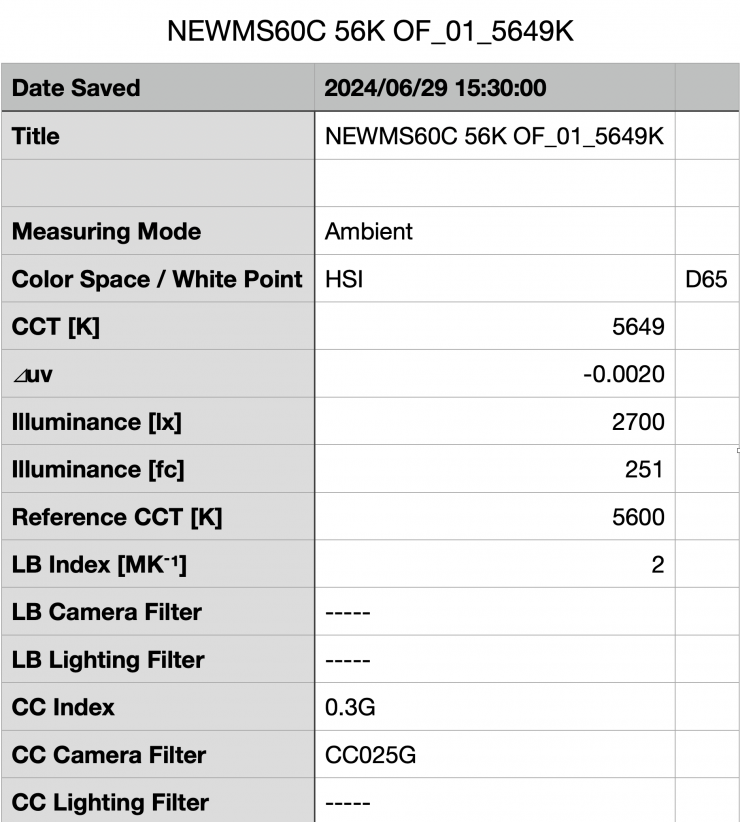
Above you can see the NEEWER MS60C recorded an output of 2700 lx (251 fc) when set at 5600K and used open face. This is a decent amount of output from a 65W fixture.
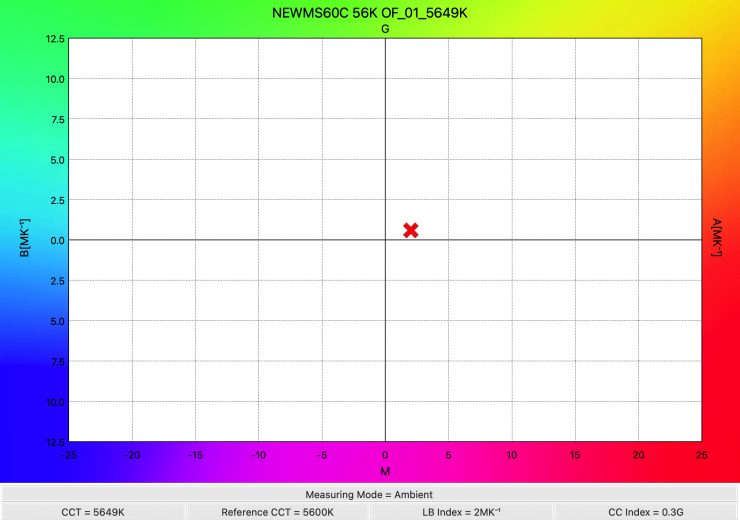
The light recorded a CCT reading of 5649K which was a great result.
NEEWER MS60C 3200K (open face)
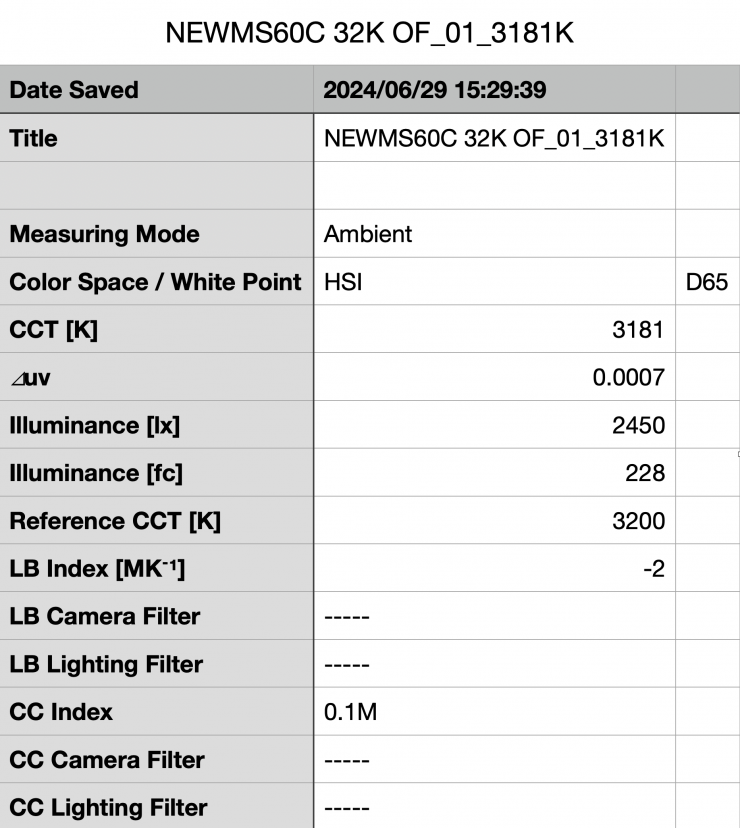
Above you can see the light’s output when it was set at 3200K in the open face configuration was 2450 lx (228 fc), which was 250 lx less than it produced at 5600K.
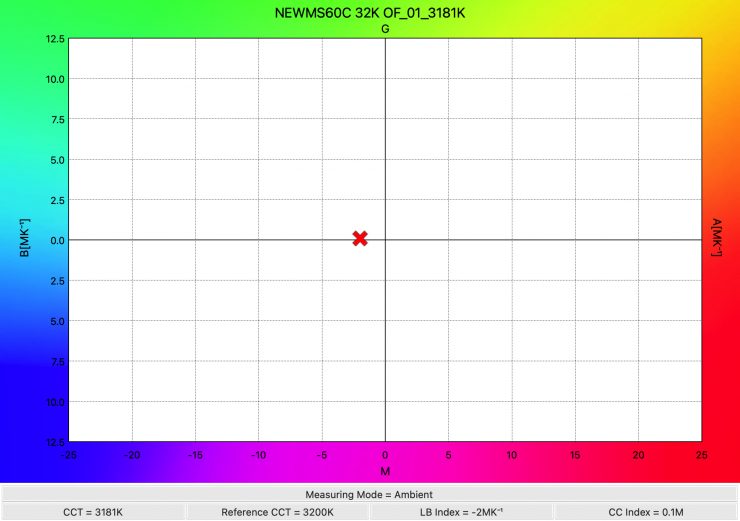
As far as CCT accuracy goes, it recorded an excellent reading of 3181K.
NEEWER MS60C 5600K (Reflector)
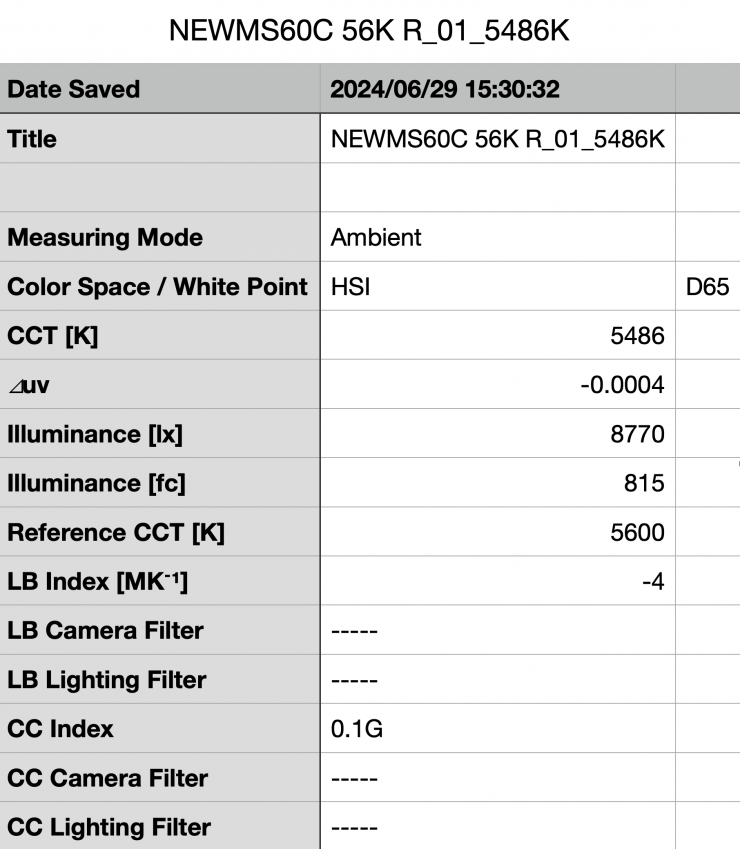
Above you can see the NEEWER MS60C recorded an output of 8770 lx (815 fc) when set at 5600K and used with its reflector.
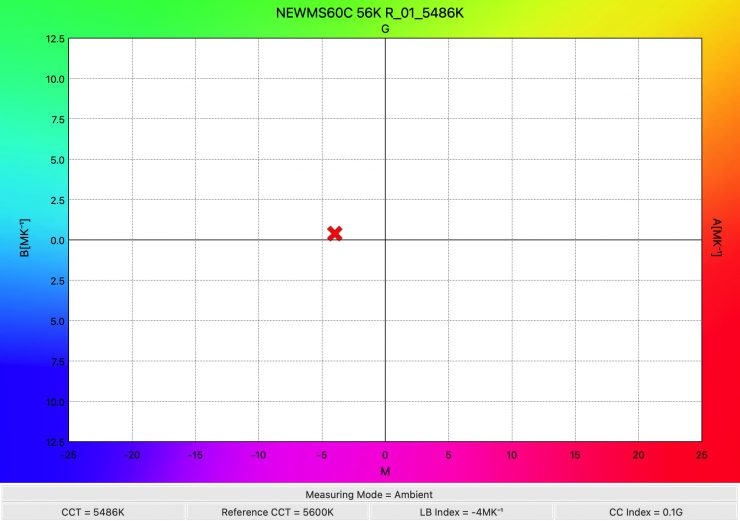
The light recorded a CCT reading of 5486K which wasn’t nearly as good as when it is used open face.
NEEWER MS60C 3200K (Reflector)
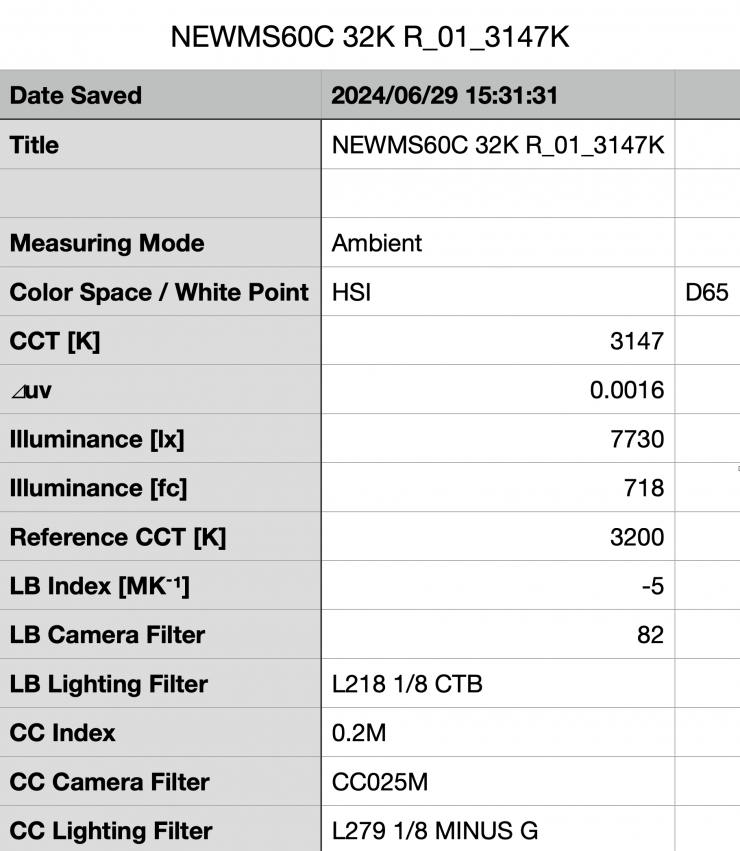
Above you can see the light’s output when it was set at 3200K and used with its reflector was 7730 lx (718 fc), which was 1040 lx less than it produced at 5600K.
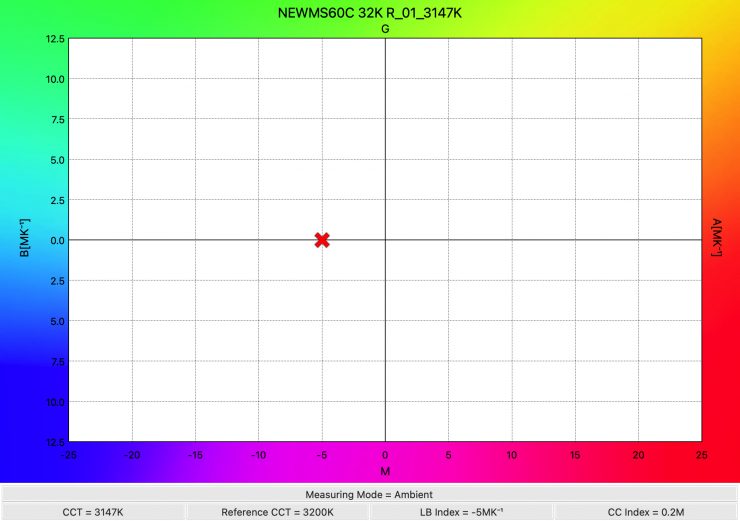
As far as CCT accuracy goes, it recorded a reasonably good reading of 3147K.
NEEWER MS60C 5600K (Reflector) Batteries
I was interested to see how much output the light had when running it off two NP-F batteries.
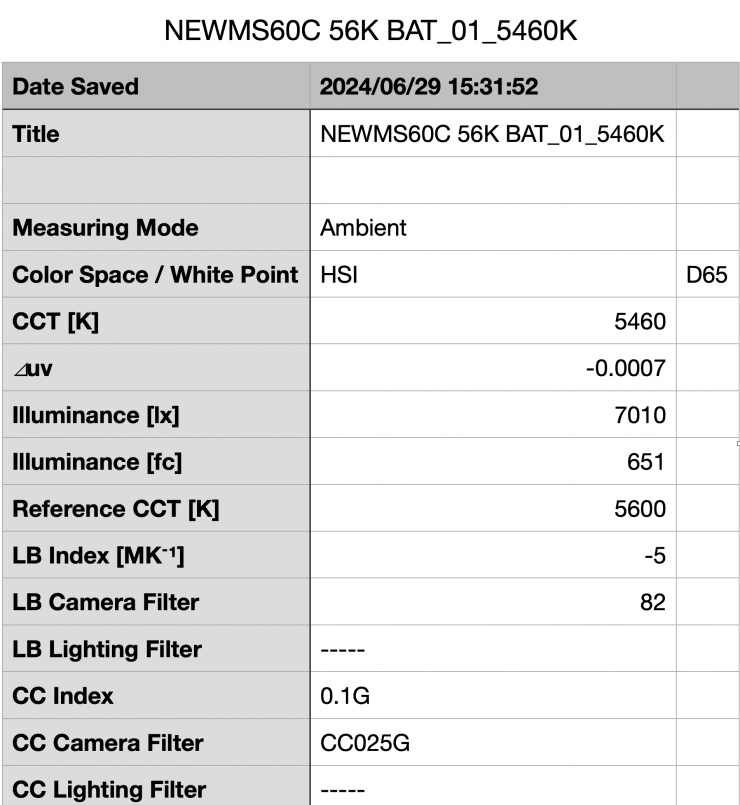
Above you can see the light’s output when it was set at 5600K and used with its reflector and run off batteries was 7010 lx (651 fc), which was 20% less than it produced at 5600K and run via mains power.
How does it perform at various CCT Settings?
Summary of results (Open Face)
| SETTING | OUTPUT | CCT READING |
| 2700K | 2320 lx | 2680K |
| 3200K | 2450 lx | 3181K |
| 4500K | 2710 lx | 4443K |
| 5600K | 2700 lx | 5649K |
| 6500K | 2590 lx | 6635K |
These results show me that the light’s output varies by 14.39% depending on what CCT temperature you are using between 2700-6500K.
The CCT accuracy across the range is very good. It was no more than 135K off at any reading which tells me the light has very good CCT consistency across its range.
CCT consistency & linear output when dimming the light
Now, what you should always do when testing lights is to see if the CCT remains consistent when dimming the light. Just because you set a light at say 5600K, that doesn’t mean that the CCT will remain stable as you start dimming the fixture down. I also wanted to see how linear the dimming curve was.
I decided to do a series of tests at 100%/75%/50%/25%10% to see if the CCT being recorded changed. This was done at a distance of 1m using a Sekonic C-800. These tests were done at 5600K using the reflector.
| CCT READING | OUTPUT | INTENSITY % |
| 5486K | 8770 lx | 100 |
| 5458K | 6570 lx | 75 |
| 5414K | 4480 lx | 50 |
| 5368K | 2290 lx | 25 |
| 5271K | 1020 lx | 10 |
The NEEWER MS60C maintained pretty good CCT consistency as you start dimming the fixture. My testing showed that the CCT readings varied by 118K from 100% to 25%. It is no surprise that there was a fall off at 10% as this isn’t a high output, high power raw fixture, and when measuring it at distance of 1m this should be expected.
As far as how linear the output is when you start dimming the light, at 50% output it had 48.91% less output than when used at 100%. At 25% it had 73.88% less output than when used at 100%. At 10% output, it had 88.36% less output than when used at 100%. This shows me that the light’s dimming curve is very linear.
Output & accuracy when creating saturated colors
I also wanted to test the light to see how it performed when creating a super-saturated Red.
0° – RED
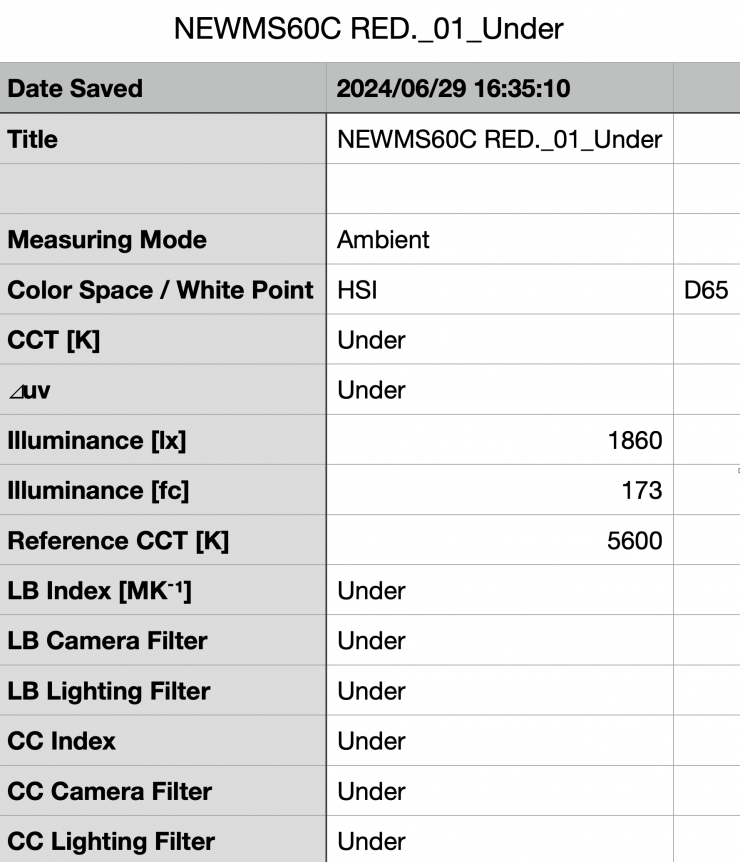
Above you can see that the light when using its reflector recorded an output of 1860lx (173 fc).

As far as creating an accurate 0° RED, the NEEWER MS60C was spot on with a 0° reading and 100% saturation.
220°- BLUE

Above you can see that the light when using its reflector recorded an output of 2580lx (240 fc).

As far as creating an accurate 220° BLUE, the NEEWER MS60C was almost spot on with a 221° reading and 100% saturation.
60°- YELLOW
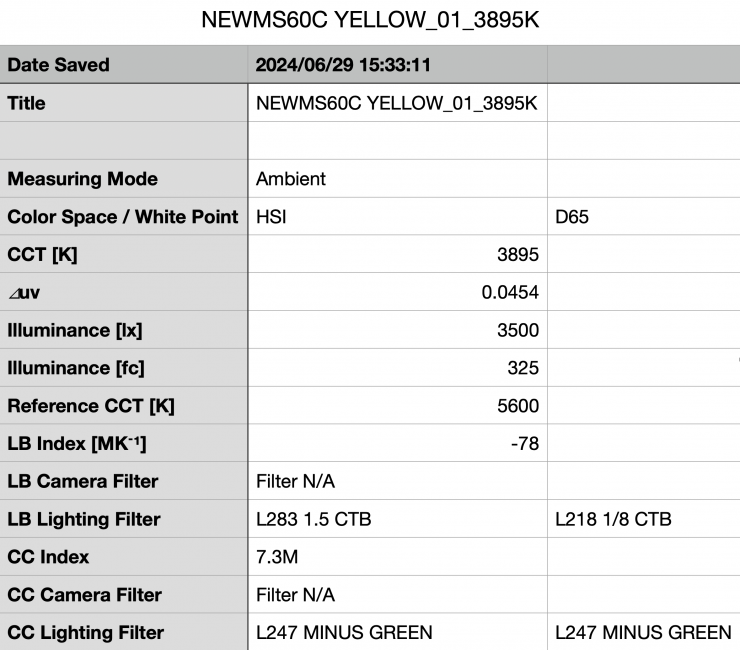
Above you can see that the light when using its reflector recorded an output of 3500lx (325 fc).

As far as creating an accurate 60° YELLOW, the NEEWER MS60C had a decent reading of 64° and 100% saturation.
What you clearly need to know when using RGB lights like this is that the output levels you can produce when creating super-saturated colors are less than when using the light in its CCT mode.
Color Rendering
So now that we have seen how much output the NEEWER MS60C produces, how does it perform when it comes to replicating accurate colors?
NEEWER MS60C 5600K
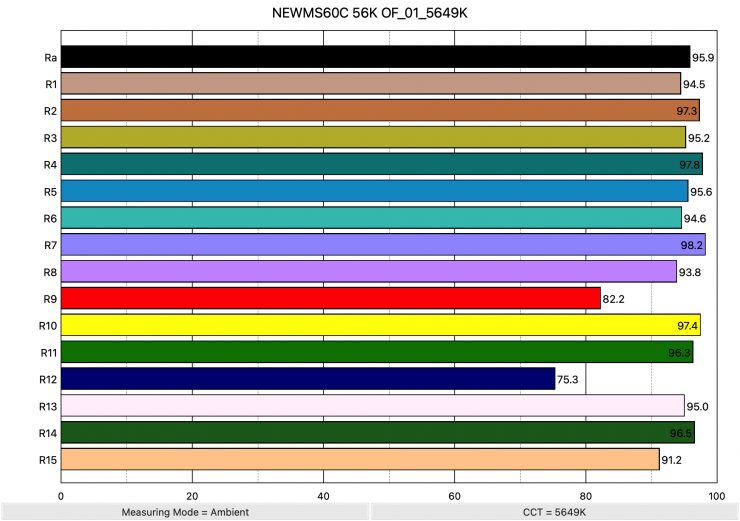
Above you can see that when the light was set at 5600K and used open face it recorded an average CRI (R1-R8) of 95.9 and an extended CRI (R1-R15) of 93.39. For replicating accurate skin tones it recorded for R9 82.2 (red), 95.0 for R13 (closest to caucasian skin tones), and 91.2 for R15 (closest to Asian skin tones). These are ok results, but R9 (red), and R12 (Blue), were all under 90. The result for R12 (blue) was fairly low.
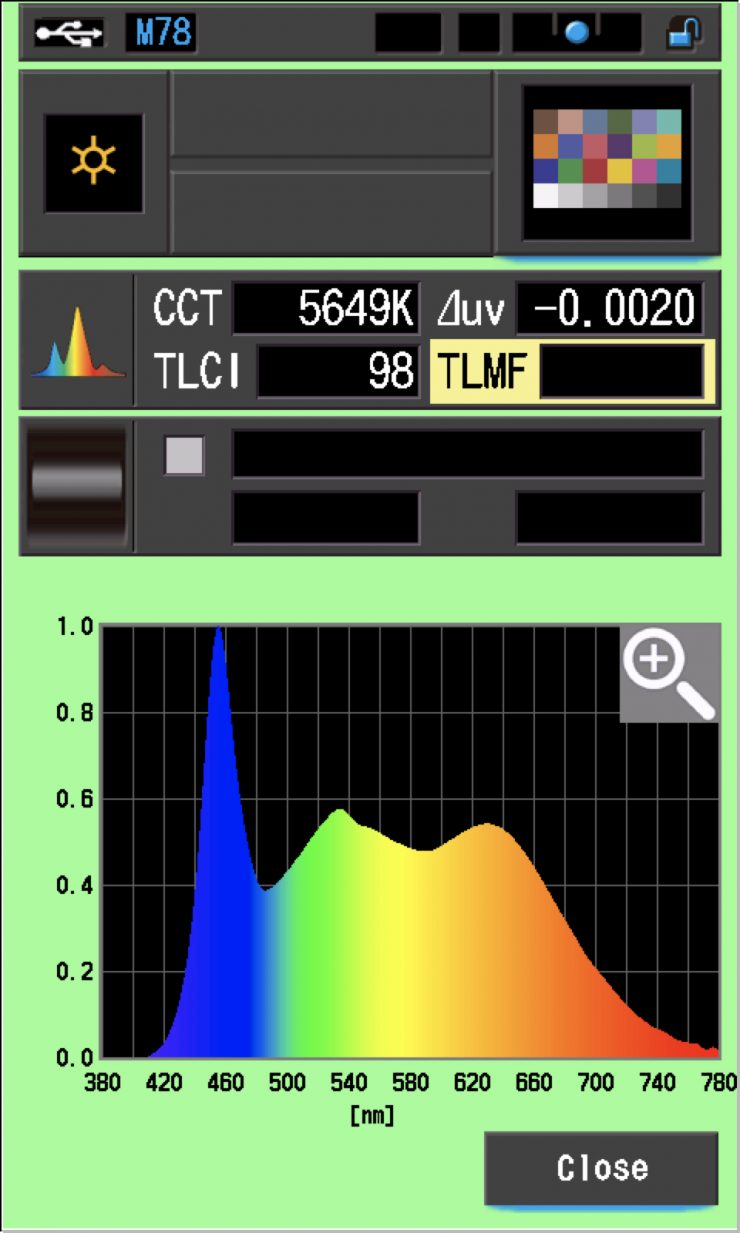
The NEEWER MS60C, when set at 5600K, recorded a TLCI score of 98 which was a good result.
NEEWER MS60C 3200K
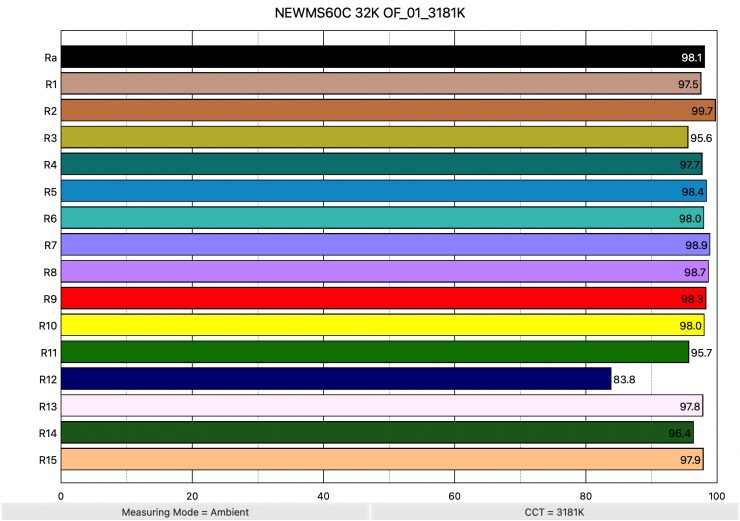
Above you can see the scores for when the light was used at 3200K. It recorded an average CRI (R1-R8) of 98.1 and an extended CRI (R1-R15) of 96.82. For replicating accurate skin tones it recorded 98.3 for R9 (red), 97.8 for R13 (closest to caucasian skin tones), and 97.9 for R15 (closest to Asian skin tones). These were excellent results, and only R12 (Blue) was below 90. The result for R9 (Red) was very good for an LED light.
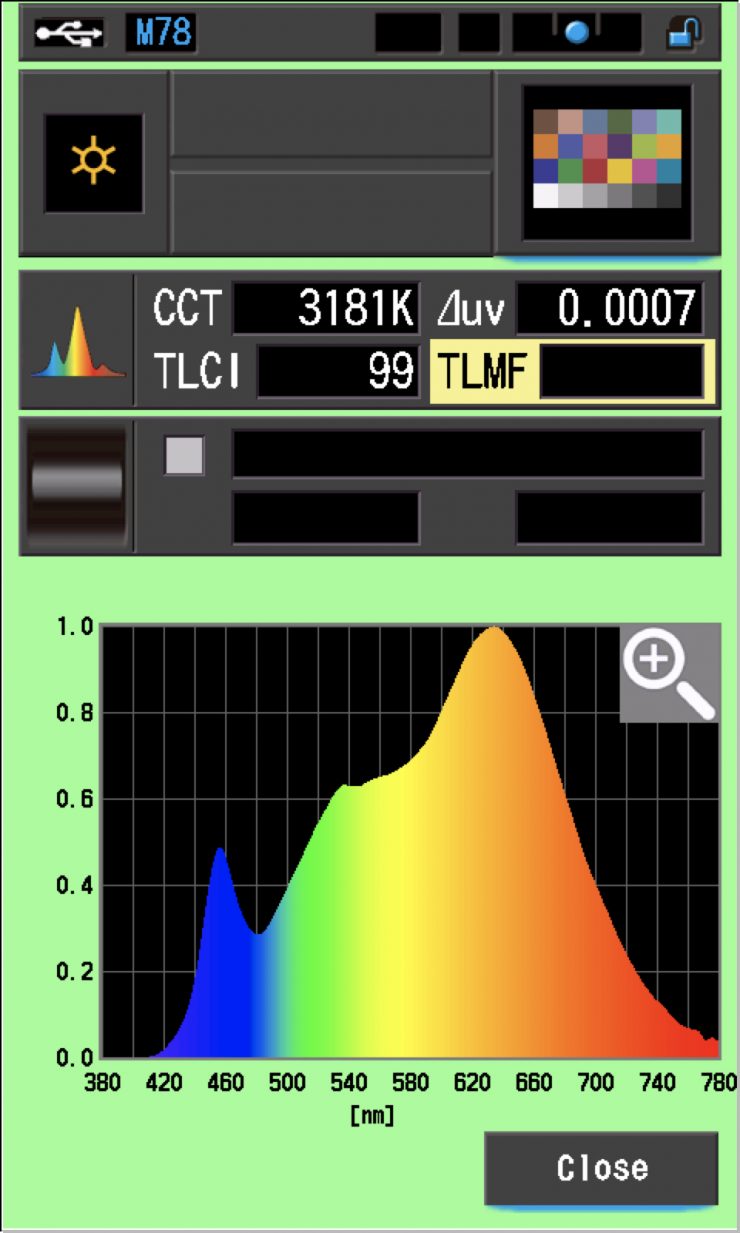
The NEEWER MS60C, when set at 3200K, recorded a TLCI score of 99.
CC Index & ⊿uv
The CC Index displays the CC correction value and whether any magenta or green need to be added or subtracted. 1 CC corresponds to 035 Kodak CC values or 1/8 Rosco filter values. Any reading less than +1.00 or -1.00 and you’re probably not going to need to make any kind of adjustment. The ⊿uv is the value to show how much this light is away from being an ideal light source (black body radiation = incandescent lamp). As with the CC Index you want this number to theoretically be zero. Kelvin is not a linear value, so we need to convert from Kelvin to MK-1 to compare the values of color temperature. To calculate from Kelvin to Mired is MK-1= 1*1000000/Kelvin. While this may sound confusing, it is the only way of measuring if the Kelvin shift is significant enough to warrant having to use a filter for correction. Below are the results for the NEEWER MS60C :
NEEWER MS60C Kelvin Vs MK-1
| Kelvin | Difference in K | MK-1 | Difference in MK-1 | |
| SET VALUE | 2700K | 0 | 370.37 | 0 |
| ACTUAL READING | 2680K | 20 | 373.13 | -2.76 MK-1 |
| SET VALUE | 3200K | 0 | 312.5 | 0 |
| ACTUAL READING | 3181K | 19 | 314.36 | -1.86 MK-1 |
| SET VALUE | 4500K | 0 | 222.22 | 0 |
| ACTUAL READING | 4443K | 57 | 225.07 | -2.85 MK-1 |
| SET VALUE | 5600K | 0 | 178.57 | 0 |
| ACTUAL READING | 5649K | 49 | 177.02 | 1.55 MK-1 |
| SET VALUE | 6500K | 0 | 153.84 | 0 |
| ACTUAL READING | 6635K | 135 | 150.71 | 3.13 MK-1 |
These figures might look confusing, but what it tells me is that the light is very CCT-accurate across its 2700-6500K range. Any MK-1 score that is under -9/9 means you wouldn’t have to use any color correction gels. The MK-1 scores for this light were excellent across the board. Any MK-1 score that is under -6/6 is a very good result.
Ok, now let’s look at the CC INDEX & ⊿uv.
NEEWER MS60C CC INDEX & ⊿uv
| CC INDEX | ⊿uv | |
| 2700K | 0.1M | 0.0013 |
| 3200K | 0.1M | 0.0007 |
| 4500K | 0.0 | -0.0013 |
| 5600K | 0.3G | -0.0020 |
| 6500K | 0.5G | -0.0020 |
These were reasonably good results across the board. There was nothing here that anyone should be concerned about. The results at 200-4500K were excellent.
TM-30
TM-30 is a relatively new color rendering standard that was developed to deal with the limitations of CRI. TM-30 looks at 99 individual colors. These 99 colors are categorized into seven groups: nature, skin color, textiles, paints, plastics, printed material, and color systems.
TM-30 scores go from 0 – 100. The higher the score, the more accurate a light is at producing colors. Any TM-30 Rf score in the ’90s is considered to be good. What is interesting and something that you need to be very aware of is that two separate light sources with the exact same CRI scores can render colors very differently. A light with a high CRI rating could have a low TM-30 score. Conversely, a light with a good TM-30 score could have a bad CRI score.
Now, there are two measurements associated with TM-30, Rf and Rg.
Rf (Color Fidelity)
Rg (Color Gamut)
With Rf value, ideally, you want a score in the 90’s.
With Rg value, a score below 100 indicates that the light source renders colors with less saturation than the reference source. So ideally you want this score to be above 100.
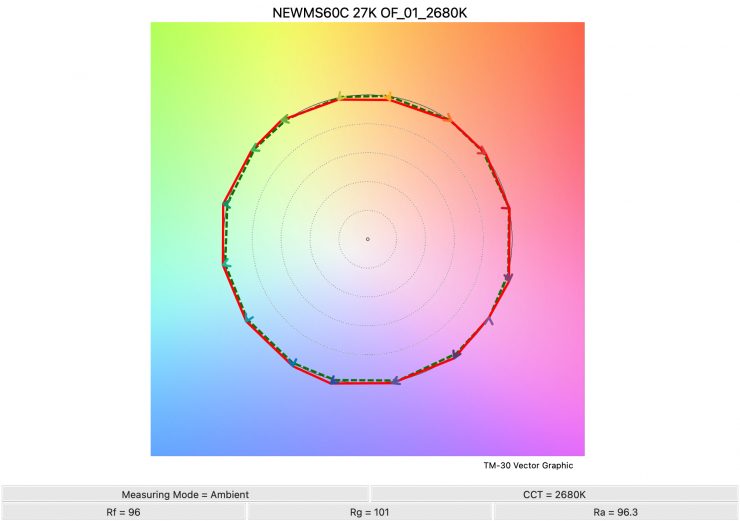

2700K 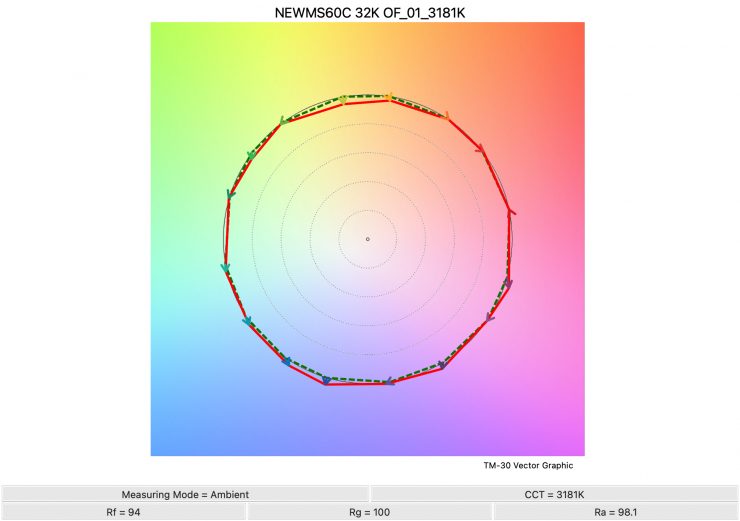
3200K 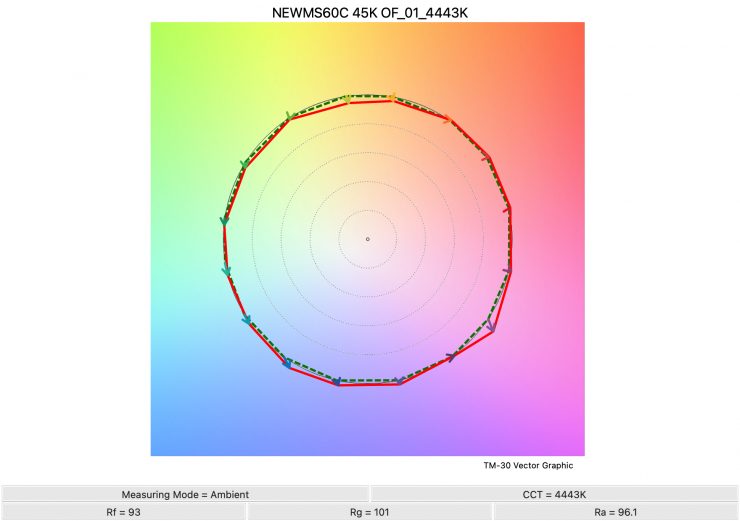
4500K 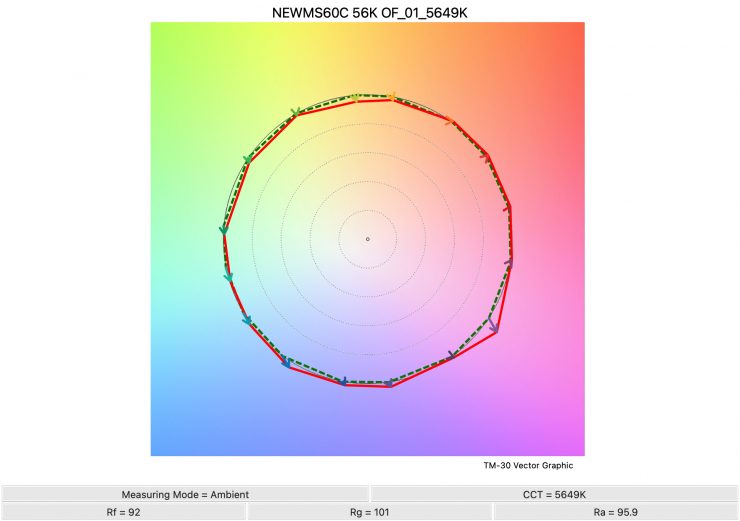
5600K 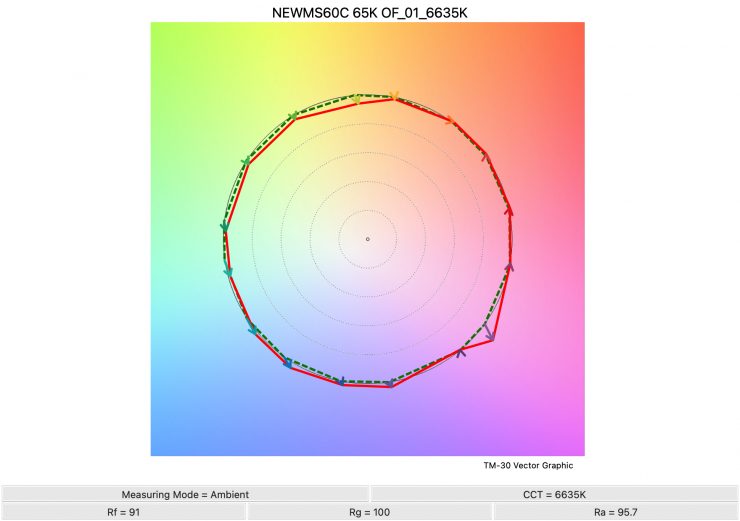
6500K
Above you can see the scores for the NEEWER MS60C at various CCT settings. Below I have listed the figures as well.
Here are the results:
| Rf | Rg | |
| 2700K | 96 | 101 |
| 3200K | 94 | 100 |
| 4500K | 93 | 101 |
| 5600K | 92 | 101 |
| 6500K | 91 | 100 |
The TM-30 scores were good across the board and it shows me that the light is pretty consistent at replicating accurate colors with full saturation.
SSI
SSI (Spectral Similarity Index) was developed by the Sci-Tech Council of the Academy. SSI gives me the ability to set any light as a standard, or use predefined standards (such as CIE D55), and then give other lights an SSI score based on how well they will match standards such as CIE D55. This way I can measure spectral response and compare it directly against an ideal light source. This is actually a much better test than recording CRI scores.
NEEWER MS60C 3200K
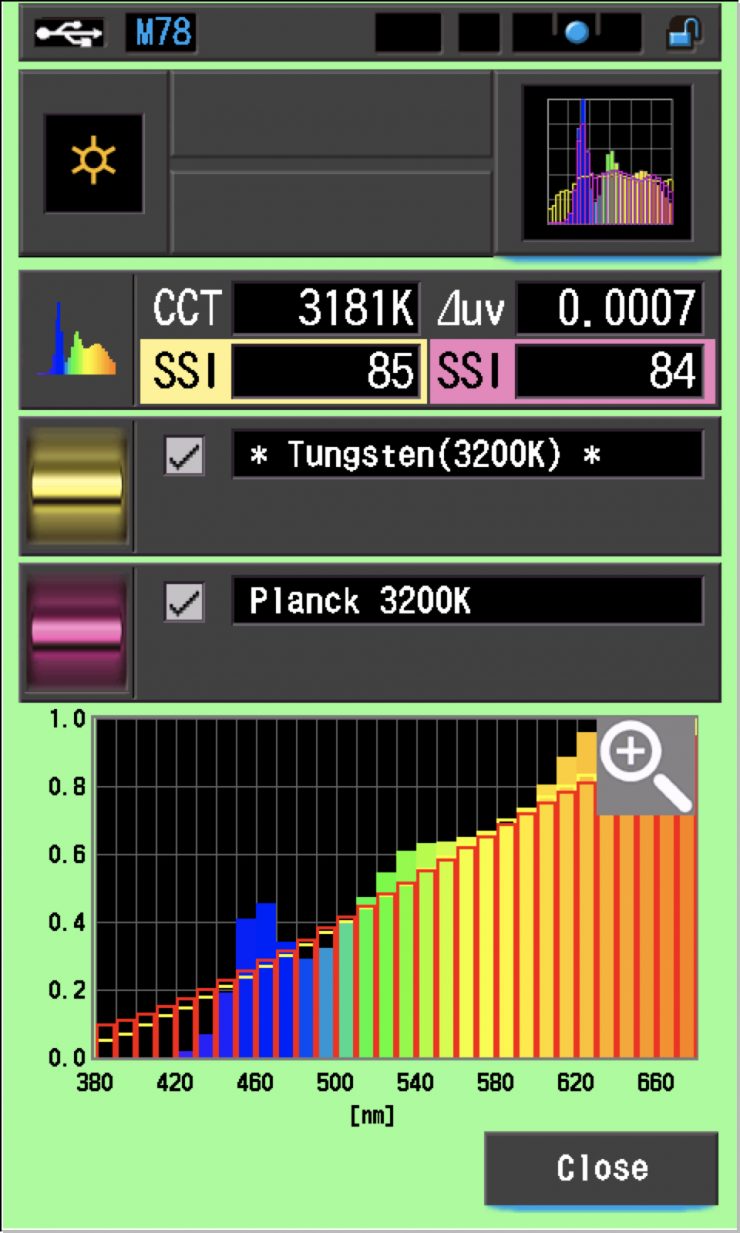
In this graph, the red bars indicate a perfect Planck 3200K source. The gold bars indicate a perfect 3200K Tungsten source. This lets us compare how close to a perfect 3200K lighting source the NEEWER MS60C is. Any SSI score in the high 70’s, low ’80s is very good for a 3200K LED light. The results for the NEEWER MS60C were excellent when used at 3200K. As you can see, LED lights have a hard time replicating colors below about 450nm.
NEEWER MS60C 5600K
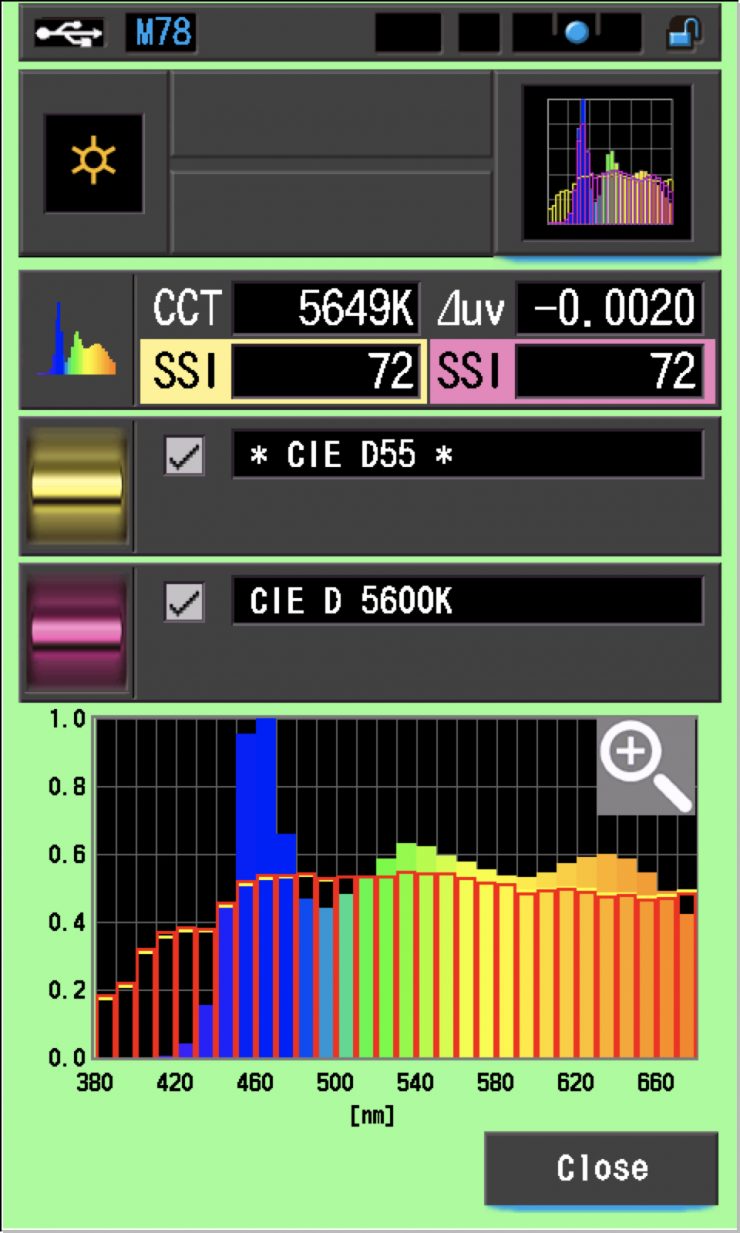
In the graph above the gold bars indicate a perfect CIE D55 source. The red bars indicate a perfect CIE D 5600K source. This lets us compare how close to a perfect 5600K lighting source the NEEWER MS60C is. A score in the low 70’s is typical for a 5600K LED source.
The main reason we want to record SSI scores is so we can see how well they match with other lights. As an example, I wanted to see how well the NEEWER MS60C matched the ARRI Orbiter and the Zhiyun MOLUS G300. Below you can see the results.

As you can see the Zhiyun MOLUS G300 was a closer match to the NEEWER MS60C than the ARRI Orbiter. Any score in the high ’80s and low 90s would be decent enough, but as you can see the light was way off being a match with an ARRI Orbiter.
As another test, I compared those same lights against the NEEWER MS60C at 3200K. Below you can see the results.
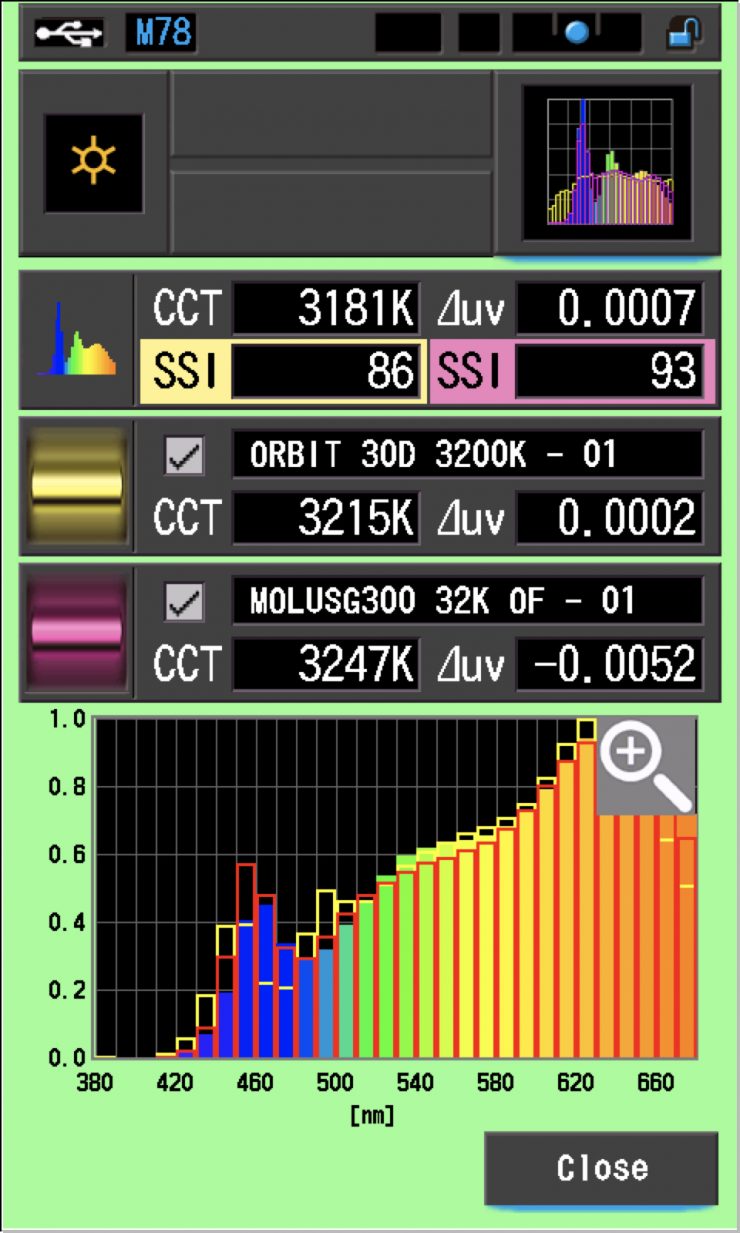
As you can see, the NEEWER MS60C was a much better match at 3200K than it was at 5600K. Very few lights from different manufacturers are ever going to be an exact match.
Ok, so let’s do some more comparisons. This time I wanted to see how well the NEEWER MS60C when used Open Face matched the light when it was used with its reflector.
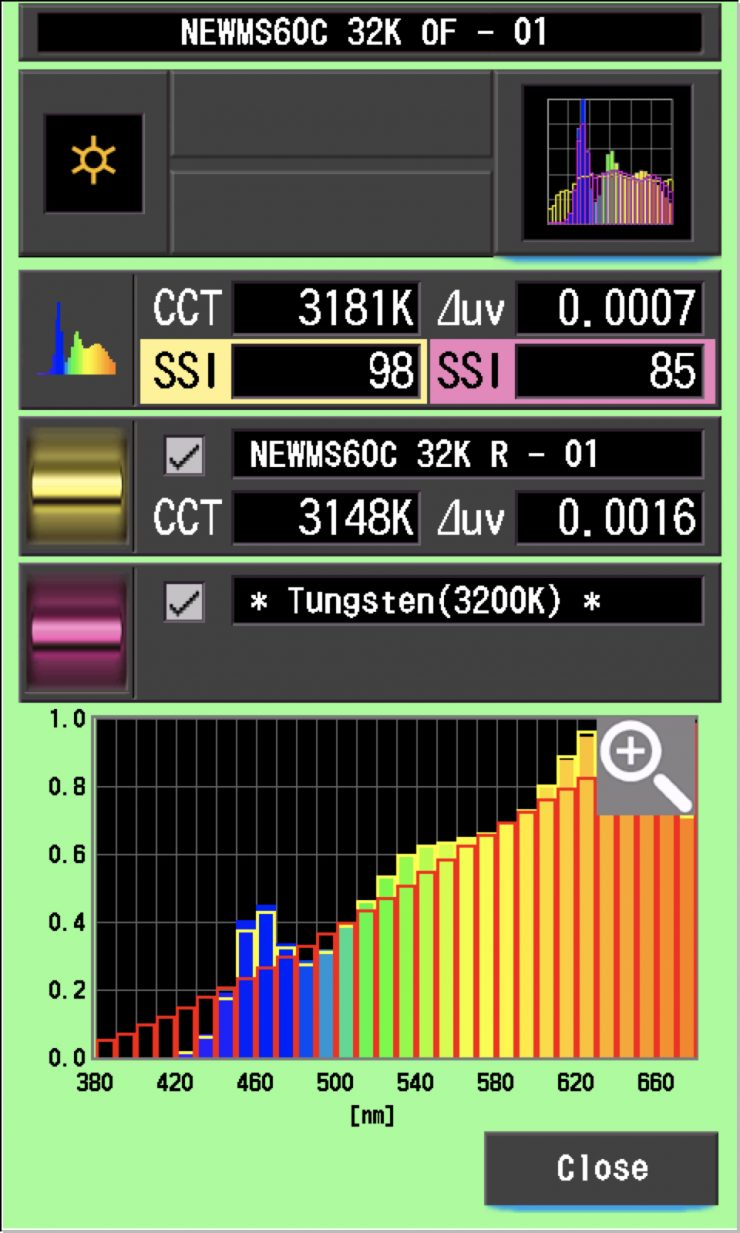
As you can see, with a score of 98, the light matches very well when used in different configurations. This tells me that if I had two of the NEEWER MS60Cs, and I used one open face and the other with a reflector, they would still work together well.
SSI tests are a great way of telling you what lights you own or use will work well together.
Spectral Distribution
5600K
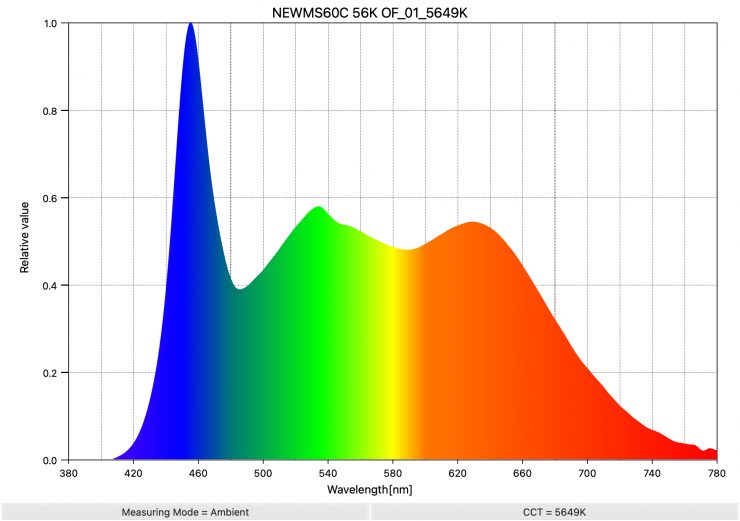
Above you can see the spectral distribution of the NEEWER MS60C when it is set at 5600K. The spectral distribution is decent enough.
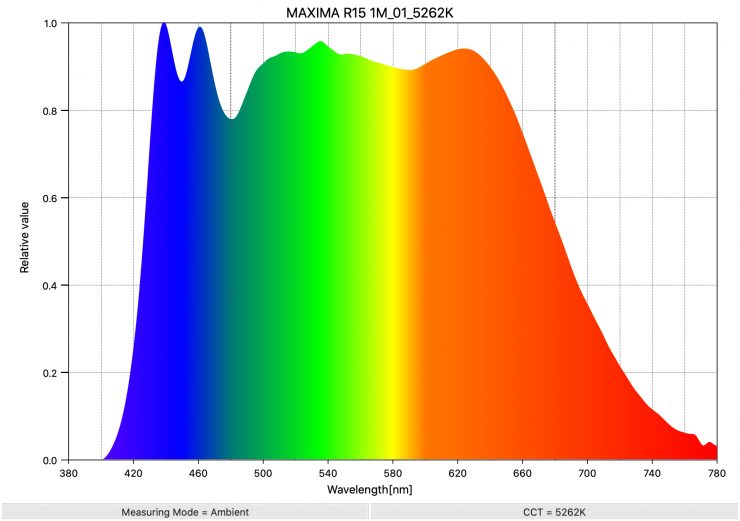
If you want to see what a really good spectral response looks like for an LED light at 5600K, above is the result for the Maxima 3.
3200K
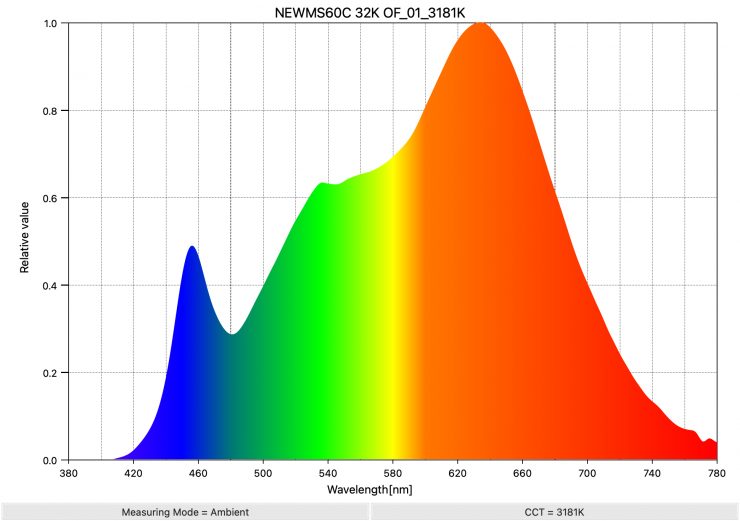
Above you can see the spectral distribution of the NEEWER MS60C when it is set at 3200K. The spectral distribution only had a very slight push towards green.
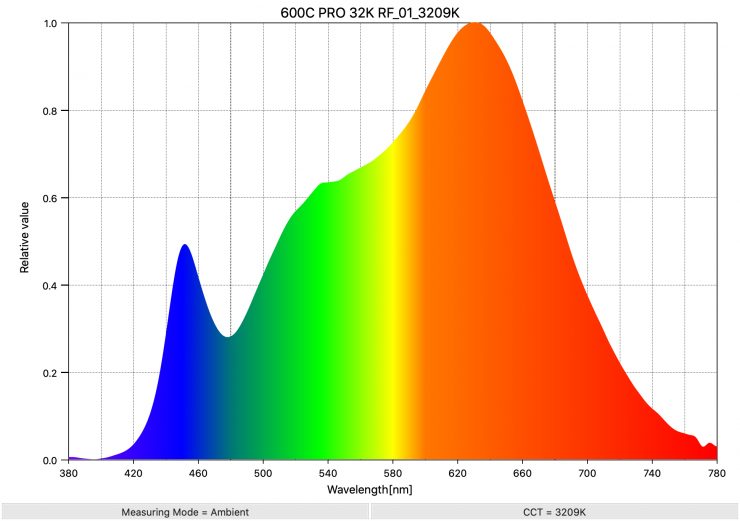
As a comparison, above you can see the spectral distribution of the Aputure 600c Pro when it is set at 3200K. The spectral distribution only has a very marginal push towards green, but overall it is very good.
Real-World Performance & Quality of Light
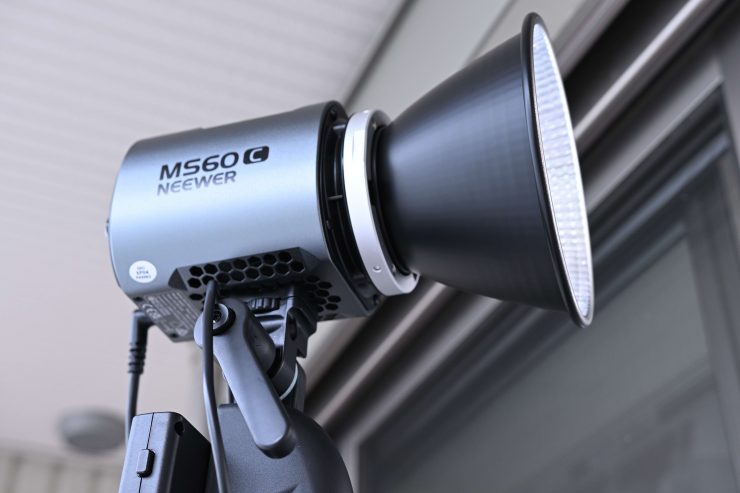
As I always say, photometric scores only tell you part of the story. So let’s find out if the scores from the NEEWER MS60C translate into good real-world performance.
The photometric results can only give me scientific data and it is much more important for me to see how the light looks and performs. Contrary to popular belief, if you are in the business of making lights you don’t want to try and achieve perfect scores because perfect scientific scores don’t equate to a light looking good. A good light should look good to a camera because, after all, that is what is capturing the image. Cameras and our eyes see differently and ideally, you want to use a light that looks good to your camera. There’s a bit of alchemy in knowing what to prioritize in order to render colors that appear accurate, natural, and pleasing. It’s not just about hitting certain numbers.
Lighting really comes down to how you use the light and having a great light isn’t suddenly going to produce better results for you unless you know what you are doing.
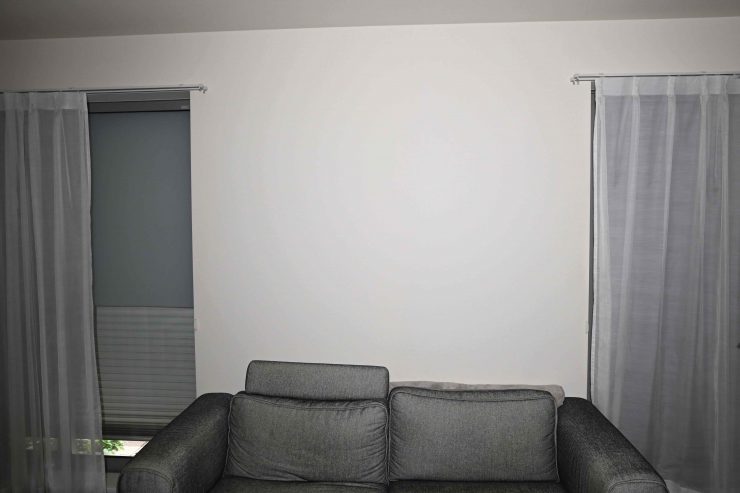

Reflector 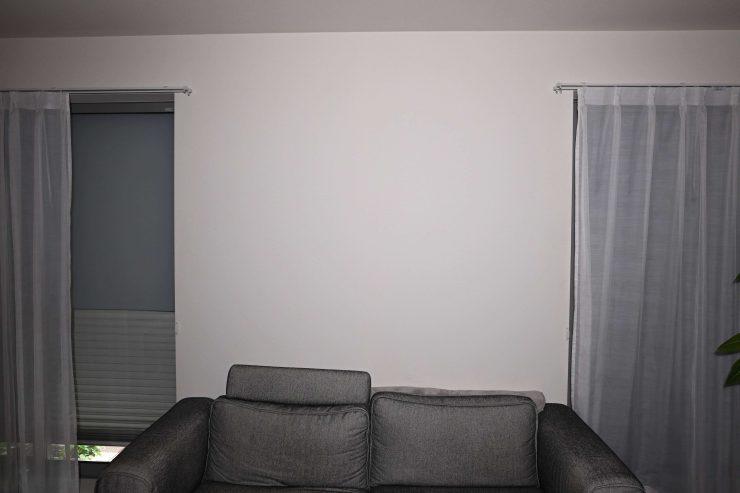
Open Face 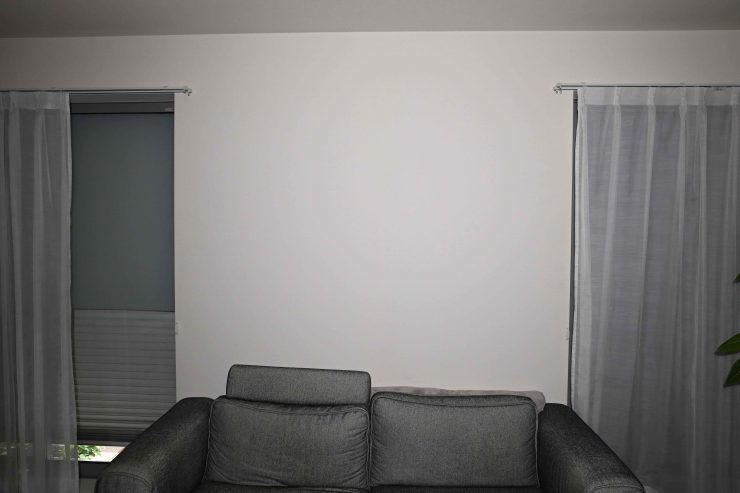
Reflector & run via batteries 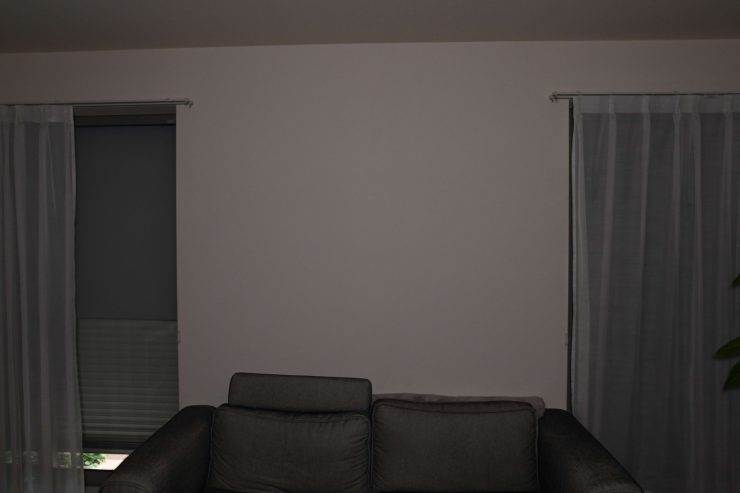
Reflector with two layers of diffusion
Above you can see the light being used at a distance of 3m /9.9′ from the wall. This is to give you an indication of what the strength and beam spread looks like when the light is used open face, with its reflector, and when using the two layers of included diffusion that can sit over the reflector. I have set the camera exposure exactly the same for all of the shots.
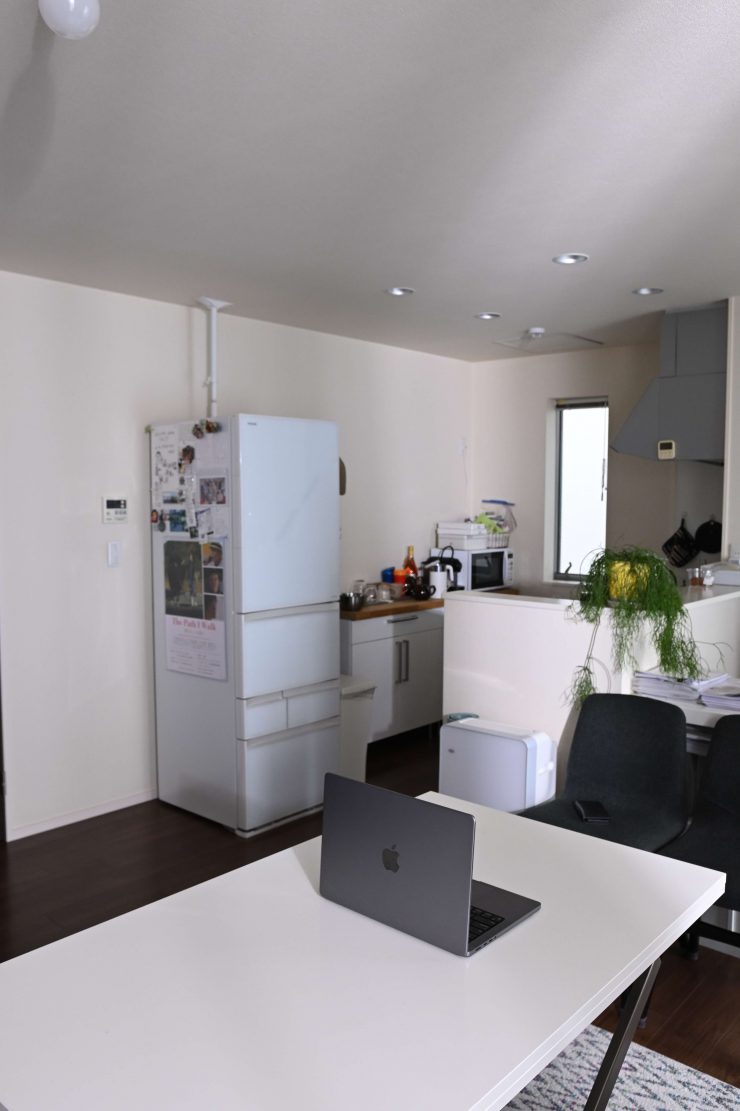

Reflector 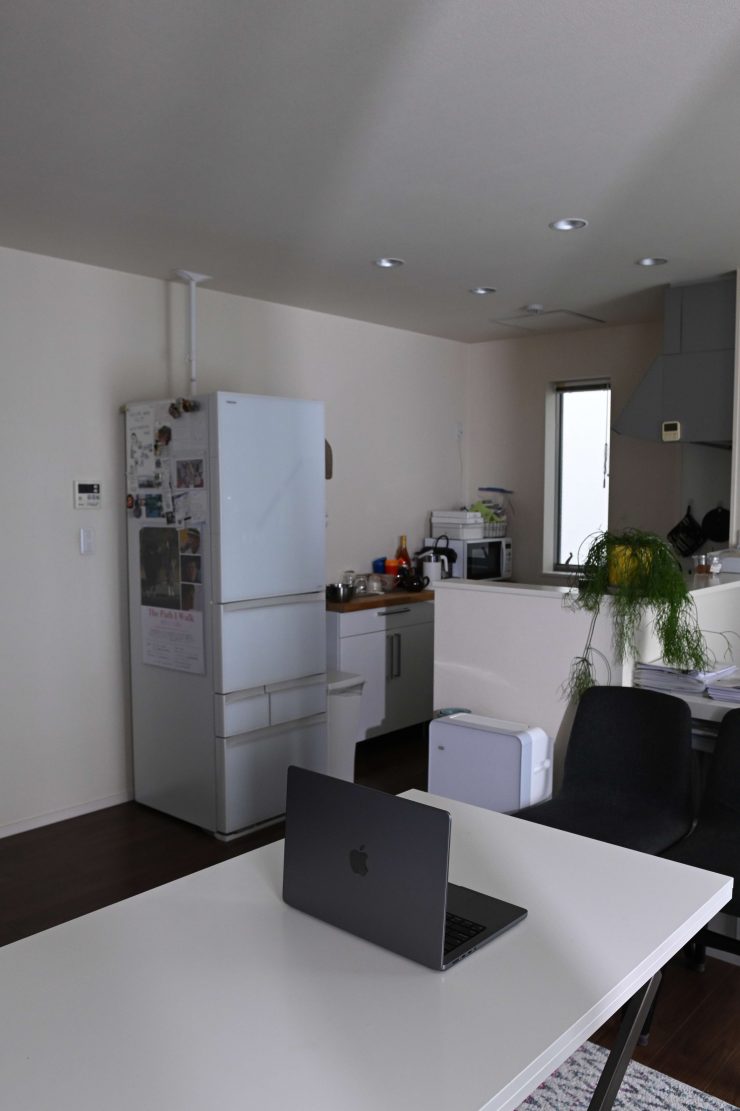
Open Face 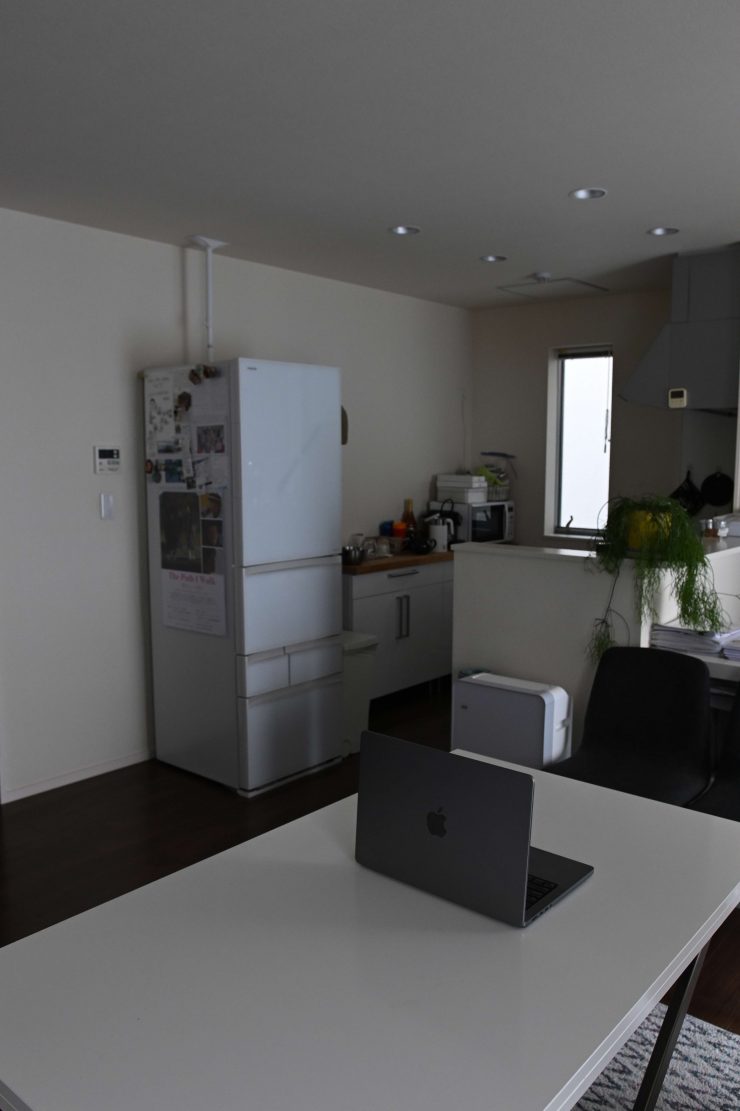
Light Off
Above you can see what the light looks like if it is placed outside and punched through a curtain sheer. I have set the camera exposure exactly the same for all of the shots.
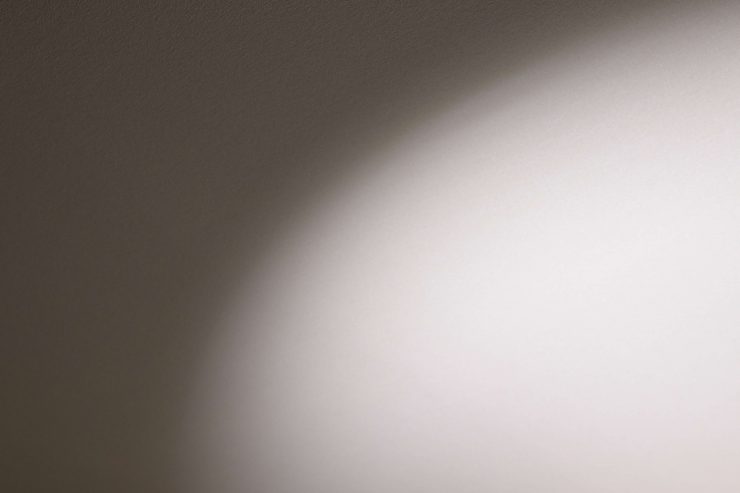
When using the reflector the edges of the beam have very minimal color fringing.
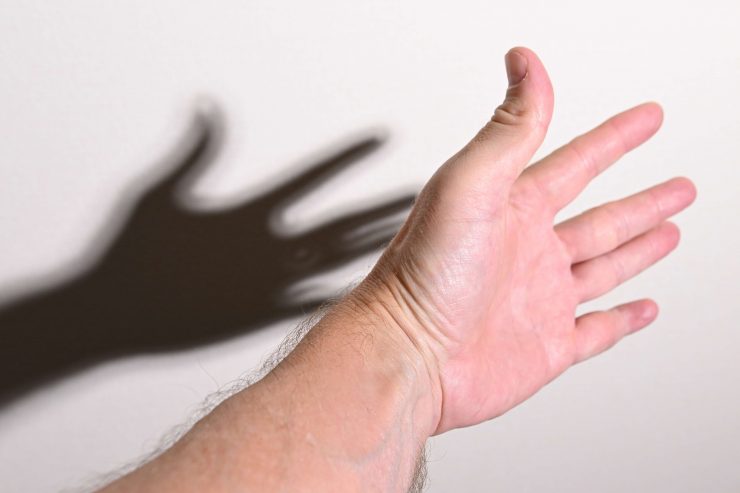
The shadows you will get when using the light with its reflector or open face are fairly well-defined.
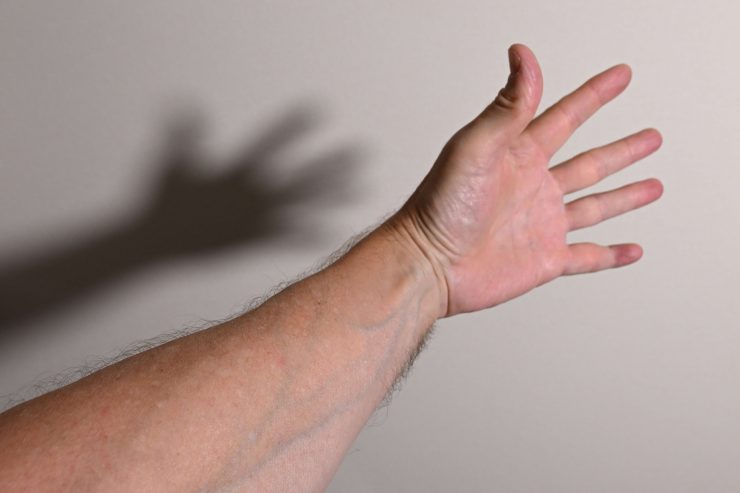
With the two layers of diffusion in front of the reflector the shadows won’t actually be that much softer because the diffusion is very close to the COB.
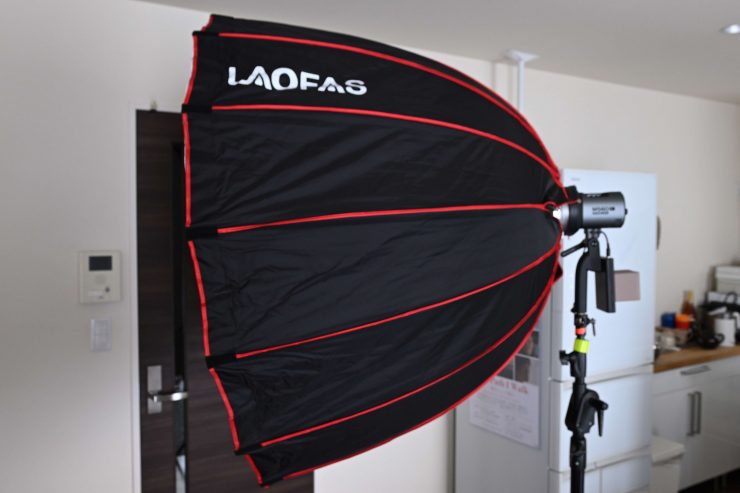
Surprisingly, the light’s Bowens-S mount adapter and the mounting handle can take the weight of a large softbox.
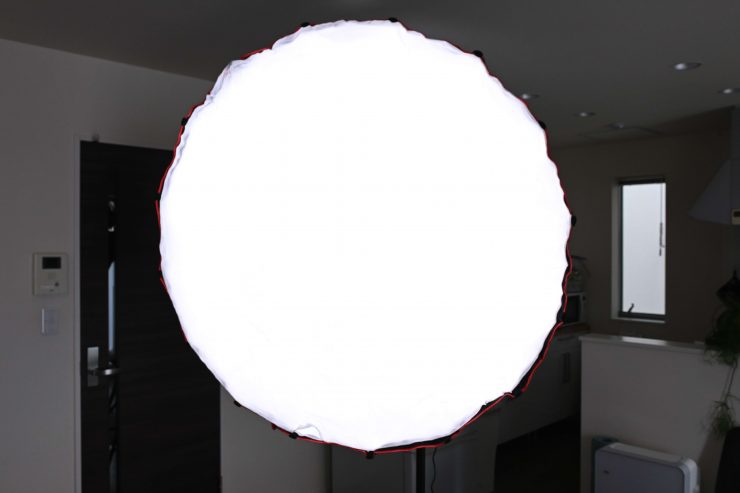
Because of the relatively wide beam angle of the light when using it open face, it does a pretty good job of filling up a large softbox. Now, you do need to be aware that you will lose a lot of output with a soft box of this size, and unless you are in a controlled environment, it will have to be pretty close to your subject.

With a big soft box, the light is capable of producing a nice soft and even source.
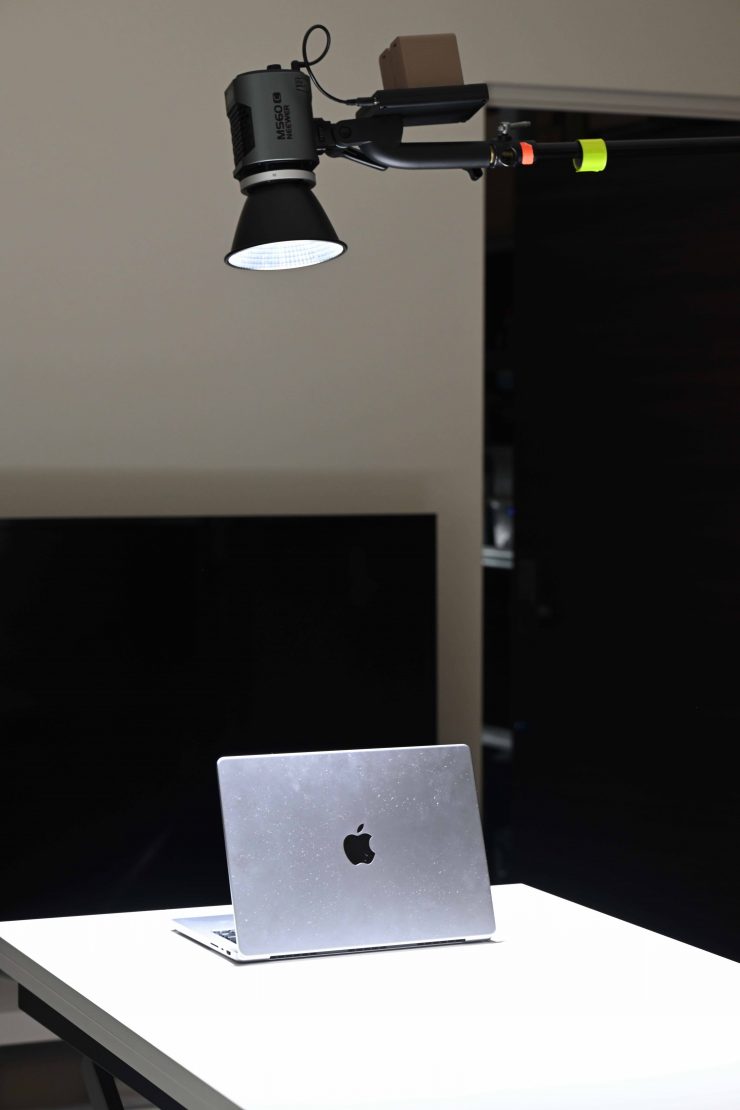
The fixture is light enough that you fly it out on an arm if need be.
Who is the NEEWER MS60C aimed at?
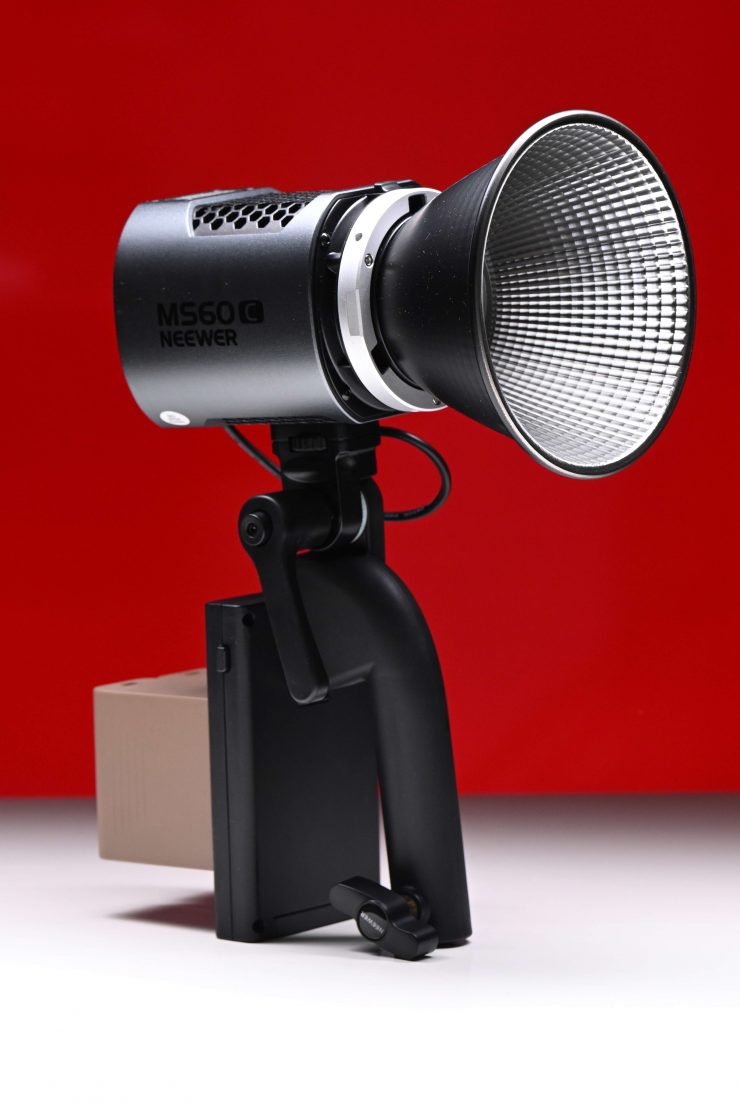
This is certainly a fixture that could be used for lots of different applications, by lots of different people. However, it is pretty clear that it is being targeted at content creators and people on tight budgets.
The ability to use the light as a soft source, hard source, or anything in between makes it an appealing option, especially given its small size and weight. The ability to run it via flight-safe batteries is also very appealing.
Price & Availability
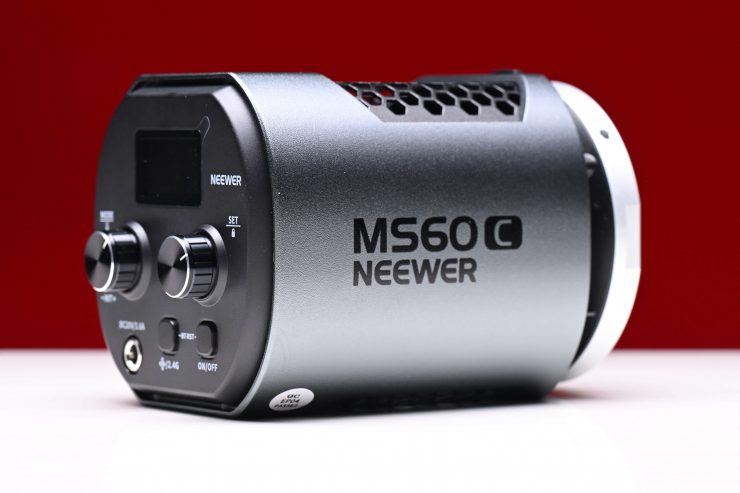
The NEEWER MS60C retails for $209.95 USD, which makes it very good value for money. B&H currently has the Battery kit version (which includes two NP-F batteries for $209.99 USD. For the extra 4 cents, I would definitely get the kit with the batteries!
Below you can see how the price compares to some of the competition.
| PRICE | |
| NEEWER MS60C | $209.99 USD |
| Nanlite Forza 60C RGB LED Monolight | $699 USD |
| Sirui C60R RGB LED Monolight | $359 USD |
| LituFoto U8R RGB LED Monolight | $179 USD |
| COLBOR Wonder W60R RGB LED Monolight | $169 USD |
| Zhiyun MOLUS X60RGB RGB LED Monolight | $249 USD |
Accessories

NEEWER makes a range of accessories for the light. Also because it comes with a Bowens-S mount adapter you can also utilize a wide array of affordable lighting modifiers.
Conclusion
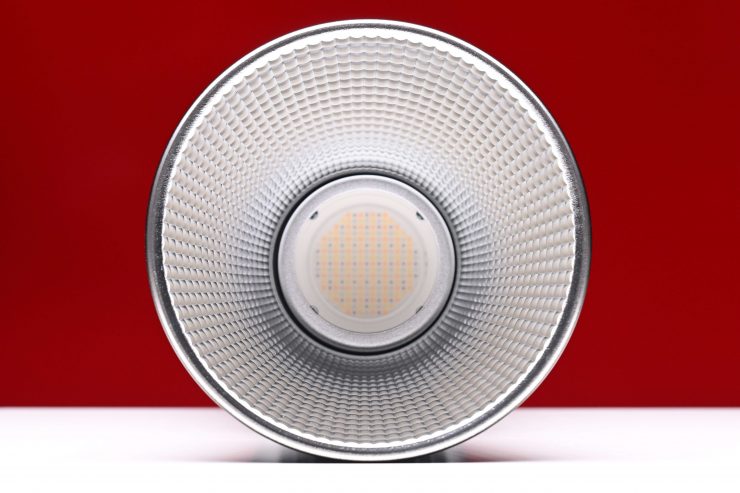
The NEEWER MS60C is an excellent fixture for the money. It has a decent amount of output, it is CCT accurate across its range, and it is small and compact.
The onboard operating controls are very basic, but they get the job done. I found the app was easy to navigate and make changes.
I like how you can run it via two NP-F batteries, but you won’t get 100% output as it is limited to around 80%.
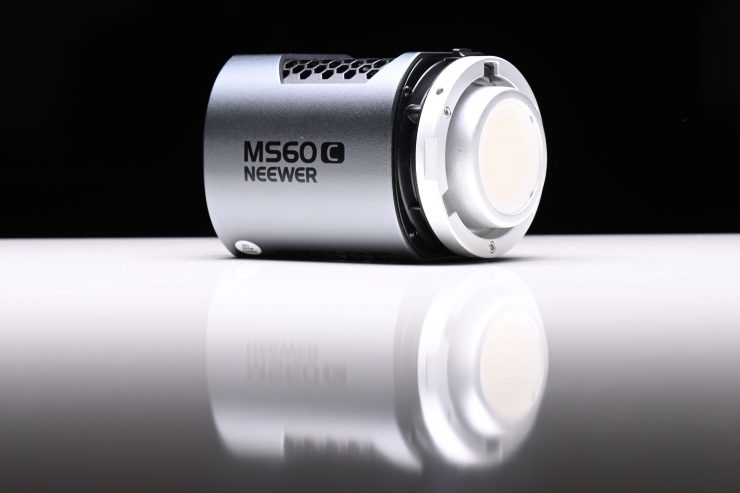
The output is decent, but once you start to diffuse the light then you lose a lot of it. When combing this fixture with a softbox or lantern it is going to have to be placed fairly close to your subject unless you are in a very controlled environment.
The NEEWER MS60C is certainly a capable light. It offers a lot of nice functionality in a compact and lightweight package that won’t empty your wallet. A lot of the affordable fixtures on the market are now very good and they can give a lot of the more expensive offerings a run for their money at substantially less money.

